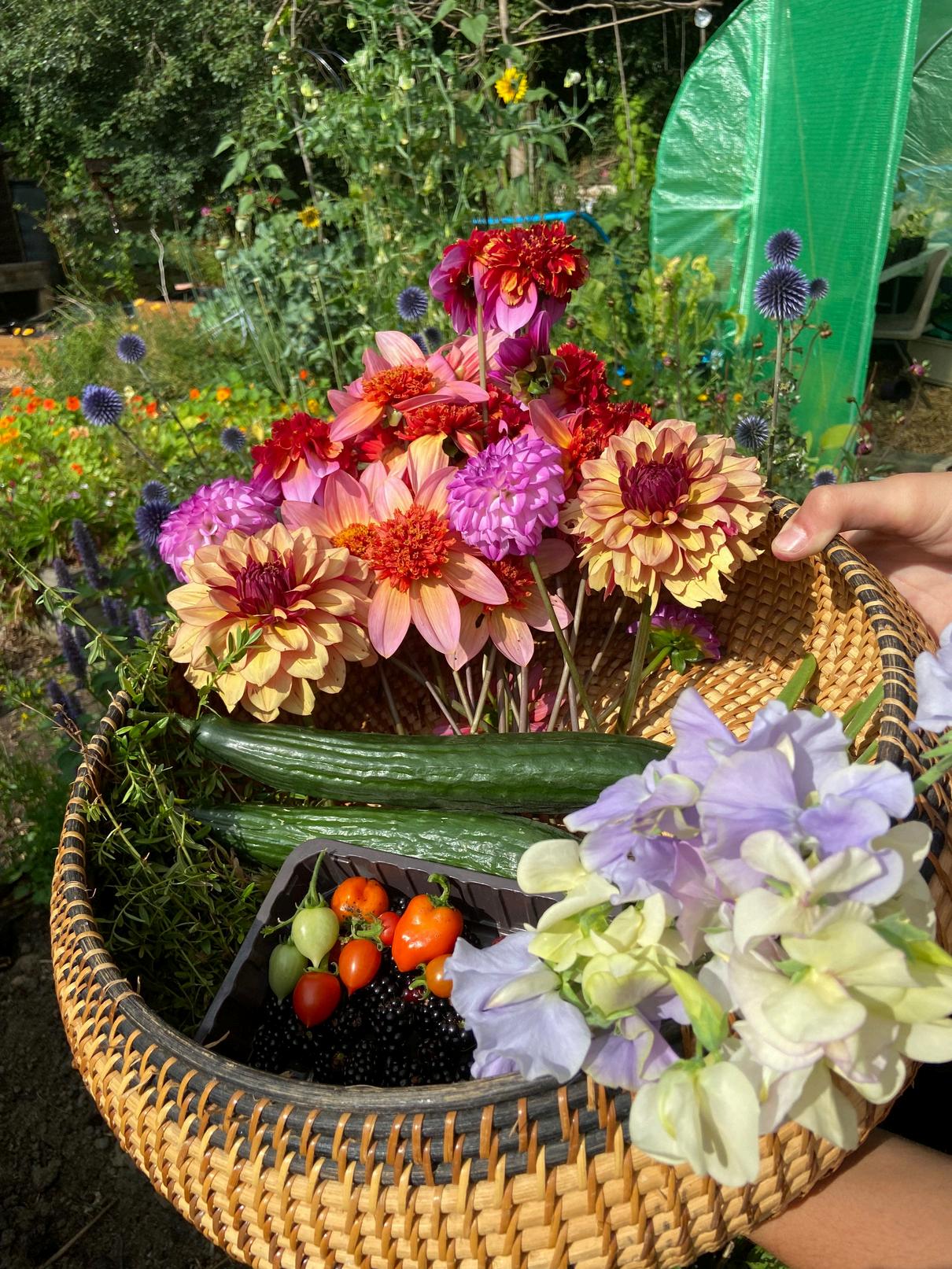

gardenfolk gardenfolk the the mag mag

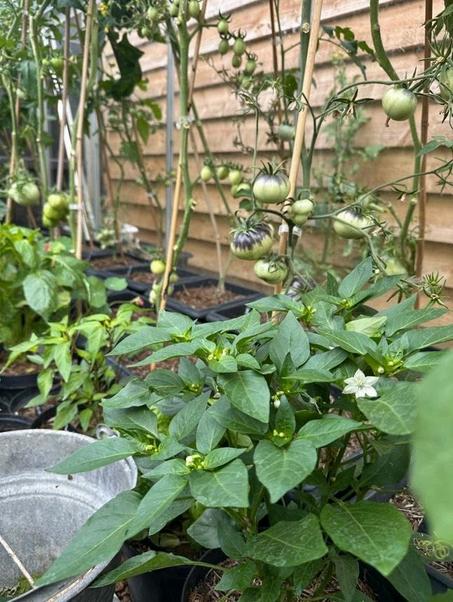
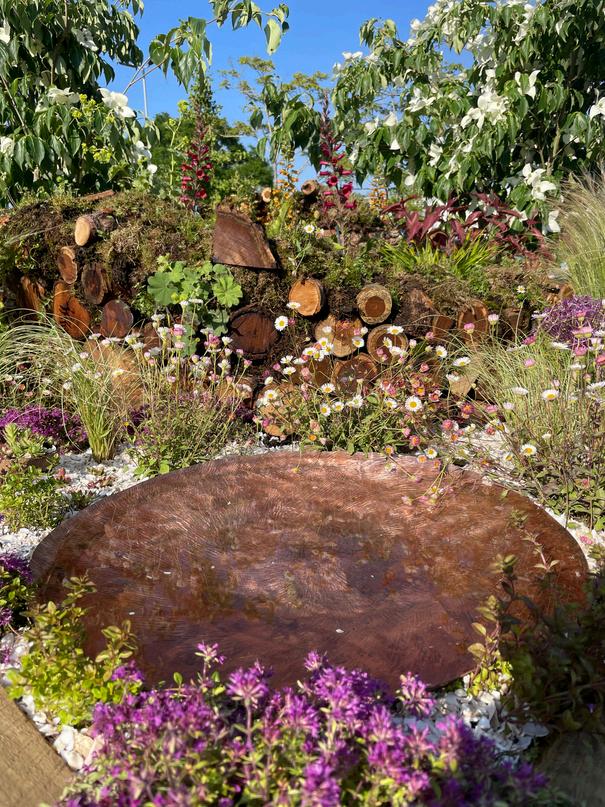
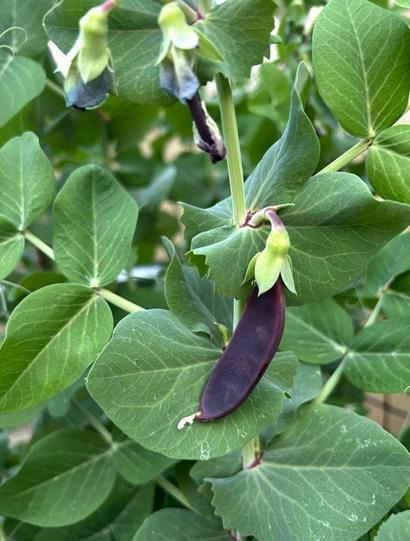
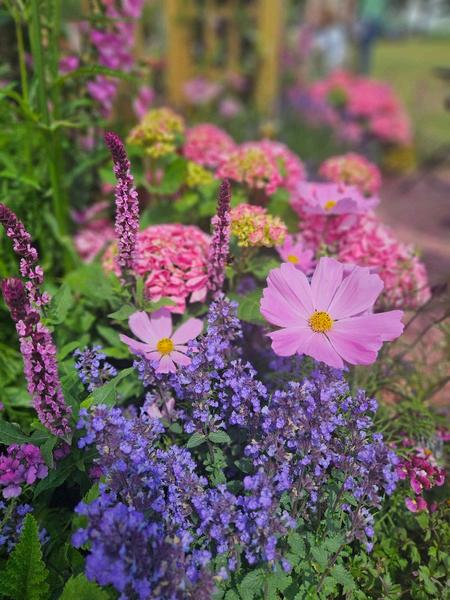
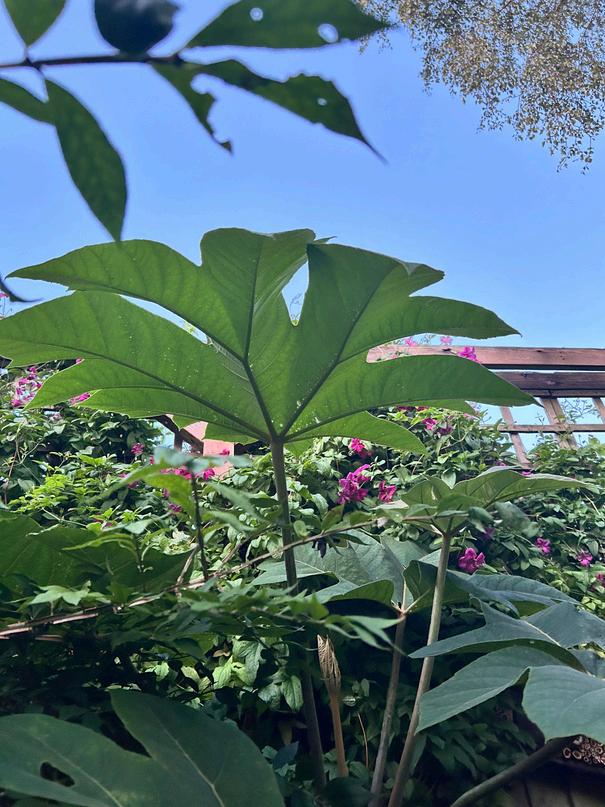
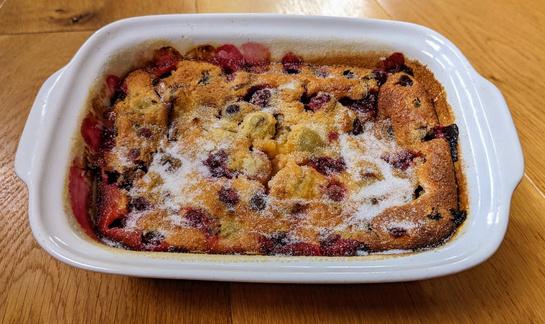
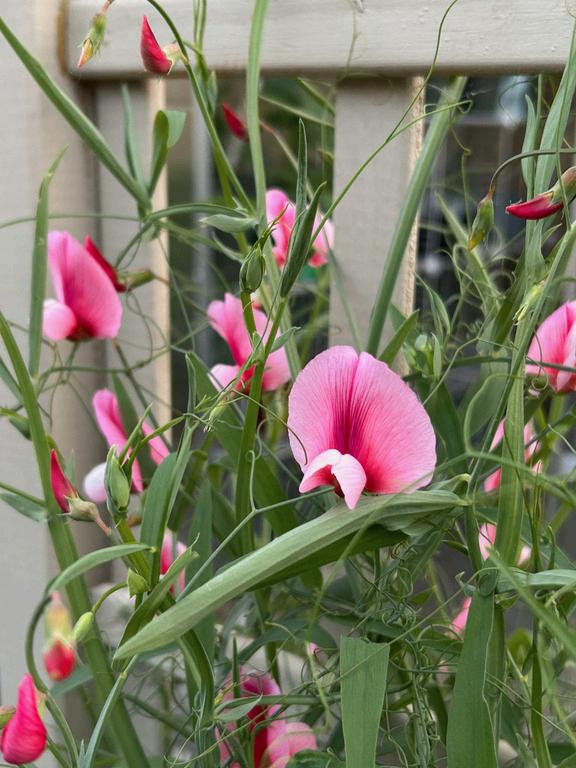

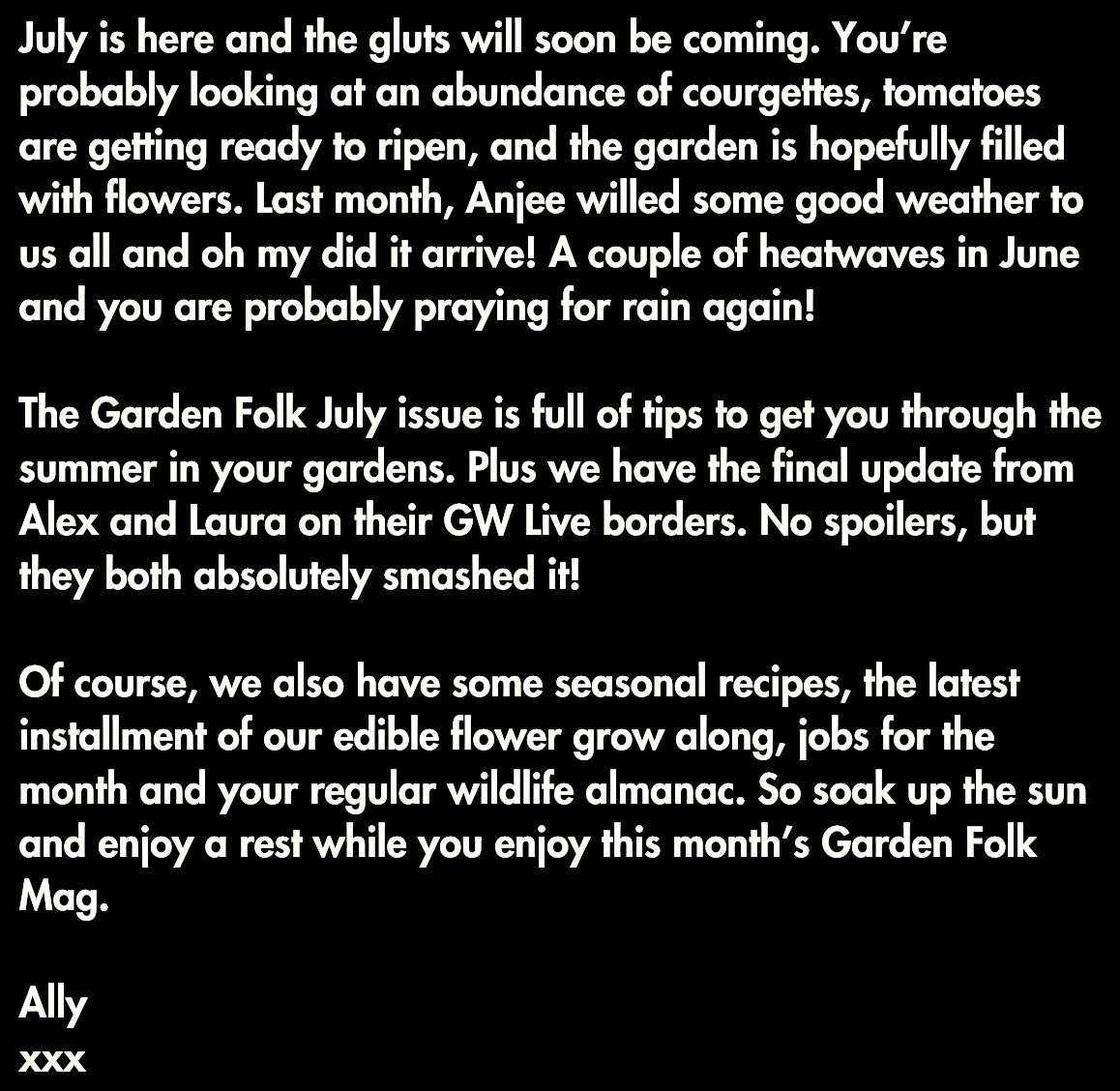
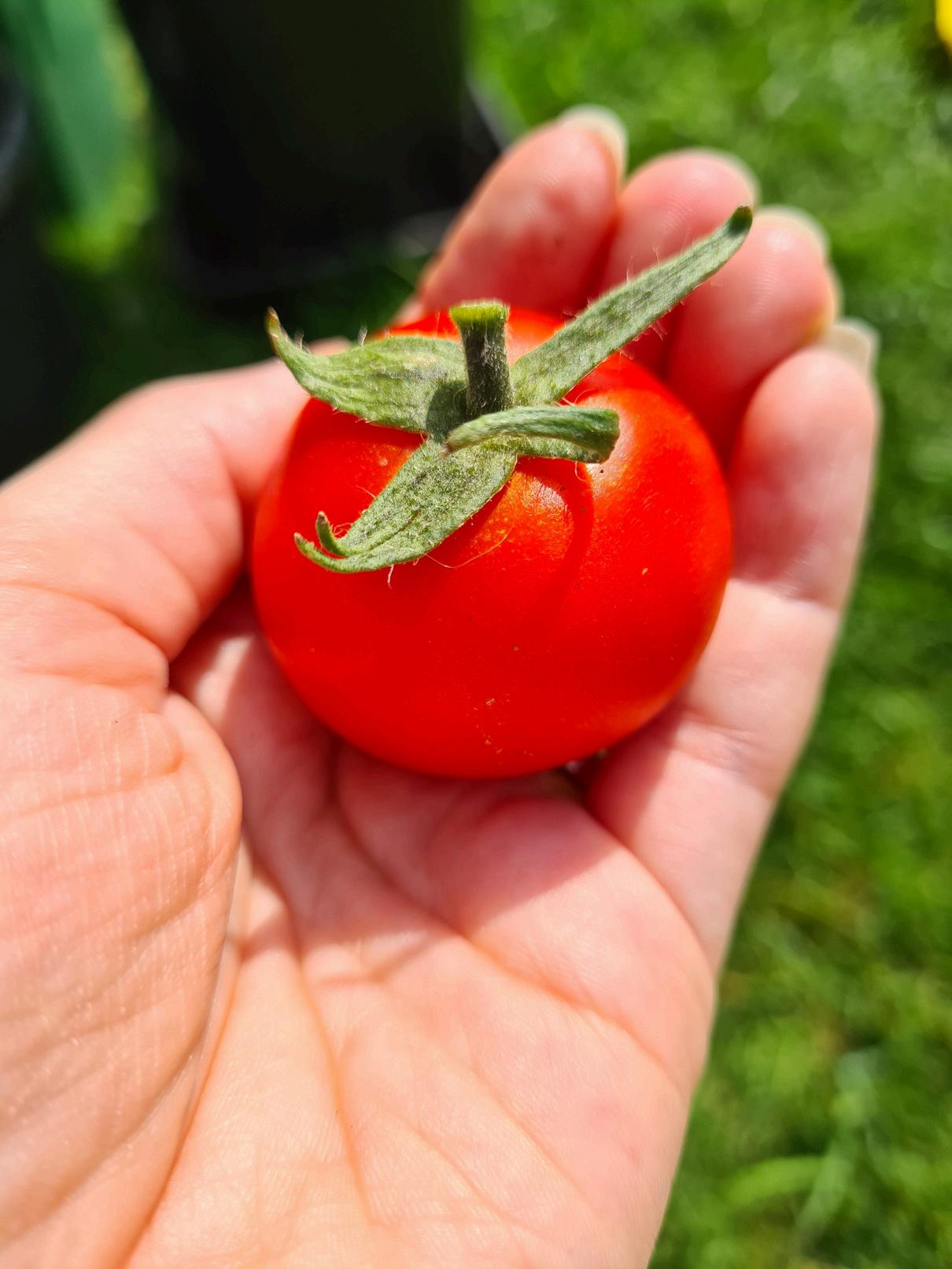


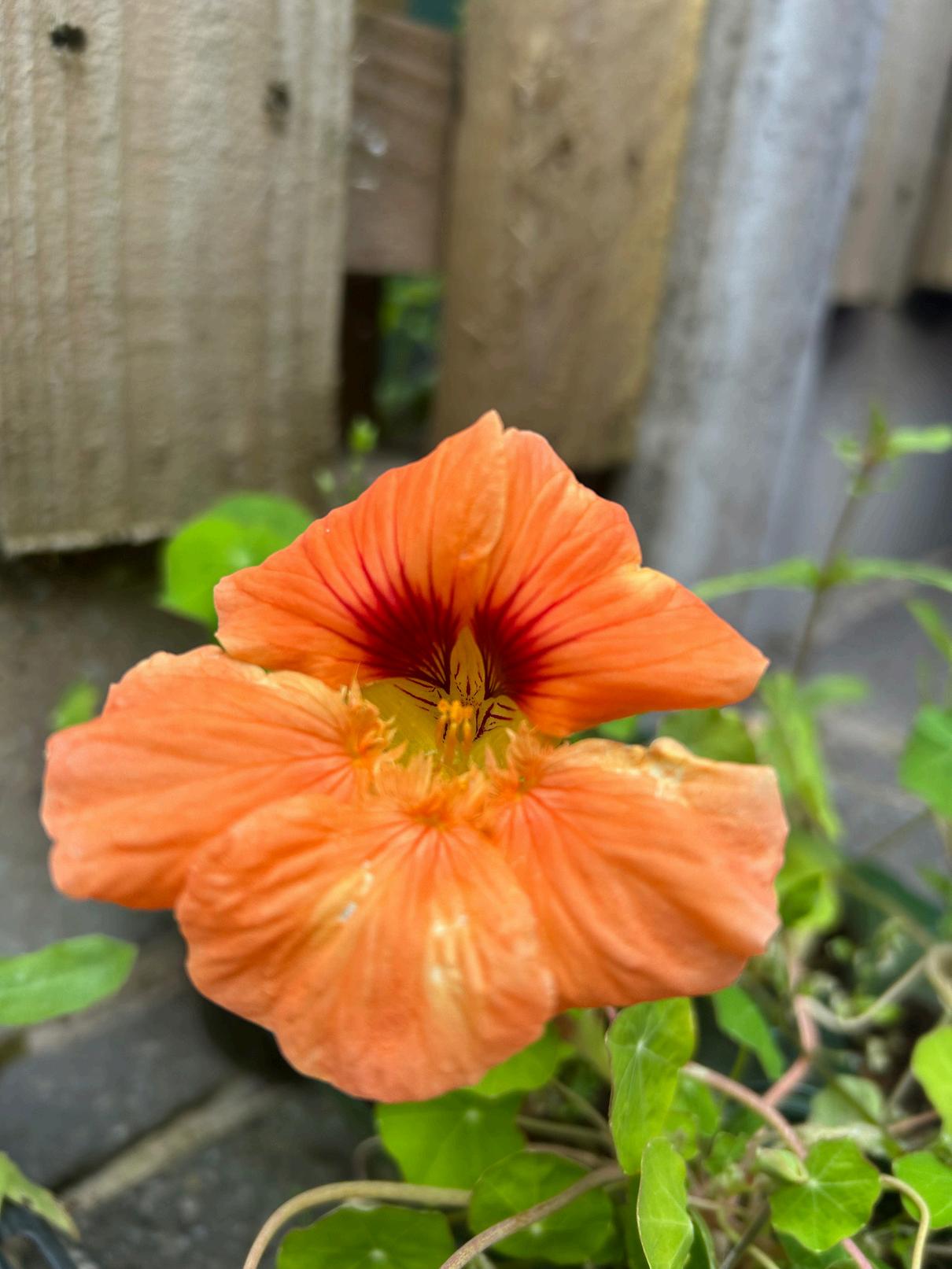

This year, as part of this year ’ s Garden Folk grow along, we are growing a range of our favourite edible flowers and sharing our progress with you through the magazine and our social media. We're growing: Cornflowers, Nasturtiums, Pansies, Calendula, Amaranth, and Borage from The Hampshire Seed Company.
For those of you who have been sowing and potting on along with us, you should now have a range of lovely plants that are starting to produce flowers
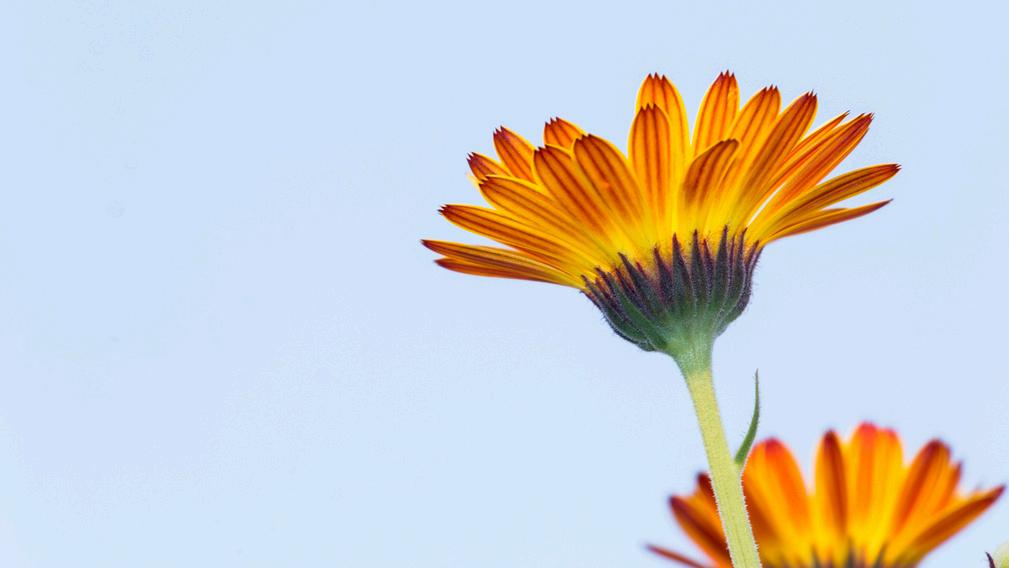
All of them can be enjoyed sprinkled on salad, sandwiches, cakes, just about anything really The Nasturtiums though have a particularly delicious way of being enjoyed- in PESTO!
Leaves, flowers, green seed pods, and stems can all be used to make this taste of summer and it’s supper easy to make
Nasturtium Pesto
3 cups of loosely packed nasturtium leaves/ flowers/ stems 1/2 cup extra virgin olive oil
3 Cloves of garlic (peeled)
1/2 cup of your nuts or seeds of choice (flaked almonds or pumpkin seeds are tried and tested but you could experiment with any you like.)
1/3 cup shredded or powdered hard cheese (parmesan or similar)
1 Thoroughly wash and dry the leaves/flowers Nasturtiums are well known as an attractant for bugs (which is one of their benefits in the garden because they draw them away from your prize flowers and veg)
2 Toast the nuts or seeds in a dry pan for a few minutes to develop the flavour
3 Add all the ingredients to a blender or food processor and blitz until smooth
4 Ladle into jars and pop in the fridge
5 The nasturtium pesto should last for up to 2 weeks.
You can adapt this recipe to use up any soft herbs or robust salad leave- rocket and mustard leaves also work well, and you can add chilli if you like it extra hot.
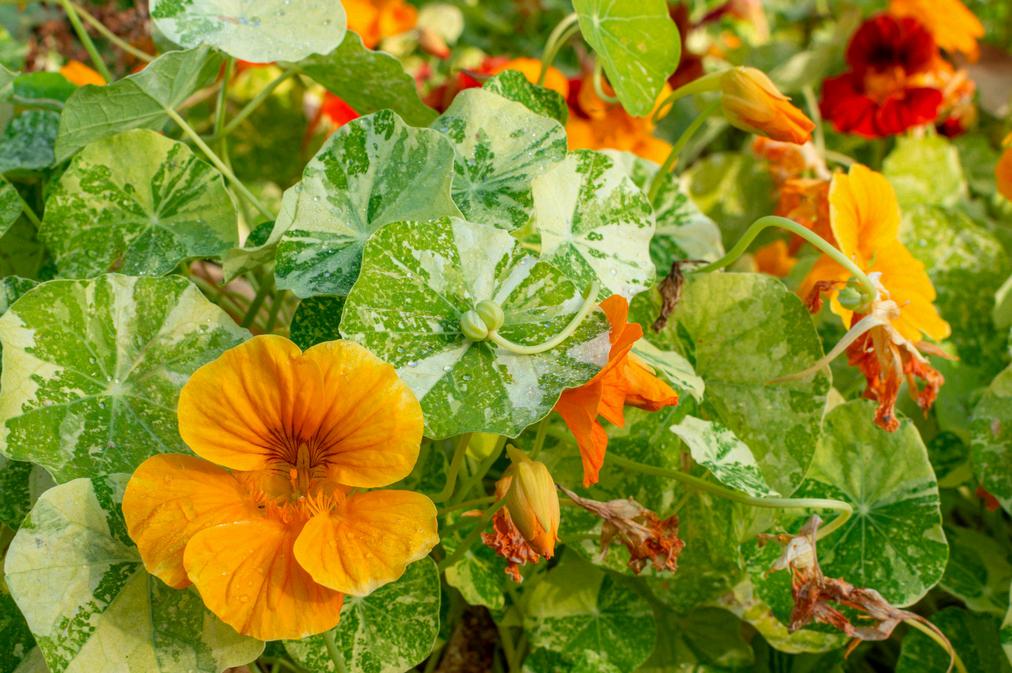
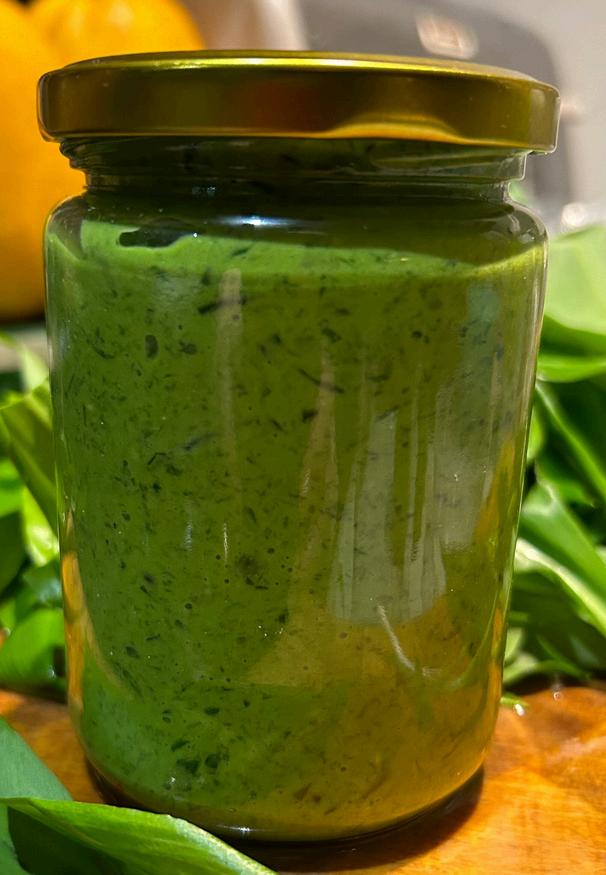
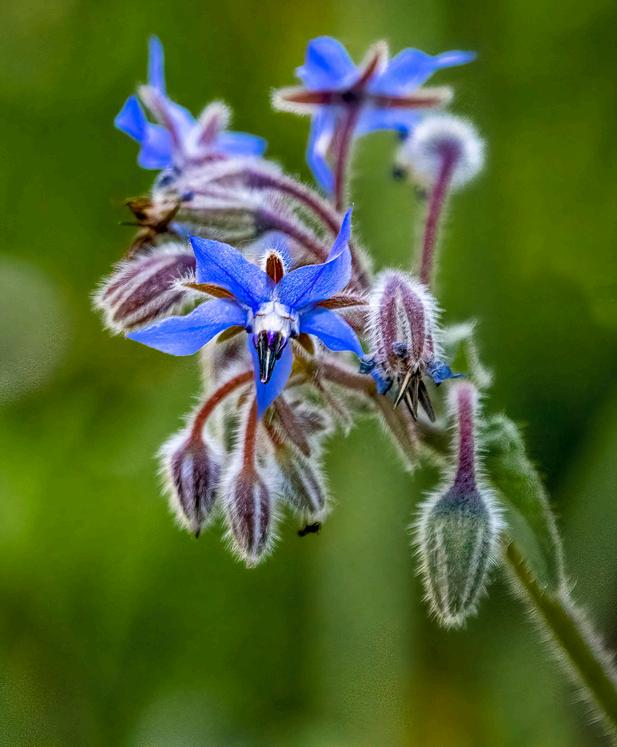
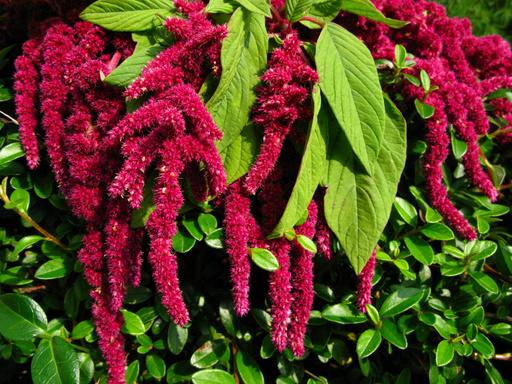
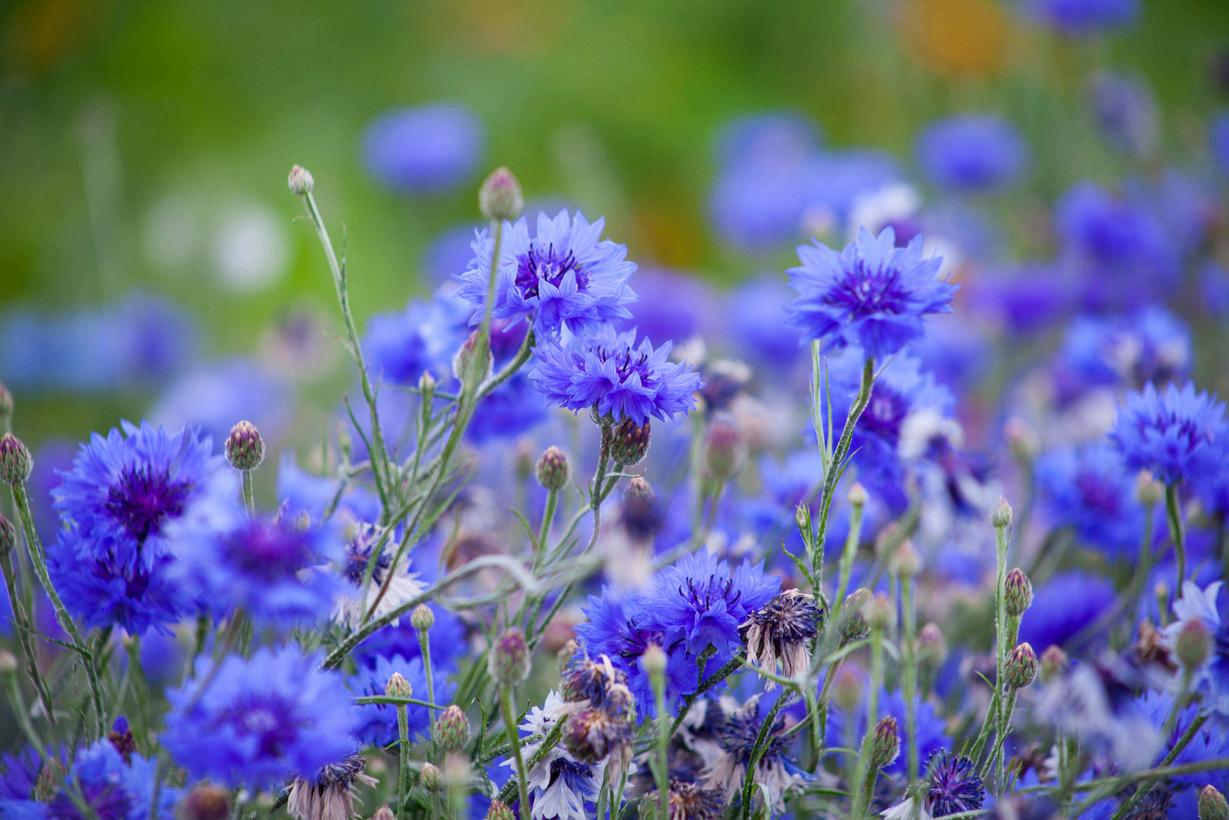
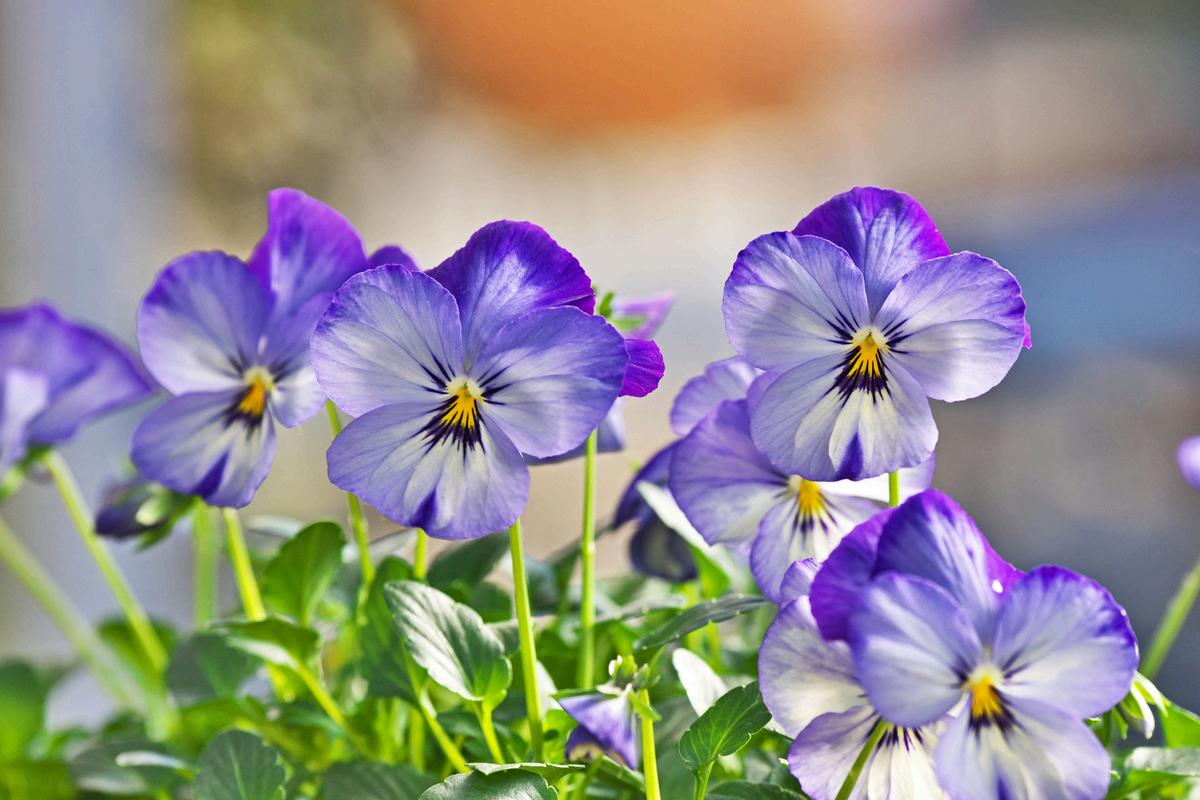
Do remember that not all flowers are edible, some plants with edible flowers may not have edible leaves or roots and some flowers such as Foxgloves, Azaleas and Lily of the Valley are deadly poisonous!
Always do your research and don't eat it if you're not completely sure it's safe! You can find an extensive list of harmful plants here
Borage
Cornflower
Pansies
Nasturtium
Amaranthus
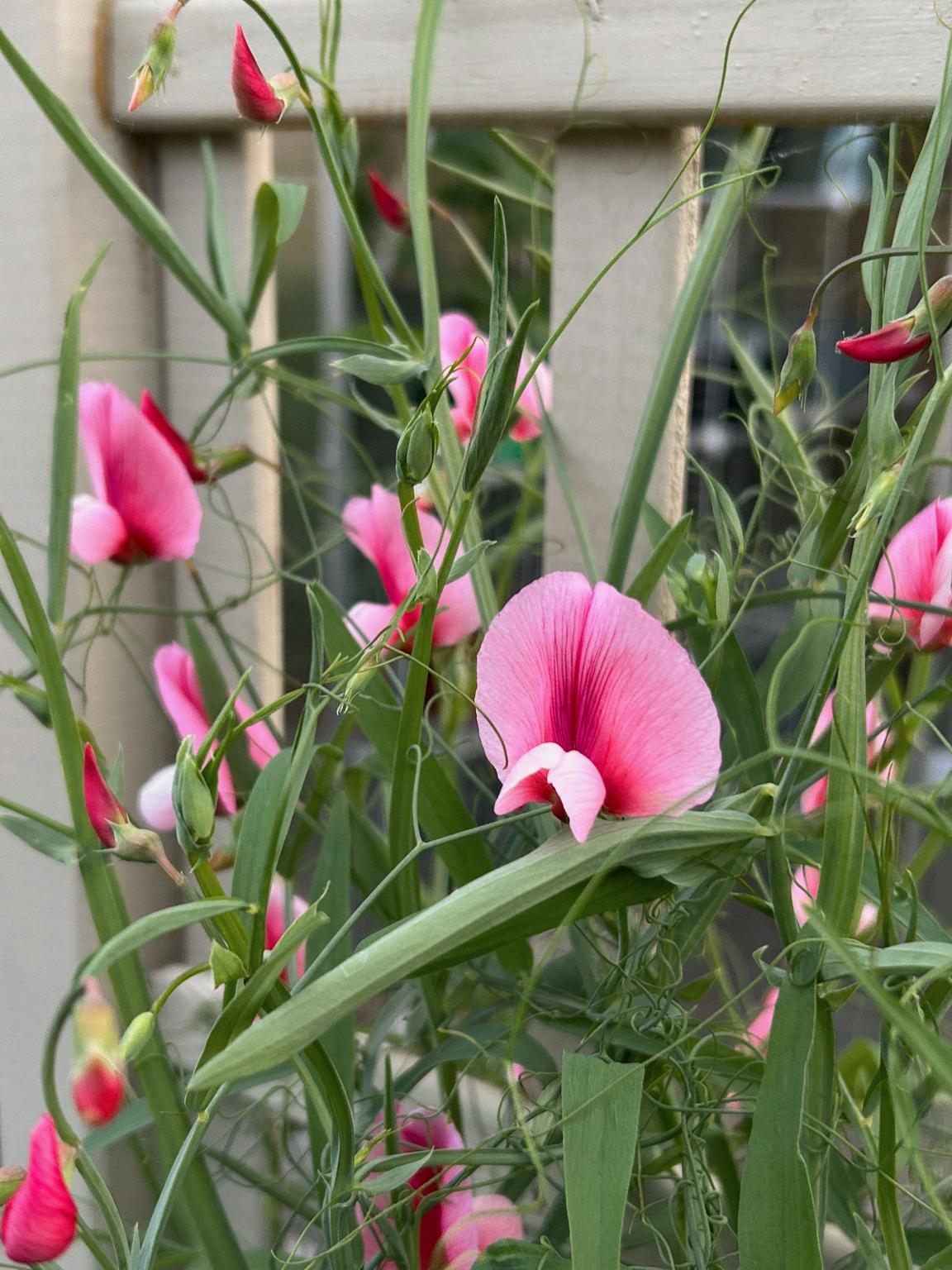
Kerry’s Kerry’s Kitchen Garden Kitchen Garden
I feel like a bit of a green fingered fraud this month because I’ve hardly spent anytime gardening at all Don’t get me wrong, I’ve been in the garden everyday but I’ve not actually done any jobs other than water it The heat has been relentless and the severe lack of rain has made watering duties particularly overwhelming I am however overachieving on my daily step count so that’s a small win off the back of this but if I'm being honest, I think I’ve lost my gardening mojo currently because of it.
People talk about a lot about the June gap when it comes to pollinators but I’ve felt this gap on a human level too. The bustle and panic of spring sowing and growing has left me feeling a bit drained. Team that with the endless watering duties at the allotment and home, the mad heat we ’ ve had, being a mum; supporting my eldest during his mocks, applying for EHCP’s, running a home, working, well I just feel as frazzled at the burnt elder tree at the top of my garden So, for the last couple of weeks I’ve let the garden give back to me whilst I take a break
Part of my break was spent at Gardener’s World Live helping Kate on her showcase garden ‘The Nectary’ There is always so much inspiration to take away from these show gardens, in-fact it’s the very reason I began creating our home Kitchen Garden Kate’s designed a wonderful nectar rich haven for pollinators and celebrated UK artisans, craftsmanship and sustainability The garden was planted with early summer blooming herbs, vegetables and flowers to bridge the June gap for pollinators The garden even included its very own hive of bees I also got to work alongside the wonderful Nic from Collie Flowers who sent me home with my very own radish harvest and seeds to grow so we shall see if she can lift my curse of being a radish reject.
The Nectary really got me thinking about what I have growing at home at this time of year and what the pollinators are drawn to. The edible flowers have been providing a great source of nectar especially the nasturtiums and calendula. Both of these flowers have been firm favourites of mine too for adding to lunches. So, when I’m picking for my own plot to plate dishes, I’ve made sure to leave enough behind for them Tomato flowers, sweet peas and some bolted broccoli have also kept the pollinators happy
The other part of my break involved unpacking the most stylish water butt I will likely ever own It should have been connected to the greenhouse by now but I’ve spent more hours than I’d like to admit trying to source the right gutter connectors You’d think the greenhouse company would have sold their own but that would be too helpful it seems I did manage to find a 3D printer on eBay who has made some for me and they should be arriving any day now So maybe next time I’ll have my greenhouse set up complete
Kerry’s Kitchen garden is booming with life now.
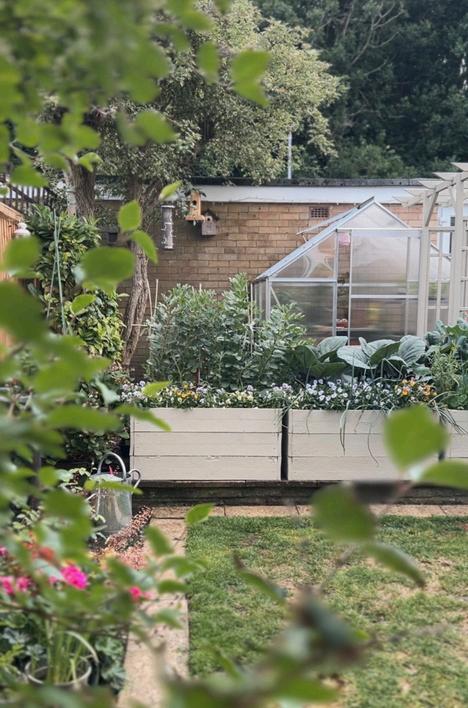
All of the hard work of spring is paying off with these harvests.
By Kerry Tomlinson
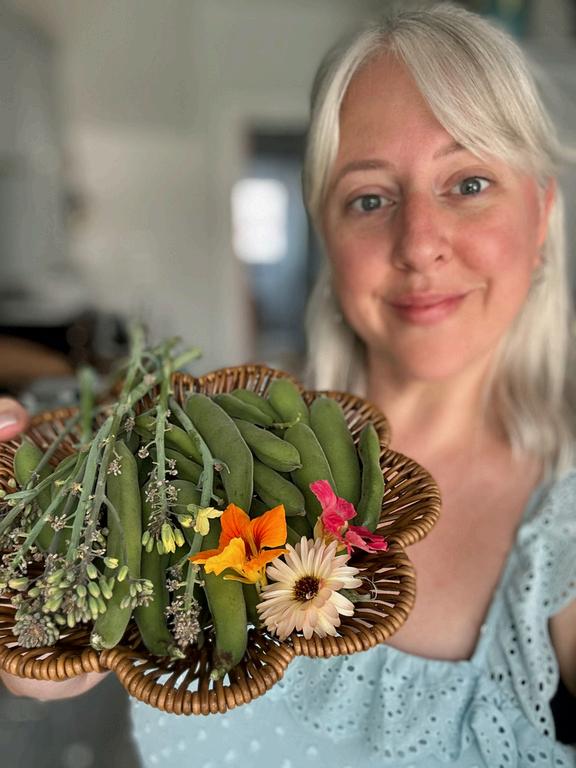
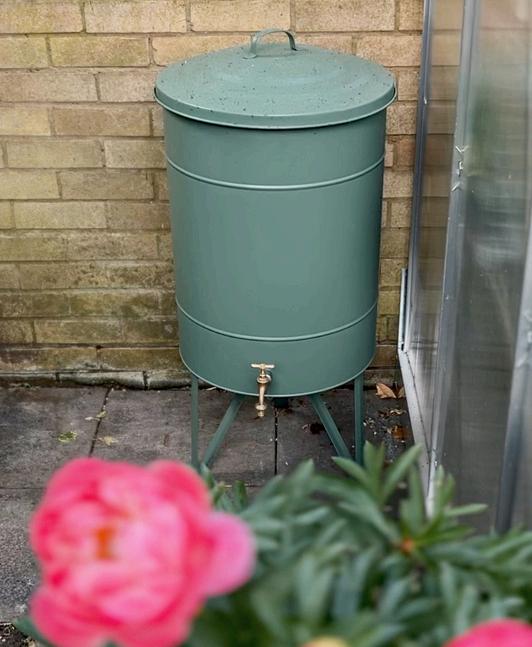
Is that not the fanciest water butt you have ever seen!
@lottie thyme
How are your greenhouse plants faring?
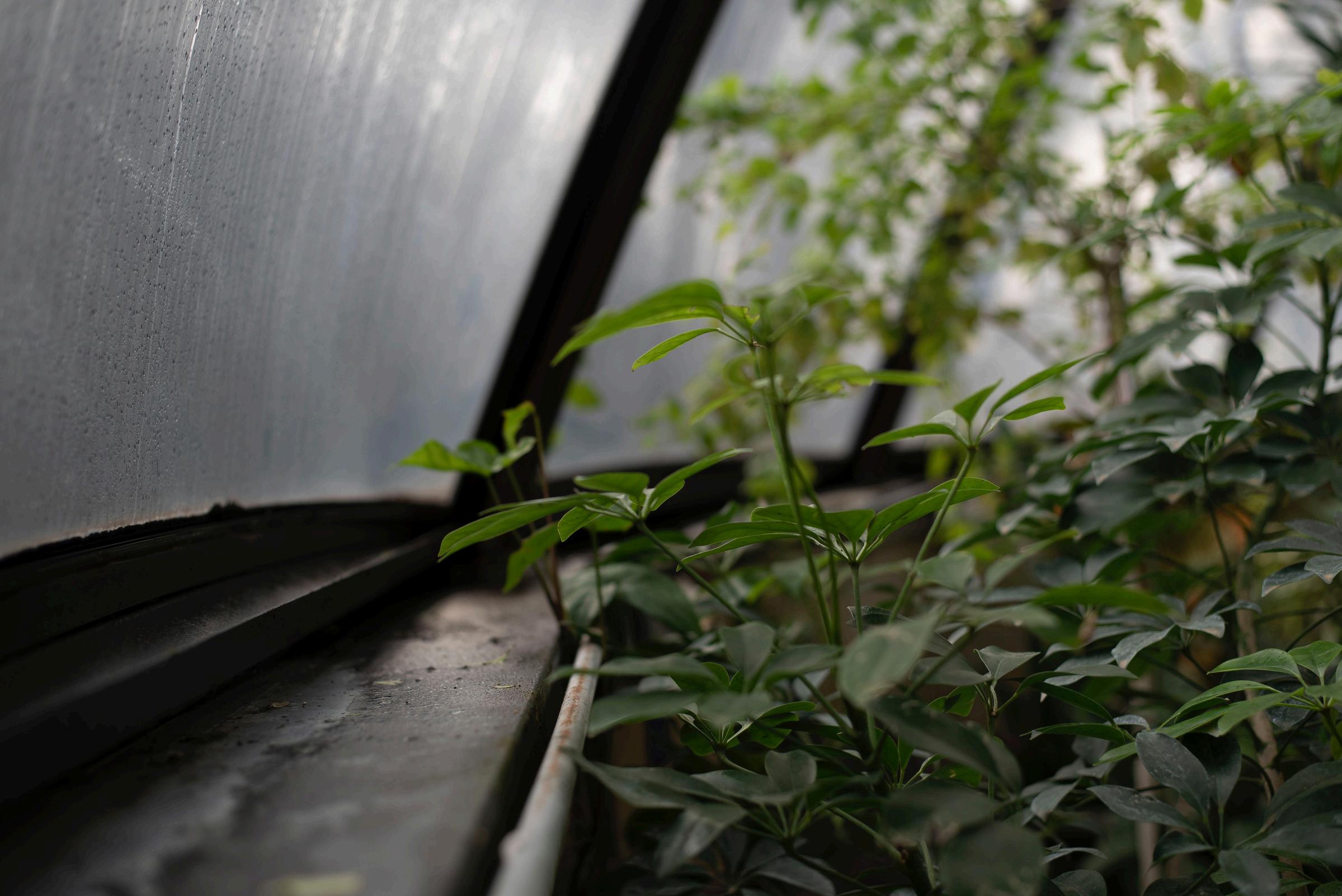

My first greenhouse was the start of my growing journey and it was a well intentioned (but he would probably say a misguided now) gift from TheNotAllotmentDad

By JayneWallace @theallotmentmum
During lockdown, we, like much of the rest of the world, were going a little stir crazy; a teacher dad, a neurodivergent early teen, an ‘at risk’ KS1 child and me Ever tried to teach a child with Down Syndrome to read? That was what were up against during the delights of those weeks. We did everything we could like everyone else: chalk drawing on the walls (which our neighbour washed off!) growing in planters (which is when we found out our back garden is so shady you can’t get courgettes to fruit…) and the daily walk around the block/ YouTube exercise classes to stop us going crazy. We would have gone further afield but our usual safer places to go out and about were swarming with every other family in the area: so we steered clear!
The greenhouse happened because hubby realised I needed to be able to shut a door away from the rest of the family I needed space! So he valiantly bought a greenhouse on Facebay, dismantled it whilst shielding which was an epic two day job as black mastic is not a nice medium to work with, and then spent a further day rebuilding it down the side of our house
I immediately fell in love! My first greenhouse is hexagonal: if I had a spinning chair in there I could look like some sort of gardening master mind! I am not sure how, but my fixation on getting food without having to go to the shops spiralled It was full of make do and mend: I have hundreds of photos of self made paper pots stood up in mushroom trays. I can’t remember how much we actually managed to grow in the greenhouse the first year, but I know we got cucumbers and tomatoes.
My second main greenhouse is the growing greenhouse and we are in its second growing season. Polycarbonate, it was a birthday present from The NotAllotmentDad (he’s surrendered to the plant based madness!) Raised beds have been filled with the contents of every compost bin I have at home It is now rigged up with cords to support tomatoes, peppers, and aubergines , and this winter it kept us in salad for our sandwiches, as well as chard and kale for our slow cooker dinners Currently, its full of tomatoes, peppers, aubergines and the last of our winter grown greens as I wait for them to go to seed It’s also home to a female stag beetle that persists on making me panic every time I see it!
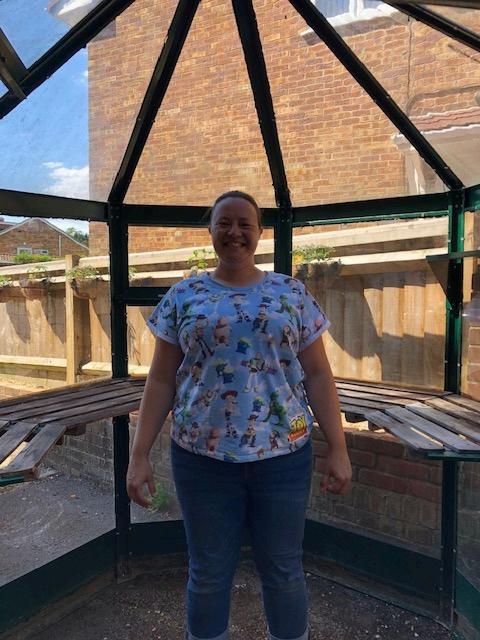
So what can I suggest to anyone doing the same as I did those many moons ago? I can tell you that shoe racks are your friend when you have trays of plants and they come up frequently on facebay Milk bottles are perfect for watering and if you fill them in advance and store them in the greenhouse they become the perfect temperature for the plants that you are caring for Butcher style hooks are great for hanging things from ledges and edges, as well as those under the shelf wire racks you can get I would also tell you that the shower safe mini speakers are perfect for in greenhouse tunes!
I will also tell you that greenhouses can become addictive. I now have two proper greenhouses and three large zippy ones that at times are used just as plant shelving. I can tell you that unless you have other storage space for all the garden stuff (I am thinking about my pot collection, toilet roll inners, compost bags…) that the mess inside a greenhouse can quickly become insane! And I can tell you that if you ’ re out there too much the family will automatically assume that’s where you are no matter what they see/ you do “Where’s your mum? Greenhouses”
In order to keep your greenhouse from struggling in the winter as an ex librarian I can highly recommend clear sticky back plastic to help with either cracked glass or polycarbonate popping out of frames: both my greenhouse now have quite a bit stuck strategically where damage has been done in storms not the easiest to do, but as I usually have overwintering plants in both greenhouses I was determined! I can also strongly recommend getting a waterbutt attached: the value added of saving water is not to be sneezed at, especially if you want to grow blueberries like me So greenhouse growing: if you can, go for it! Onwards and upwards.
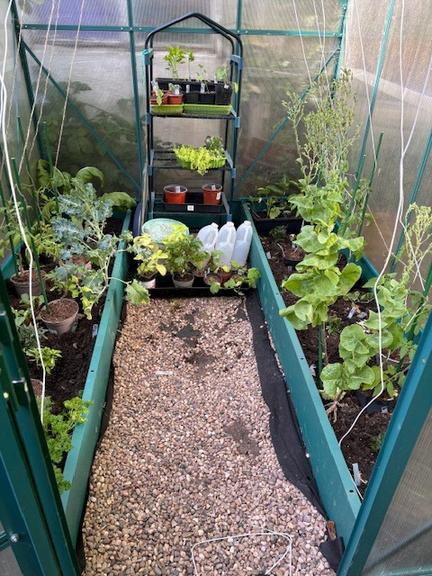
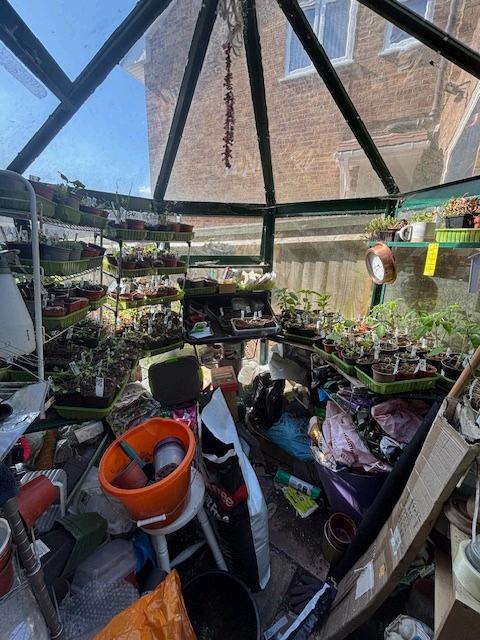
I mean just look at all those plants!
Jayne in one of the many greenhouses.
An absolutely jam packed growing space.
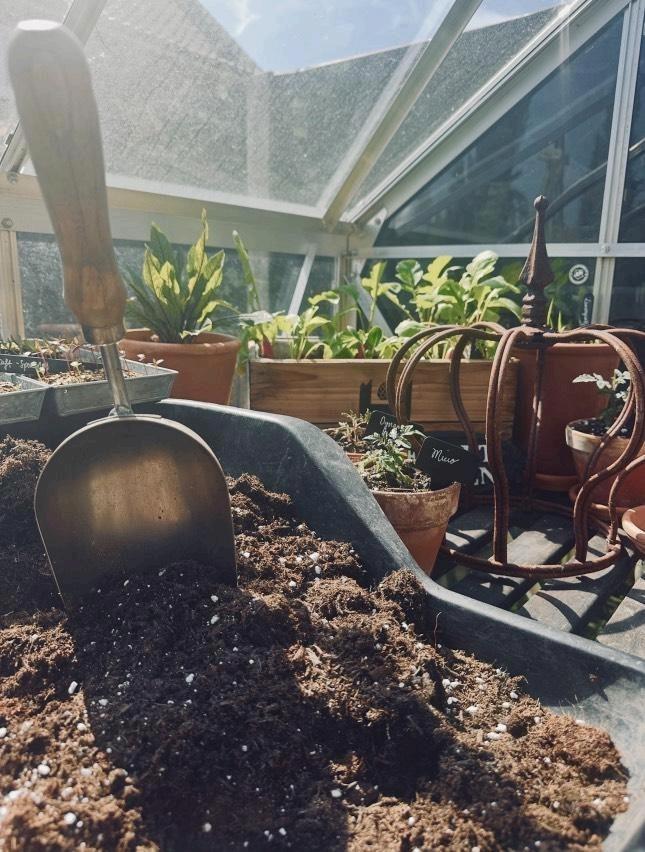
Thriving in the heat: Thriving in the heat: Greenhouse growing Greenhouse growing tips for summer tips for summer abundance abundance
After the excitement of setting up your kitchen garden, summer is when everything starts to come alive, especially in the greenhouse. This is the moment when the nurturing pays off, and you ’ re surrounded by the scent of sun-warmed tomatoes, sweet basil, and the thrill of growing things that would usually be too exotic for our temperamental UK climate. The greenhouse becomes more than a growing space; it’s a retreat, a sensory sanctuary, and a place of quiet joy.
This season, it’s all about the heat lovers Tomatoes take centre stage, thriving in the protected warmth Whether you ’ re growing sweet cherries, beefsteaks, or rare heritage varieties, they’ll reward you with abundance if you keep up with feeding, watering, and gently tying them in Cordons need their side shoots pinched out regularly to keep their energy focused, while bush varieties benefit from space to sprawl Once the first fruits start to form, a weekly feed high in potassium helps keep the crop coming
Chillies and peppers enjoy the heat too, though they can sulk if it gets too intense I often place mine closer to the ground or at the edges of the greenhouse, where the temperature is a touch cooler. A little dappled shade in the midday sun can make all the difference. Aubergines, while famously fussy, are worth the patience. They need consistent warmth and careful watering; never too dry, never too wet; and a little hand-pollination can help them set fruit more reliably.
Cucumbers love the humidity. Unlike tomatoes, they prefer moist air and regular watering. I usually grow them in deep pots, training them up a trellis or string Once they get going, they’re prolific; a cucumber a day isn’t out of the question in peak season Melons, lemongrass, turmeric and even ginger can also thrive in this microclimate, adding a more adventurous, almost tropical twist to your summer growing
But it’s not all about heat; it’s about balance The greenhouse can easily overheat in July and August, turning from nurturing space to pressure cooker if you ’ re not careful Ventilation is vital I open my doors and roof vents every morning, and on the hottest days, I prop them wide open to allow a full flow of air A simple curtain of greenhouse shading or even a thin cotton sheet can soften the intensity of the sun, protecting tender leaves from scorch
Watering becomes an act of tuning in. I try to water early in the morning so the roots have moisture before the heat builds. Tomatoes prefer a good soak every few days, while cucumbers and melons enjoy more frequent attention. It’s a fine dance; too little, and things start to droop; too much, and roots can rot. Mulching with compost or straw helps retain moisture, giving you a bit more leeway on those scorching days.
By Tori Thomas
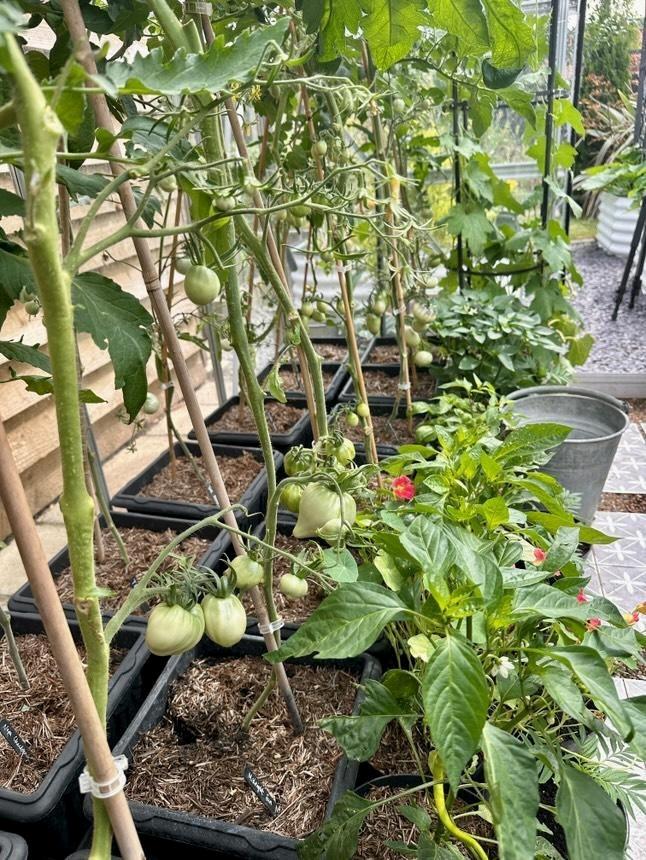
Tomato season is upon us!
Not just a fantastic grower but fashionable too.
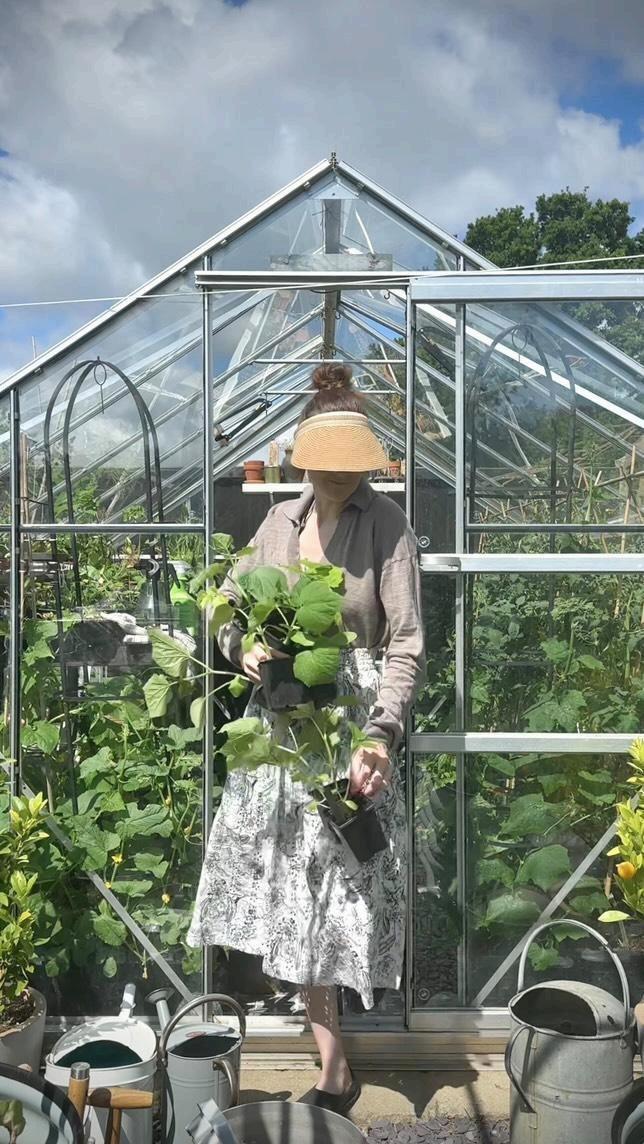
Summer is a hungry season for plants, and feeding is just as important as watering. A weekly organic tomato or seaweed feed keeps them vigorous, lush, and productive. At the same time, regular pruning and tying in helps maintain airflow, keeps disease at bay, and gives your plants the structure they need to keep reaching for the light.
What I love most about the greenhouse in summer is how it becomes a place to be, not just to grow I often add a few pots of marigolds, nasturtiums, or basil; partly for their beauty and scent, partly for their companion planting benefits Sometimes I sit on the floor amongst the leaves and take in the fragrance of warm earth and ripening fruit It’s a moment of stillness in a busy season, a reminder of why I grow in the first place
This year, with 103 tomato varieties filling every corner, it’s certainly been a jungle It is a jungle I wouldn’t trade for anything There’s something magical about stepping into that warm, fragrant space and knowing that everything in there is growing because of your care. It’s not just about food; it’s about connection, rhythm, and abundance in its purest form.
So whether your greenhouse is packed to the rafters or just getting started, summer is the time to lean in. Embrace the heat, nurture the growth, and let your garden; and your spirit; flourish.

All this hot weather has the chillies booming!


Tropical gardens Tropical gardens
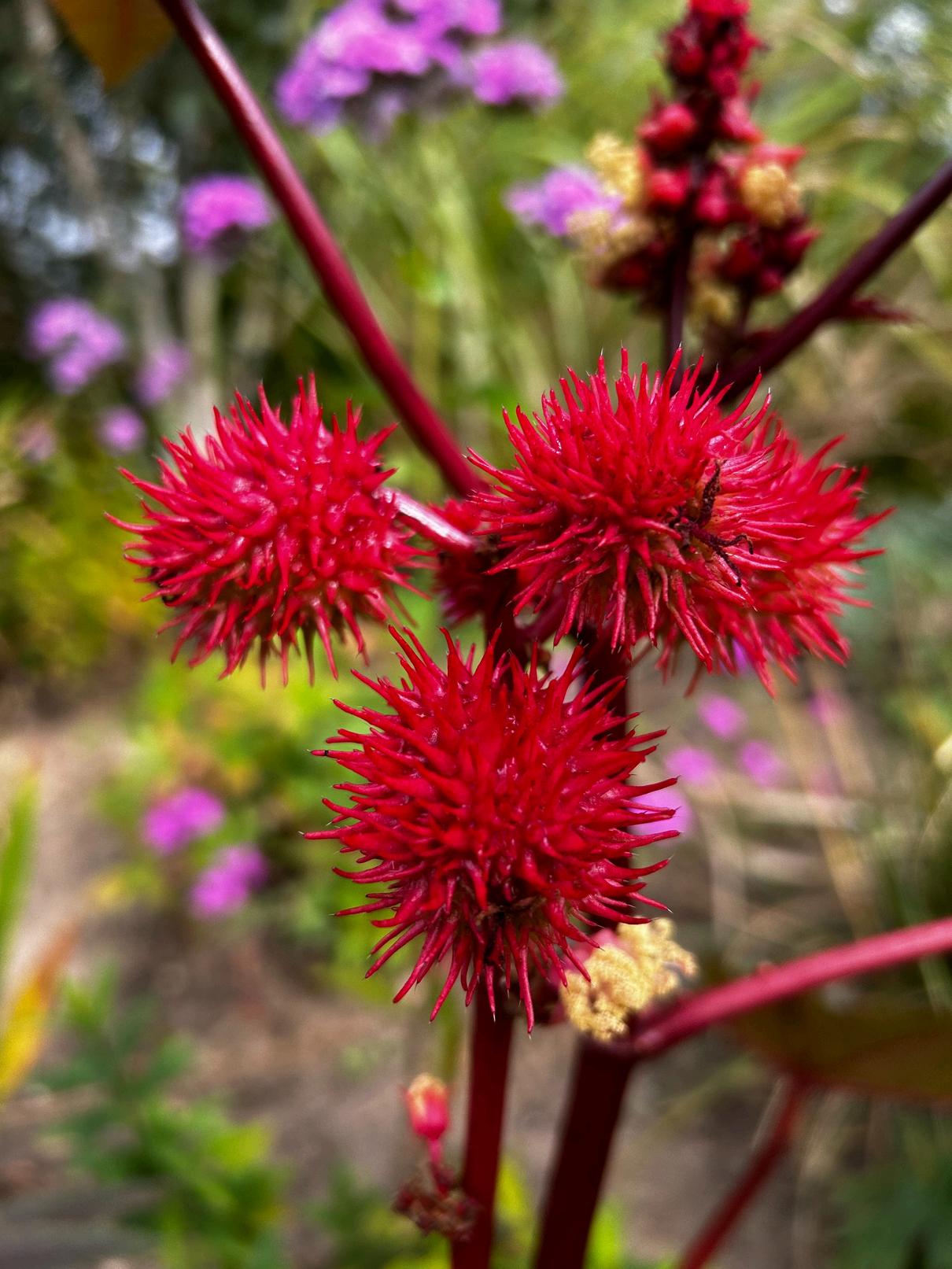
If you are looking for some plant waffle you have arrived at the right page of the magazine, this is If you are looking some plant waffle you have arrived right page magazine, my niche and I am leaning in to it. This month, considering the glorious weather we have been my I leaning in it. considering glorious having, I thought it would be apt to highlight some of my favourite tropical plants that I like to having, I thought it would be apt to highlight some of my favourite tropical plants that I like to incorporate in to my garden to give that wow factor and the jungle feel even if this year it’s feeling incorporate in to my garden to give that wow factor and the jungle feel even if this year it’s feeling like we need to all plant cactus and accept we now live in a desert. like we need to all plant cactus and accept we now live in a desert.
So what are tropical plants? According to google “A tropical plant is any plant that naturally thrives in what are tropical plants? According google “A tropical plant any plant naturally thrives in a warm, humid environment, typically found near the equator. These plants are characterized by their environment, typically found equator. plants by preference for warm temperatures, high humidity, and abundant rainfall, which are all common in preference for warm temperatures, high humidity, and abundant rainfall, which are all common in tropical regions. Many tropical plants, especially those from rainforests, also prefer filtered light and tropical regions. Many tropical plants, especially those from rainforests, also prefer filtered light and can be grown indoors as houseplants”. can be grown indoors as houseplants”.

@gardeneriddler
In my jungle border at home, I like to create a tropical feel with plants that can withstand the British climate, and although this is constantly changing with every year the trend is that our climate is getting warmer and in the next 50 years we will have a similar climate to that of Barcelona in Spain So we will see more and more plants that we currently consider tropical being used more and more The other thing I like to do is give some of my houseplants a holiday outside in the summer to allow them to experience the joy of weather and wildlife for a few months of the year
Obviously I have my Tetrapanax ‘T-Rex’. I think I have probably bored everyone to death talking about this plant by now but it is my favourite plant in the garden and it stops everyone in their tracks the first time they visit my garden. It is native to China and Taiwan. Although in the winter it tends to die back to the main stem, every year it comes roaring back to life again to be the dominant plant in my garden. With mahoosive velvety palmate leaves, lush green on top and white underneath, it stands above the rest of the border. If you want instant jungle vibes, get one of these on your list.
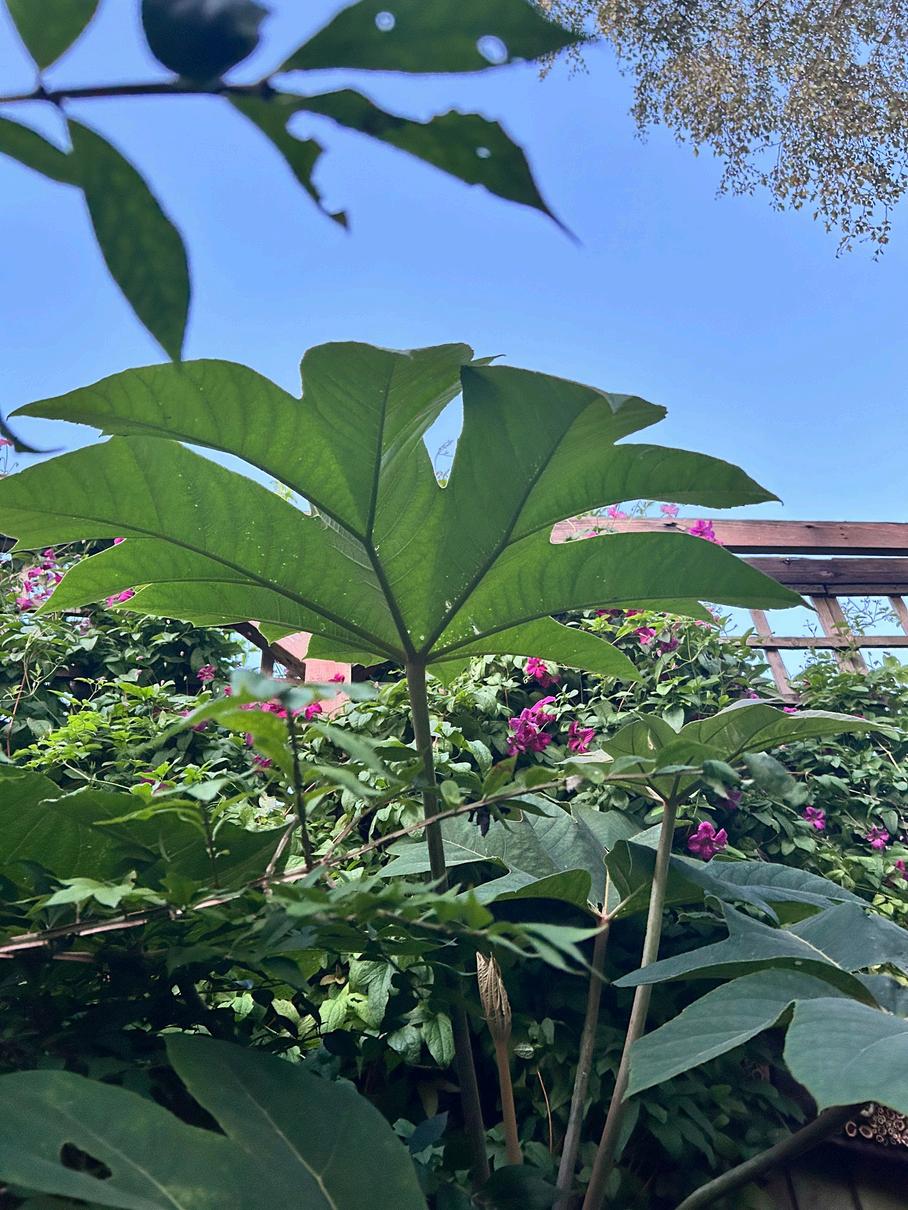
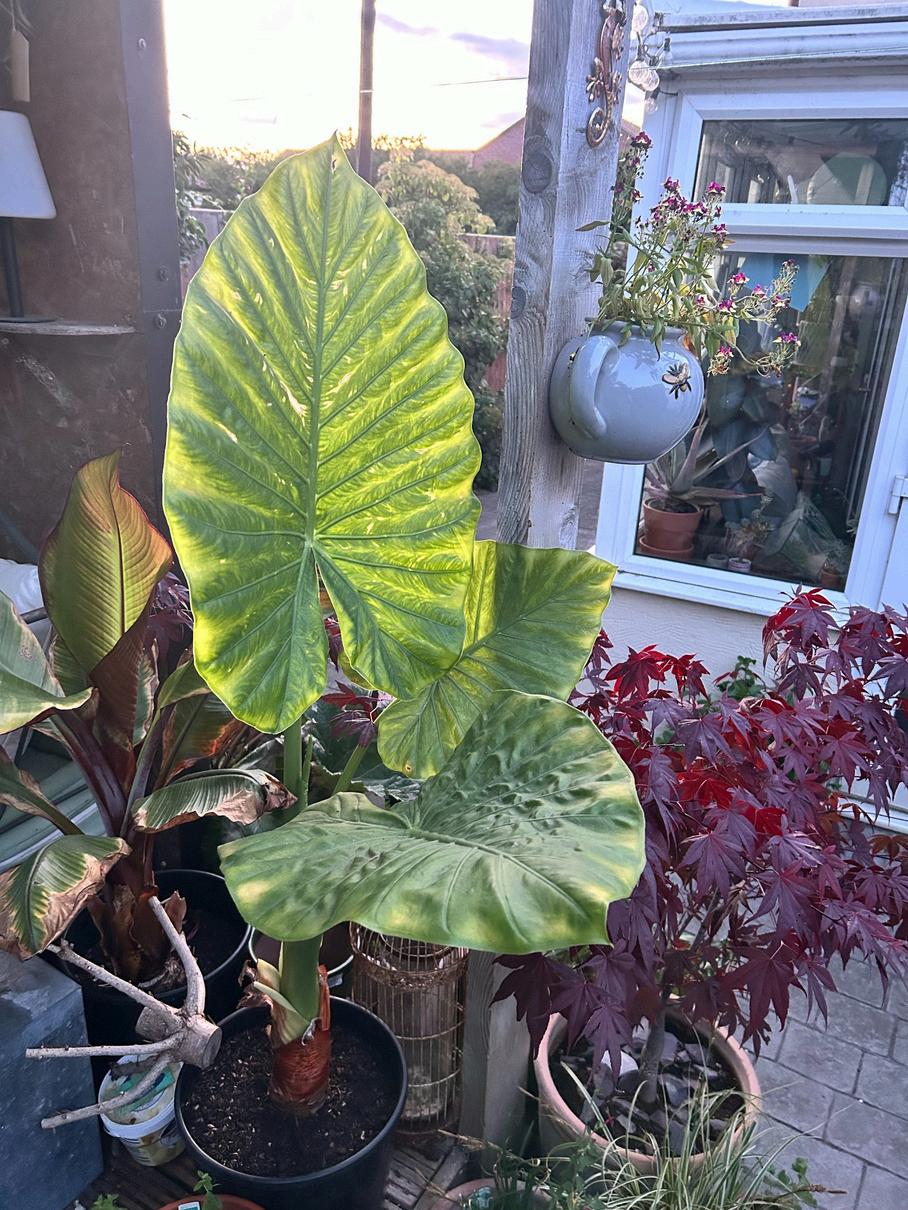
Next up is one that is a houseplant for the winter but outside for the rest of the year, Colocasia esculenta or Taro. It’s grown from an edible tuber used in Asian cooking so if you want to grow it, go to your local Asian supermarket and you can pick up the root for about a pound The other common name for the plant is Elephant ears and this is because the leaves do resemble them This is another plant that has giant leaves and they can even get bigger than the Tetrapanax leaves in the right conditions Some of the ones in the glasshouses at Kew are breathtaking You can grow it in a big pot and then come the winter move it inside and it will continue to grow , just at a slower rate I have had mine for about four years now and it is so vibrant I have it on my patio surrounded by lots of other plants this year but in previous years I have stood it in my jungle border to enhance the jungle effect. You can also get a purple leaved variety which is even more impressive and will give you that contrast from the usual greens of the other tropical plants.
Colocasia esculenta
Tetrapanax
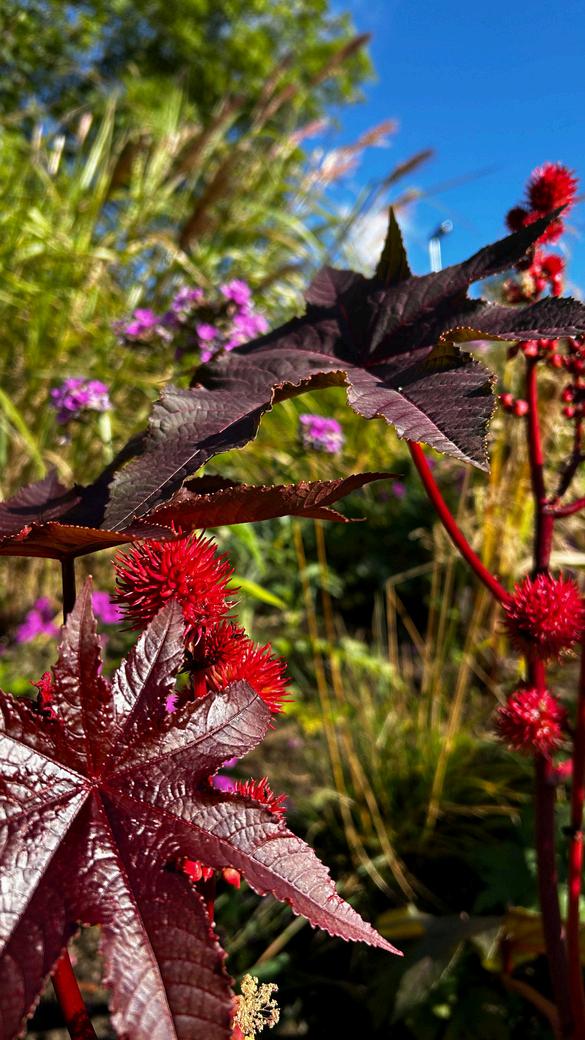
Here’s one for the seed growers that I like to grow every year without fail and that is Ricinus or the Castor Oil plant There are a number of different varieties including one that has red leaves This year I am growing one with green palmate leaves called Ricinus zanzibarensis In its native location in Africa it can grow up to 2 5metres tall but in the UK it’s treated as an annual as it dies once the temperature drops Despite the cooler conditions, it will still grow to be about a metre tall and usually flowers and sets seed So, once you have it you can save the seeds for next year. Be warned, it is poisonous so don’t eat this one.
Time for another plant I treat as a houseplant for much of the year and then let it holiday outside in the summer, Ensete ventricosum or false banana. This is becoming more and more common in the garden centres looking very similar to a Canna lily. One of the things i really like about this one is that if you overwinter it, the plants will get bigger and bigger every year. The leaves are ribbed and long, unfurling from a central stem, starting red on the edges and changing to green towards the centre of the leaves It looks amazing with the sun shining though the back of the leaf I would actually recommend this over the real banana plant as it has a much nicer habit
The final one, and probably the most spectacular (though I haven’t managed to get it to flower yet), is the Bird of Paradise or Strelitzia I have the white flowering variety but the leaves are exactly the same as the orange, more traditional variety The Leaves are similar to the banana but they have a stem at the base and the plant is more fanned Again, more traditionally grown as a houseplant but more than happy to spend the summer months in the garden amongst your tropical themed plantings
There you go, I hope I have inspired you to go create a jungle corner or just spice up your patio with some tropical plants that you need to find room inside for in the winter. Maybe just use a Colocasia instead of a Christmas tree this year!
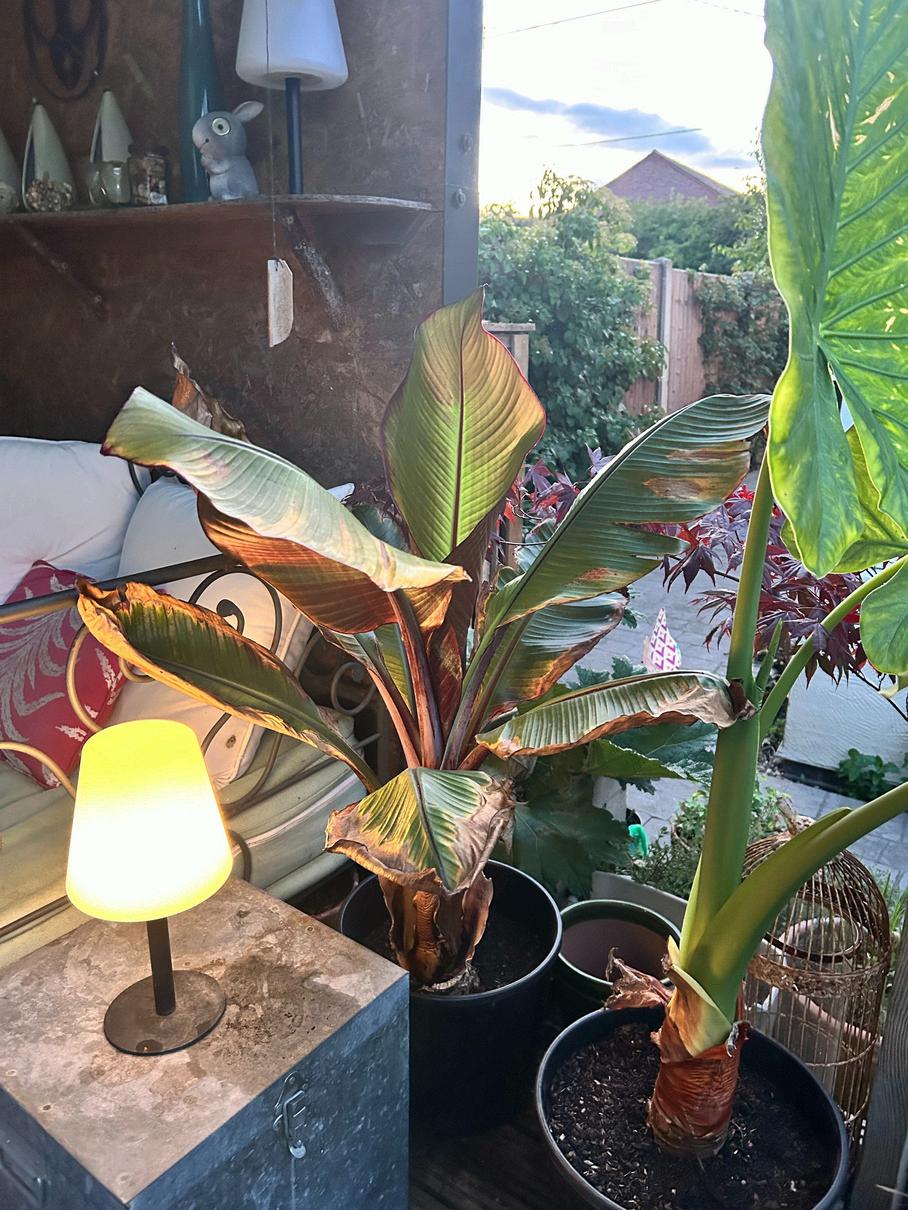
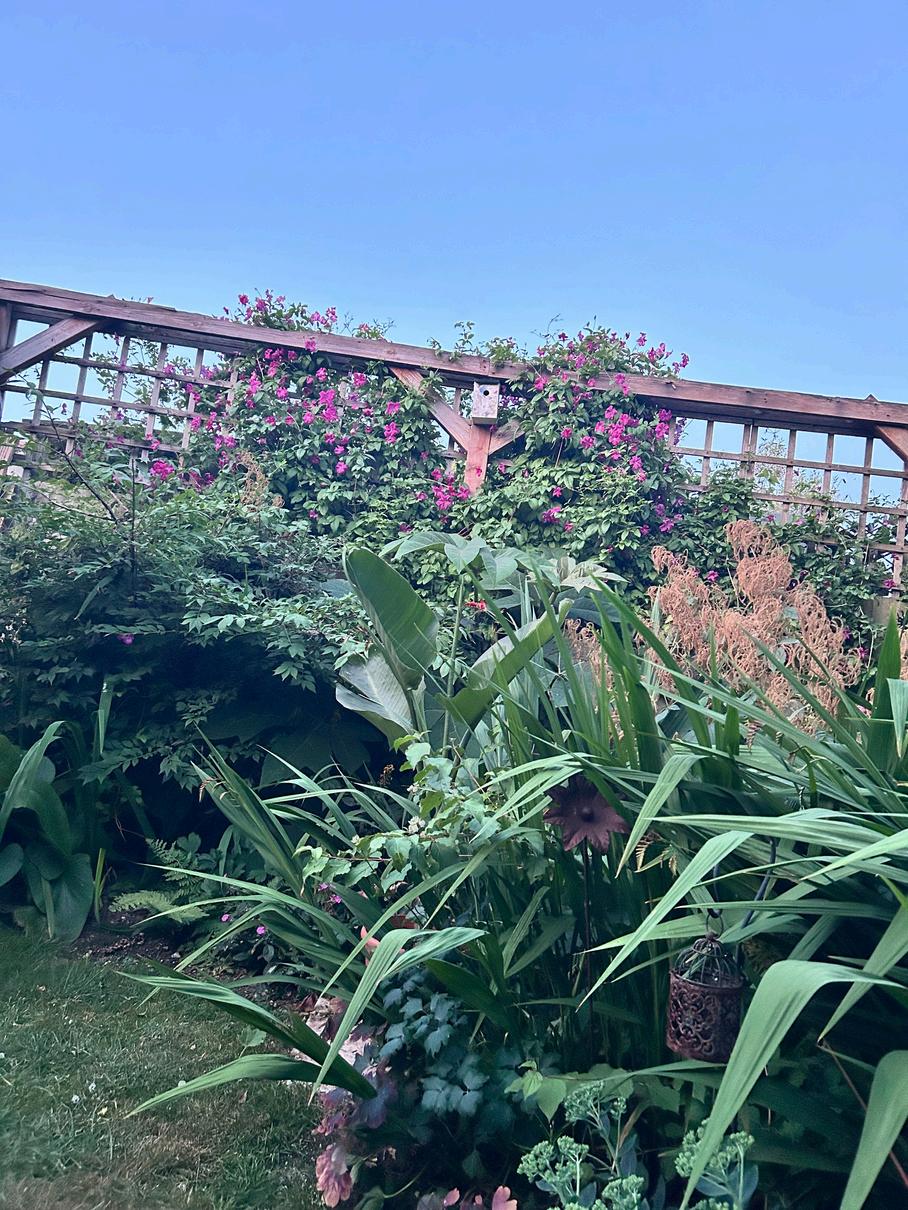
Pulsatilla vulgare
Ensete ventricosum
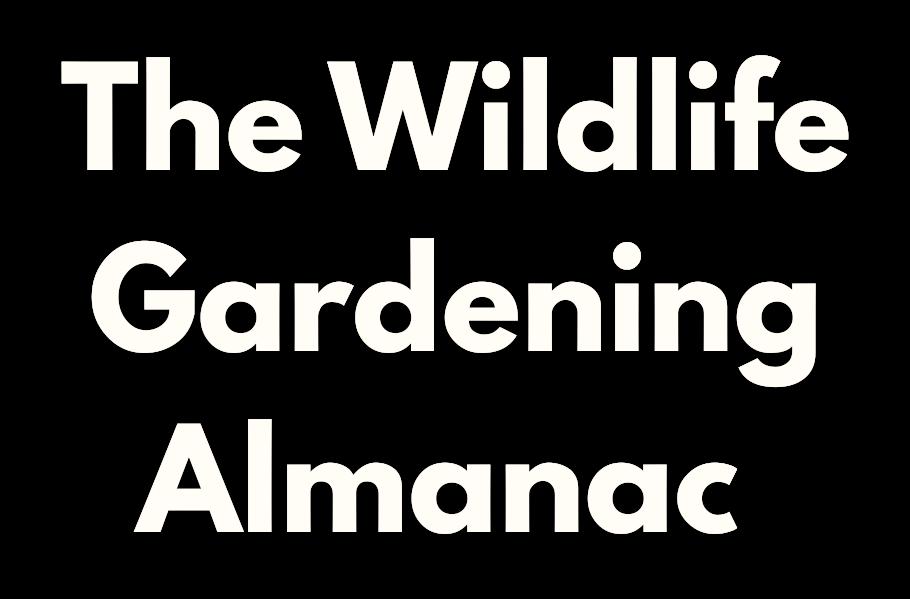
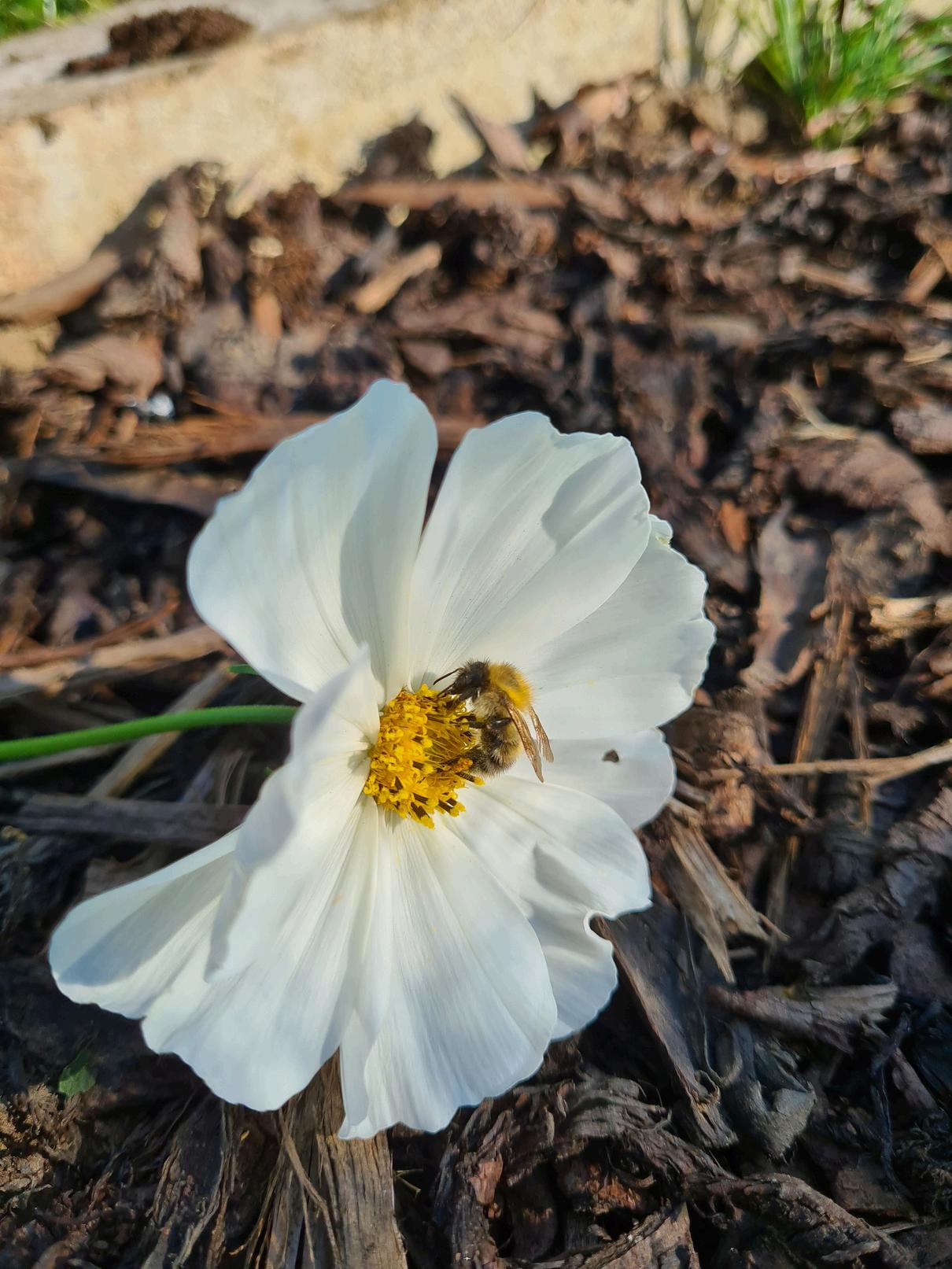
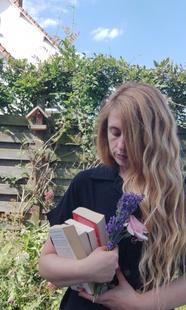
July is the heart of summer a time when the garden hums with activity and bursts with vibrant blooms Warm days and long evenings invite us to enjoy the outdoors, while the wildli is busier than ever, raising their young, gathering food, and pollinating plants. For wildlife gardeners, July offers endless opportunities to support the creatures that make our gardens so lively. As summer begins in earnest, July brings with it long, sunlit days and gardens teeming with life. It’s a time of colour and blue skies, but also an important season for wildlife as many creatures work hard to raise their young For wildlife gardeners, July is the perfect time to focus on providing food, water, and safe spaces for the visitors who bring so much joy to our gardens
Wildlife Garden Tips and Jobs for July
Support Pollinators with Continuous Blooms
By July, some earlier flowers may have finished blooming. Plant mid- and late-summer flowers like cosmos, echinacea, and sunflowers to keep your garden buzzing with activity Deadhead spent blooms regularly to encourage more flowers and nectar for pollinators
Provide Water
The heat of summer can make water scarce for wildlife. Keep birdbaths and shallow dishes topped up with fresh water, adding stones or pebbles to create safe landing spots for insects.
Cosmos provide flowers right up until the first frost
Leave
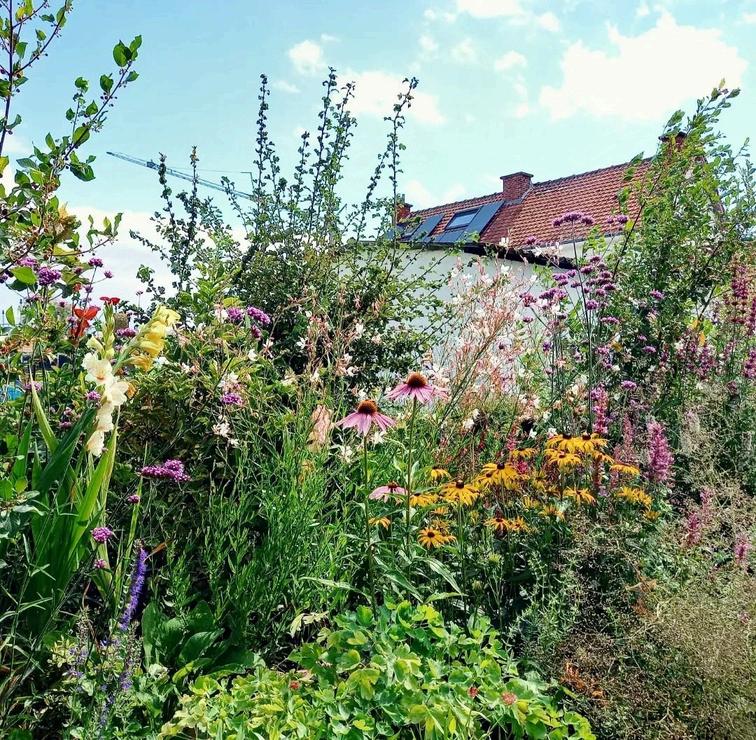
Look After Your Hedgehog Visitors
Hedgehogs may be raising hoglets this month and will need plenty of food and water Continue to provide meaty cat food, specialist hedgehog biscuits, and fresh water in shallow dishes Avoid tidying up log piles or wild corners where hoglets may be hiding.
Cut Back Wildflower Meadows
If you have a wildflower patch, cut it back once the flowers have set seed Leave the cuttings in place for a few days to allow insects to escape and seeds to disperse naturally This ensures a diverse and thriving meadow next year You can also leave part of it uncut so the birds can snack on the seeds
Create a Mini Pond
Even if you don’t have space for a full pond, a mini pond in a large container or old washing up bowl can provide a lifeline for frogs, newts, and insects. Add native pond plants like water forget-me-not and include a ramp or stones to allow wildlife to enter and exit safely.
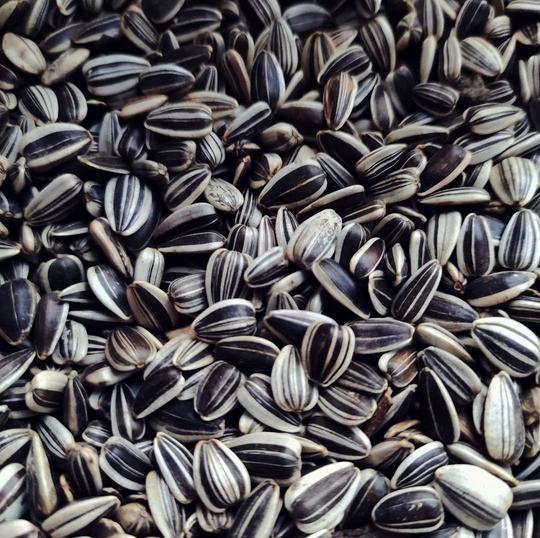
Begin saving seeds for next year.
Steps for the Months
Ahead
Collect and Save Seeds
Many plants will begin to form seed heads in late July. Collect seeds from flowers like poppies, nigella, and calendula to sow next year. Store them in a cool, dry place in labeled envelopes or jars
Nasturtiums are both a reward for you and the wildlife.
Plan Autumn Planting
Start thinking ahead to autumn by researching native trees, shrubs, or perennials that you’d like to plant later in the year. These will provide food and shelter for wildlife during the colder months.
Keep a Wildlife Diary
July is a month of incredible biodiversity Take time to observe and record the birds, insects, and mammals that visit your garden Noticing trends in their activity can help guide your gardening efforts in the future.
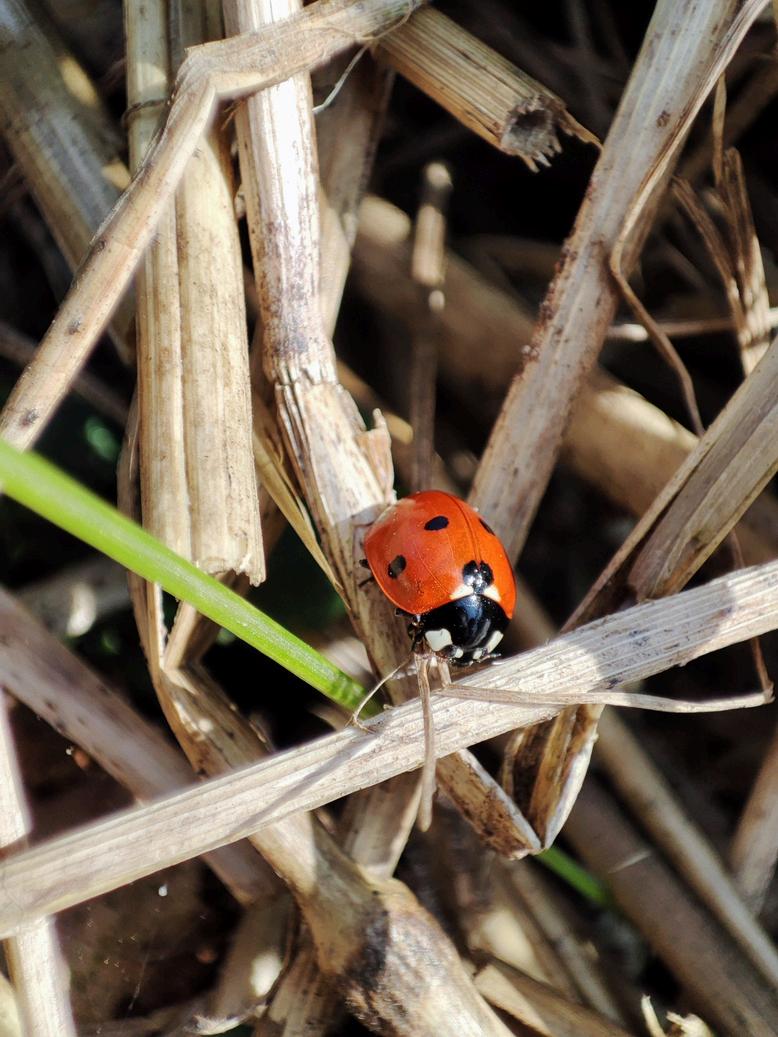
JulyWildlife Highlight:
The Hoverfly
Often mistaken for bees or wasps due to their black-and-yellow stripes, hoverflies are one of the garden’s most beneficial yet underappreciated insects They’re harmless, non-stinging pollinators that play a vital role in the ecosystem, and July is when you’ll notice them darting gracefully between flowers, hovering in place like tiny helicopters.
Why They’re Beneficial:
Hoverflies are expert pollinators, visiting flowers to feed on nectar and helping fruits, vegetables, and flowers set seed Their larvae are natural pest controllers, feeding on aphids, thrips, and other garden pests By welcoming hoverflies, you ’ re supporting pollination and reducing pest populations
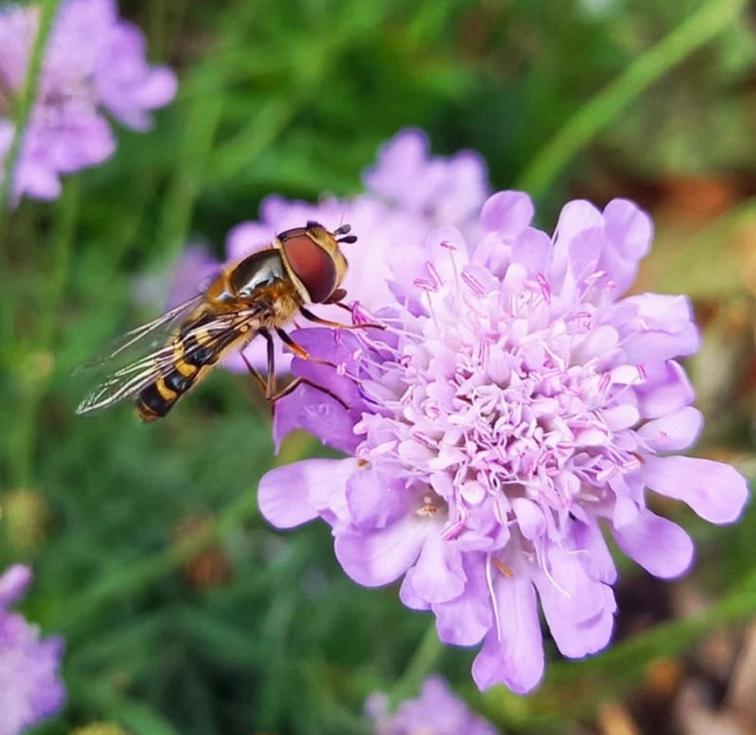
Hoverflies are vital to our ecosystem.
Often overlooked but just as beautiful as bees.
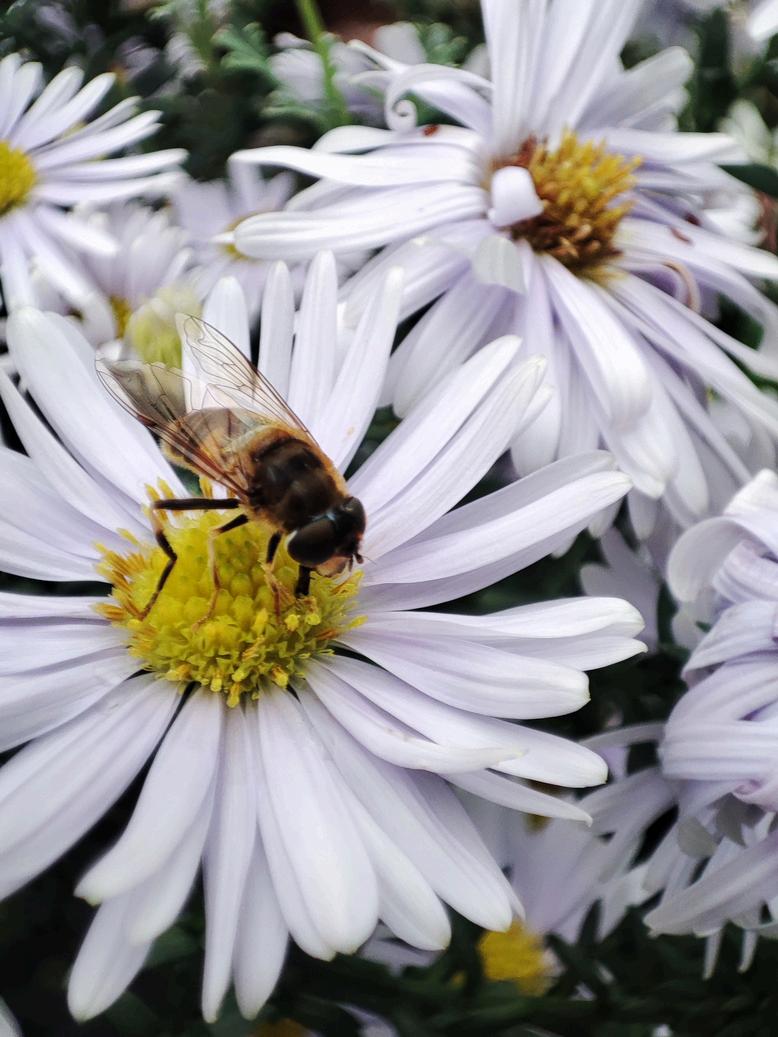
Take a moment to admire all your Wildlife hardwork paying off.
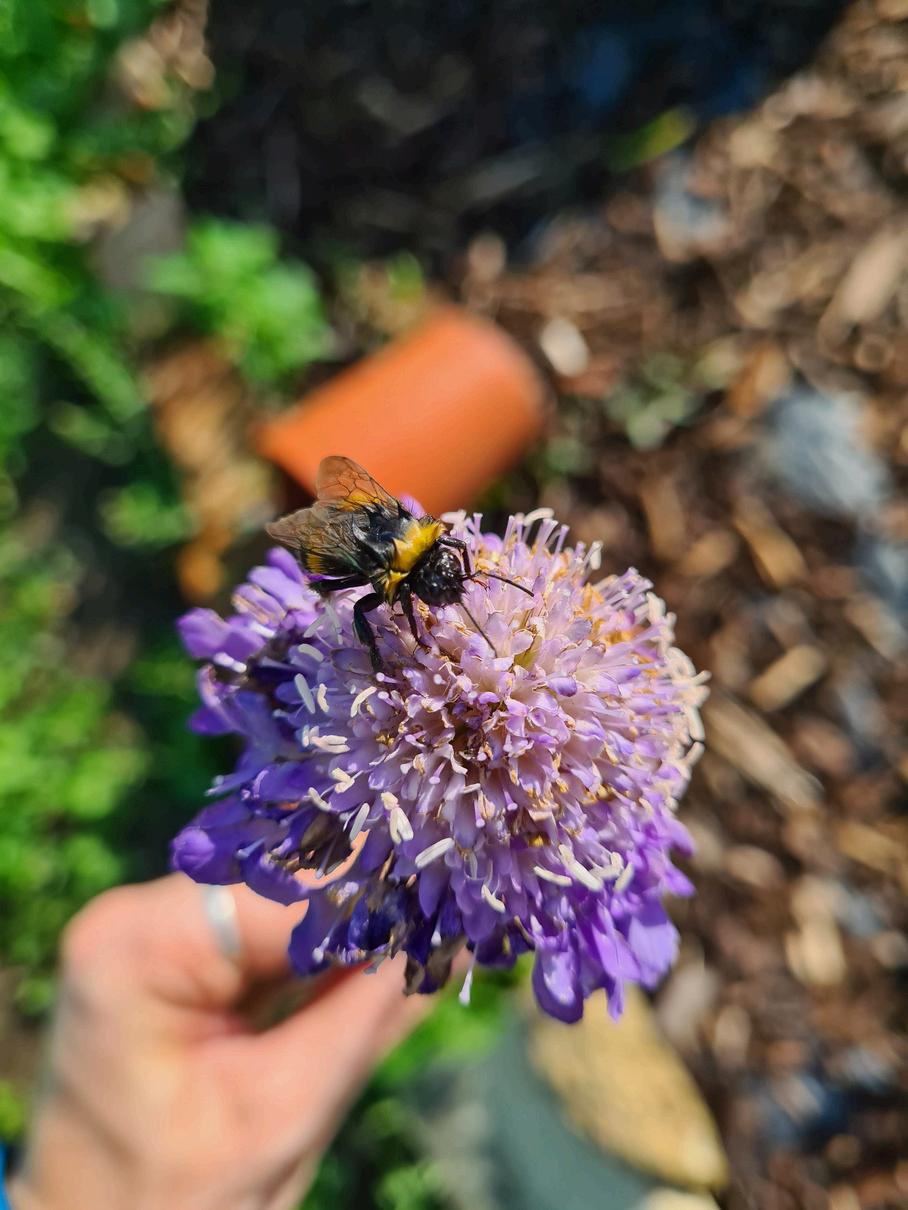
How to help them:
Grow Nectar-Rich Flowers: Hoverflies love open, flat flowers like daisies, marigolds, and yarrow Plant a variety of blooms to keep them visiting your garden throughout the seasons
Provide Shelter: Leave some wild, undisturbed corners with long grass or hedgerows where hoverflies can rest and lay eggs.
Avoid Chemicals: Pesticides can harm hoverflies and other beneficial insects. Use organic methods to manage pests instead.
Watching hoverflies flit between flowers is not only a joy but also a sign of a healthy and thriving garden These tiny champions quietly do the work of pollinating and pest control, making them indispensable allies for any wildlife gardener
A Monthly Step By Step Journey
July is a month of sunshine and swaying flowers, with wildlife in full swing and gardens bursting with color and life By supporting pollinators, providing water, and creating safe spaces for our wildlife friends, you ’ re ensuring that your garden continues to thrive throughout the summer months.
Whether it’s the gentle buzz of a hoverfly, the sight of a butterfly resting on a bloom, or moths fluttering from bloom to bloom at dusk, every moment spent nurturing wildlife brings your garden to life throughout the seasons in new and wonderful ways.
See you all next month!
From the start of their journey Laura and Alex have shared open and honestly the creation of their borders. Now the show is done, was it the dream border they wanted?
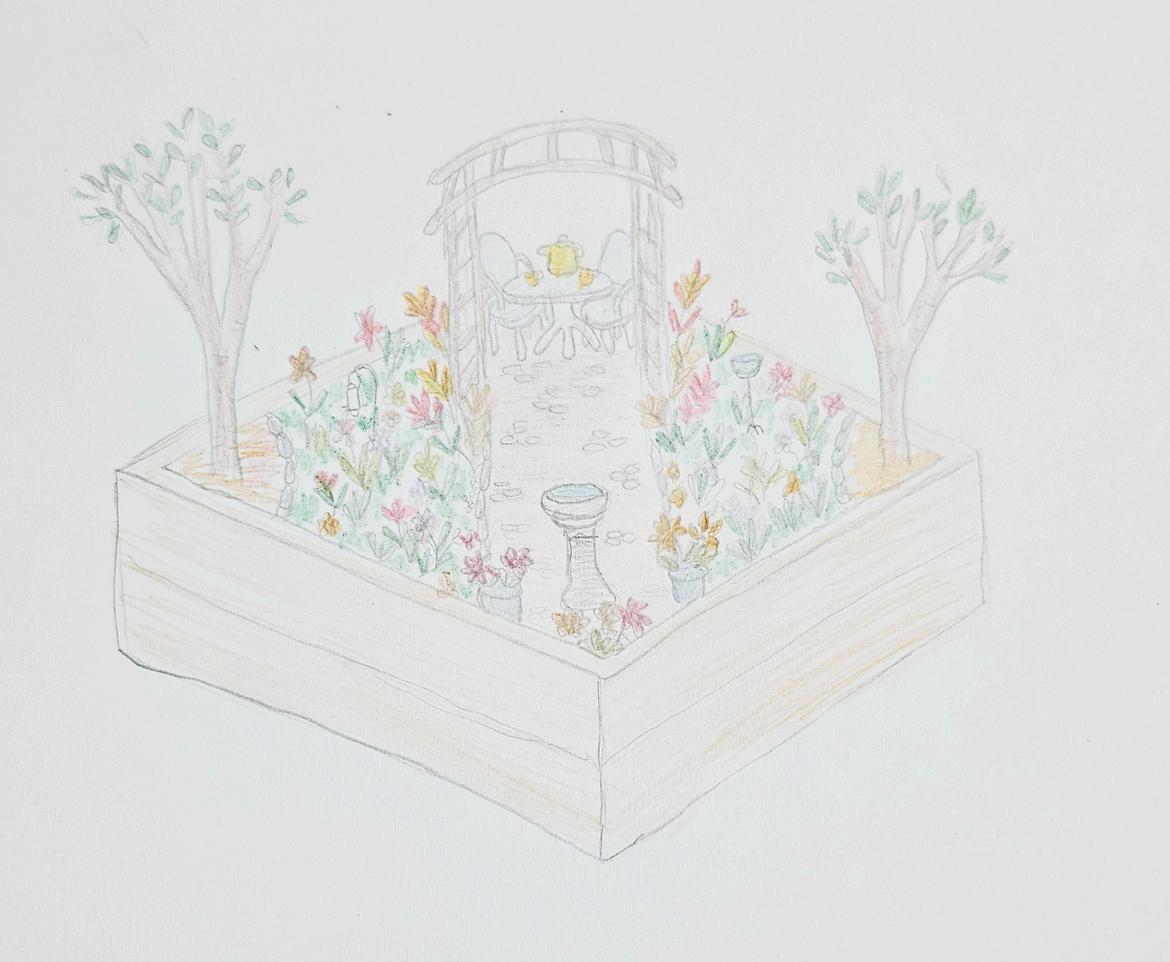
Read on for their final update and maybe this time next year it might be you featured in this space!
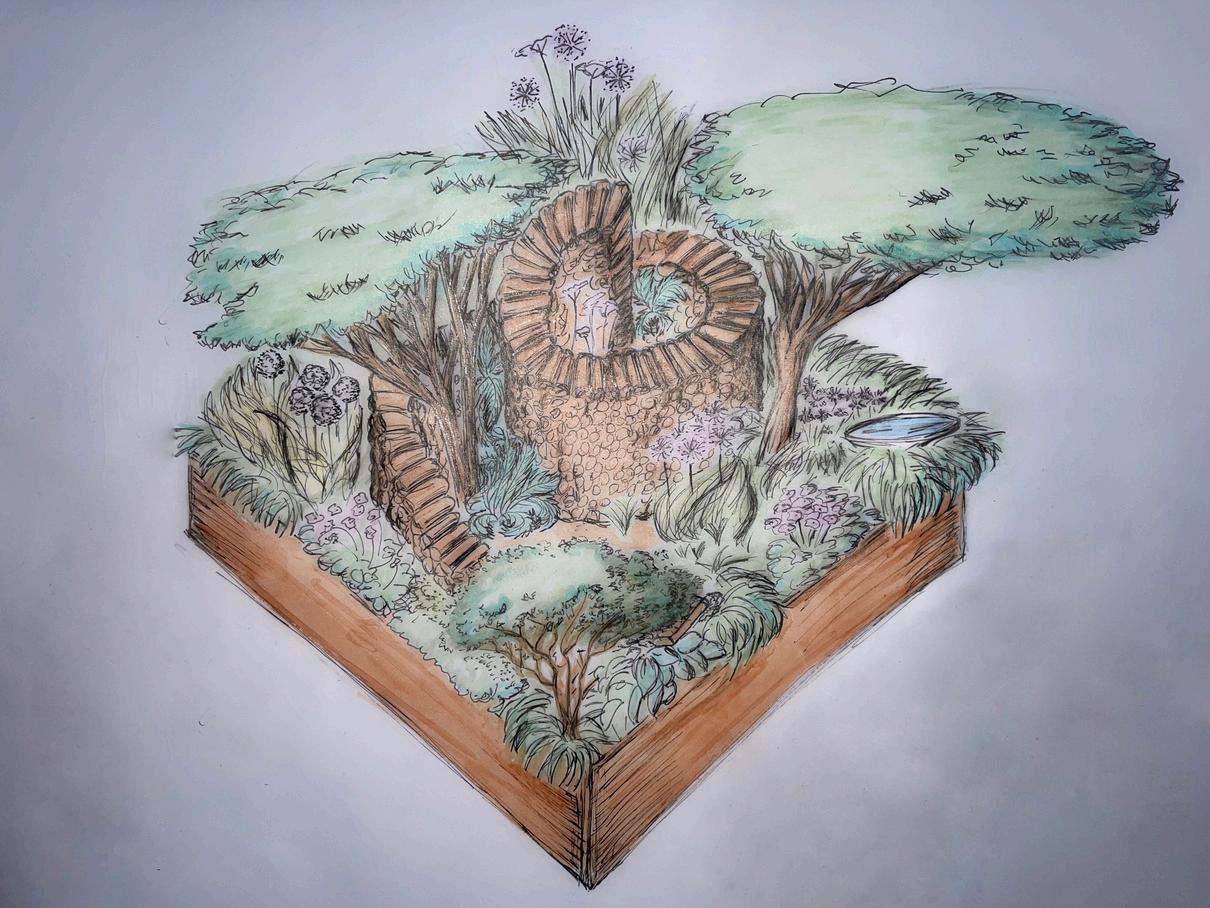


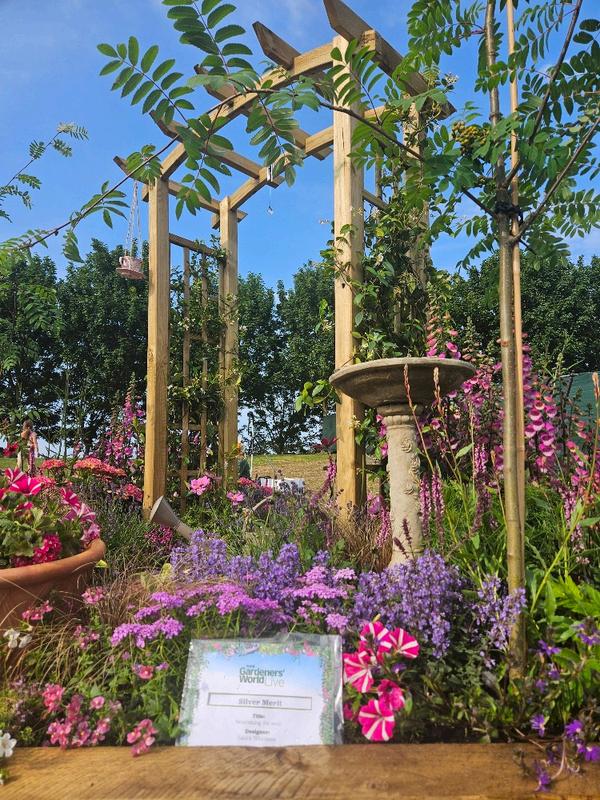
I don't know if I will ever find the words to fully describe the incredible experience of Gardener's world live. From the four days (and two hours) to build the Beautiful Border, 'Judgement Day', and the four days of showing it to the public, I have had the most fun, and most exhausting experience of my life so far!
I built my border, ‘Nourishing the Soul’, with my beautiful mum, Marie, in mind She passed away at the Marie Curie Hospice in Solihull in June 2014 and I wanted to create a garden that I would like to imagine sitting in with her, having a cup of tea and taking in the beauty of the flowers I also wanted to do it as a thank you to the wonderful gardening volunteers at the hospice, because I took so much comfort from the gardens there when she passed away, and that feeling of calmness and connection with nature has always stayed with me I selected some personal decorative items which told a story for me, such as the teapot and cups, because she LOVED a cup of tea, which could helped to bring another dimension to the story of the garden.
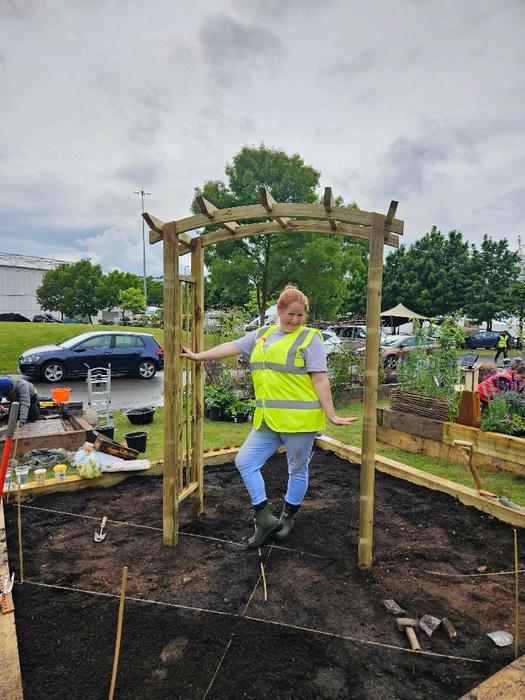
You get just four full days to build your Beautiful Border garden, so having a team you can trust to bring your vision to life is vital. And I had the best team: Annette, who travelled from Norfolk and stayed all week to help; Shelley who came from Wales to help over the weekend; Abi, who created the much loved prayer bowl and lots of laugh out loud moments; and the triple-award winning Leanne, who sagely (savagely?!) told me "just because you have it, doesn't mean you need to use it" about all of my props! It was an absolute dream team, and we genuinely laughed so much during those build days.
When I arrived on site, the sleepers were already laid out, but I had to wait for them to be filled with top soil and compost This gave Annette and I time to pop to Planters garden centre (who kindly provided most of my plants, the bistro set, and the bird bath) to give the final sign off on the plant selection, while Abi and Shelley got on with building the beautiful Midnight Arch from Zest By the time I returned, the border was ready for me to measure out and get on with the hard landscaping
The arch went in like a dream, and was easily secured by compacting the top soil around the base The initial path layout had a mishap which had everyone laughing and established us as the 'naughty corner' on site!
By LauraWhiskens @lottieonthehill
Laura living her best life.
After sleeping on it, and having a look at the Bradstone website images, I was able to turn the path from trashy to classy! The team borrowed some tools to help make it more even, while Leanne tidied up my initial layout with her fabulous eye for detail, leading it to be affectionately known as the 'informal' path. Adrian from Planters delivered the plants, bistro set and bird table on day 2 of the build, so we were able to start laying the pots out and get an idea of spacing once the hard landscaping was finished
In between building and planning, we found time to have a look at the other builds and made great friends with our neighbours, including the fabulous Nick Bailey, who won't forget Abi in a hurry! 'Nourishing the Soul' was located up on what is known as Picnic Hill, and I had the BEST neighbours: David Blythe, Jade Dinwiddy, Rachael Deterville, and the wonderful team from Trinity Catholic School, to name a few I'd like to give a special mention to Zoe-Joy, one of the students from Trinity, who was such a lovely, polite and calm young lady. She explained their garden (a memorial for the Holocaust) to literally hundreds of people over the course of the show- a great achievement for someone so young!
On 'Judgement Day' I was blown away by the positive feedback I received from the judges, including comments that they felt I have a real eye for colour, that they liked how I had planted by height up to the arch, and that they were impressed that this was my first ever time designing and building a garden! They also ended by saying that my mum would be very proud, which was the icing on the cake; I admit to shedding a little tear, and was grateful that Kerry (lottie thyme) was with me at the time for moral support and a hug
After judging had ended, we had the opportunity to show our gardens off to our sponsors, guests, press and influencers This was the first time anyone outside our show team 'bubbles' had seen the gardens! I invited Planters and four of the volunteer gardeners from Marie Curie Hospice to the event, and it meant a great deal to share this with them. One of the representatives from Planters had lost her husband just 2 weeks previously, and there were several coincidences that lead to her saying" I was meant to be here" - it was an emotional and incredibly special moment.
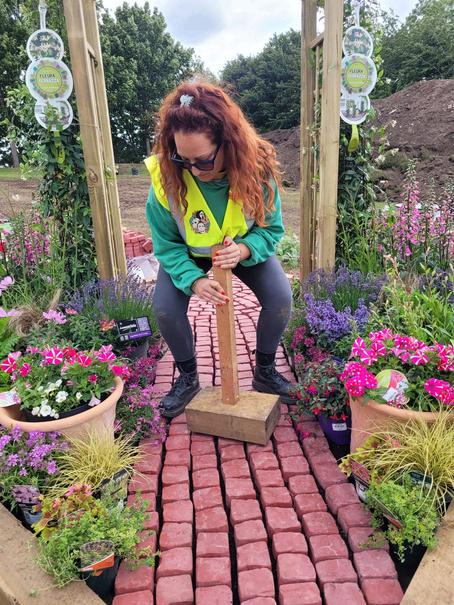
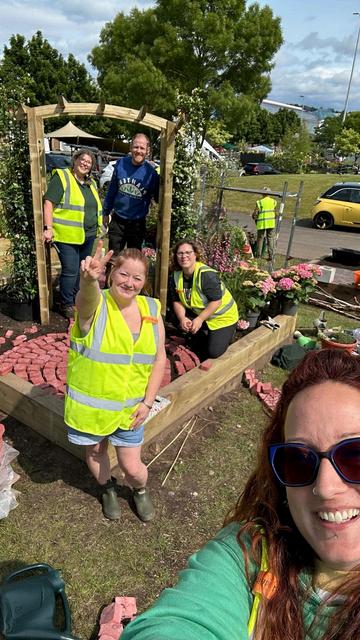

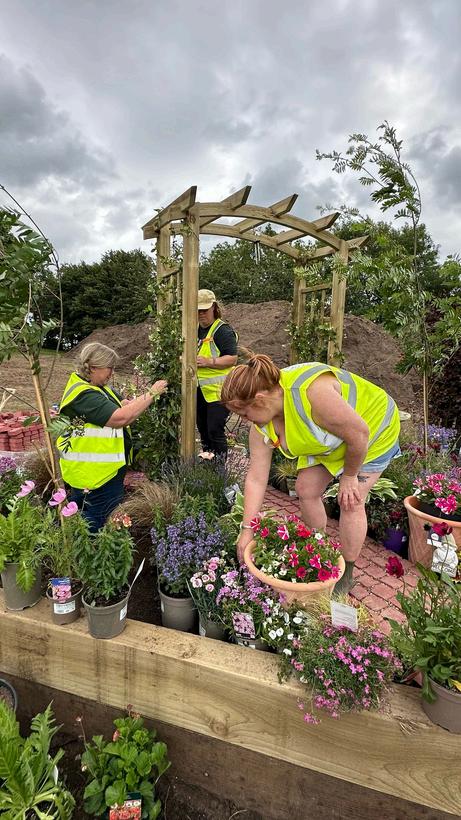

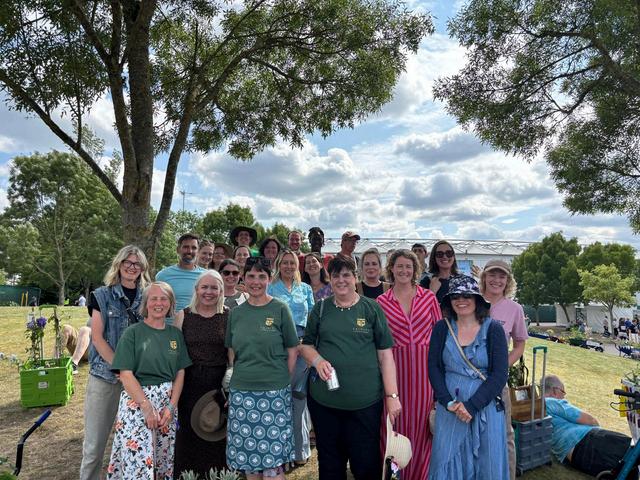
What a team!
Laura had so many great helpers.
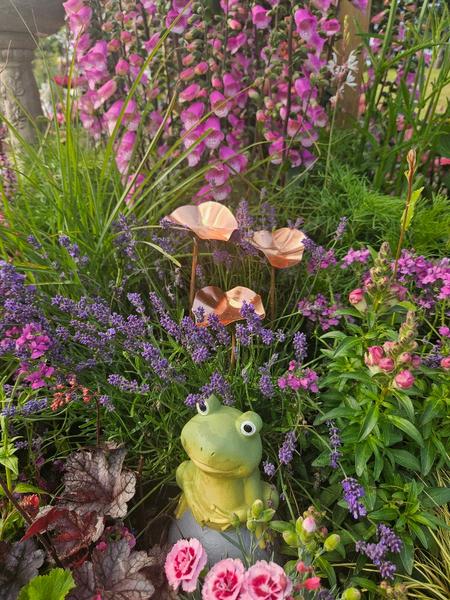
The following day, the show opened to the public, which was exciting, nerve-wracking and tiring, all rolled into one! I spoke to hundreds of people, explaining the meaning behind my Beautiful Border, talking about the plants, the 'nick knacks' I had added and why I had chosen them, and holding out handfuls of Shell on Earth to endless people, telling them that not only is it great for slug control, but it also sounds and smells like childhood holidays! People especially loved my ornamental frog (used because my mum's nickname for me when I was little was 'frog') and the gorgeous gifted copper bee drinkers from Paul at Copper and Green Paul not only personally delivered the bee drinkers to me, he also loaned me a hat, because he was concerned about me getting sunstroke in the intense heatbeing a redhead with freckles in the middle of a heatwave can be tricky!
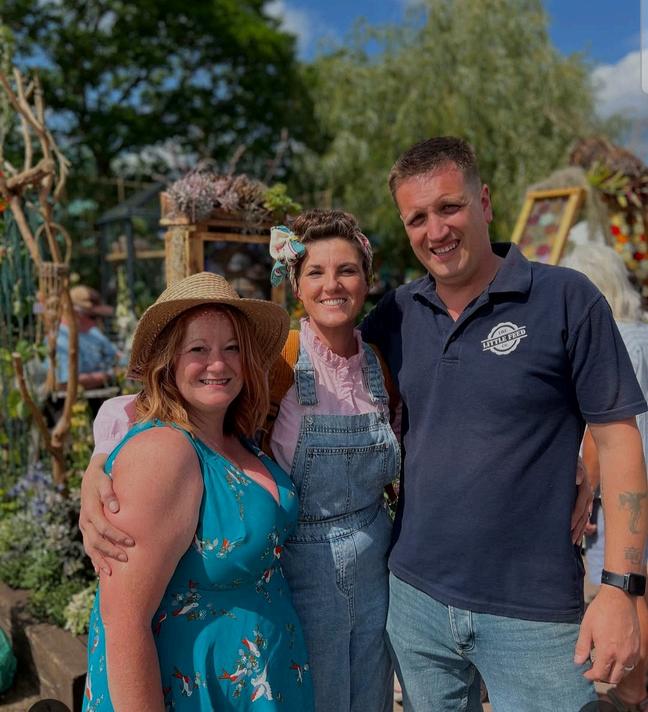
It brought me such joy to see the reactions of people as they approached my garden. The smiles and comments of 'so beautiful made me beam with pride. I definitely felt like my mum was with me during the show open days. As I told countless people, I created a garden that I would have liked to sit and have a cuppa with my mum It was a mix of plants that had been in our garden growing up, ones which I have in my garden now, and ones which have symbolic meaning for healing, protection, love, and bravery It was wonderful to show the lovely Talia around the garden, especially as we share the same grief and loss after losing our mums In tow was GFM's own Ben! And their absolute joy of a daughter, Autumn Ben and Talia have been so supportive since I told them I was going to be doing BBC Gardener's world Live, so it was really lovely to have them there to see it in real life
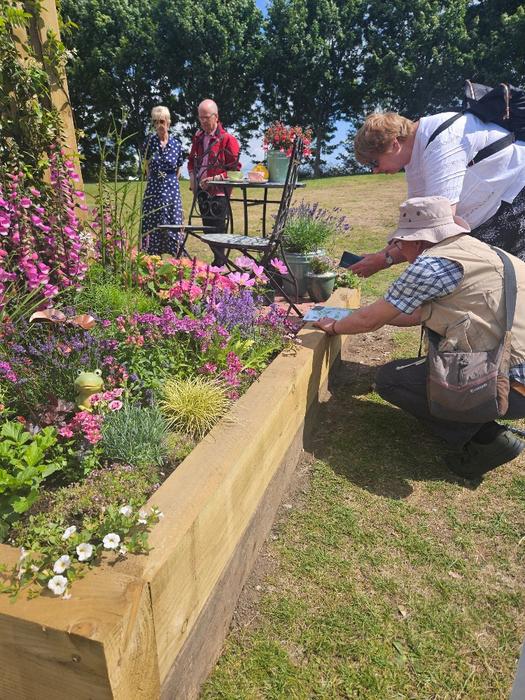
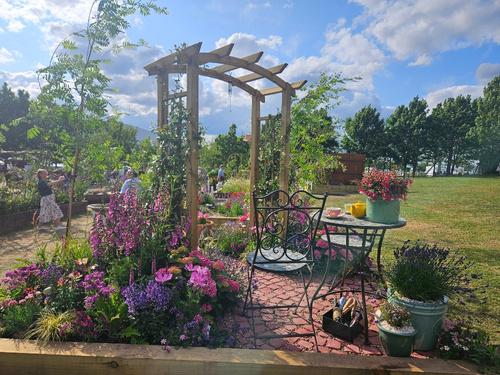
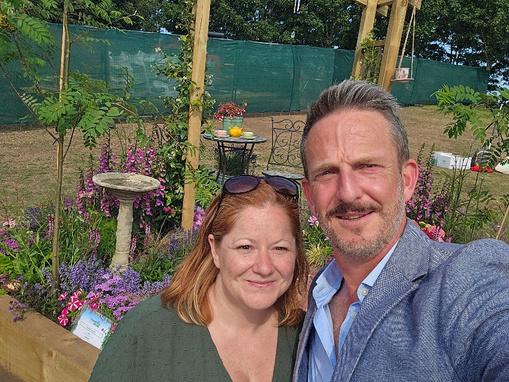

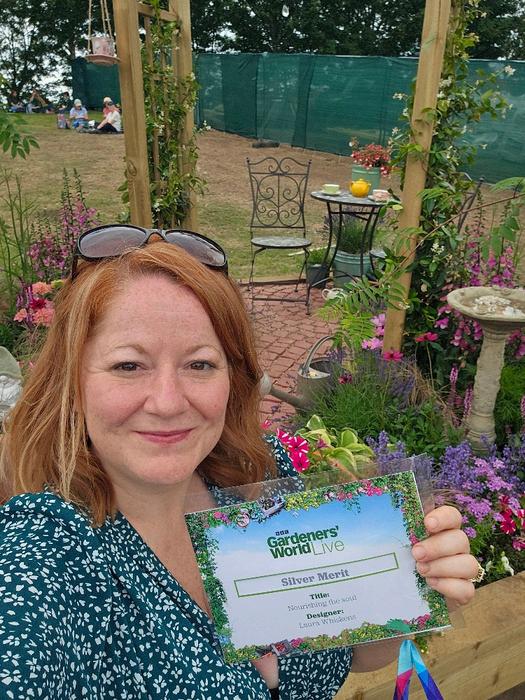
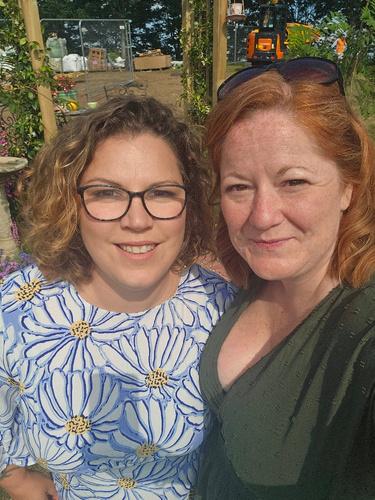

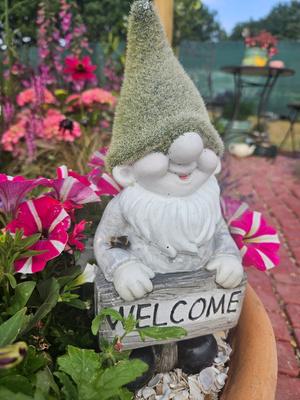
The takedown of 'Nourishing the Soul 'was emotional for me Saying goodbye to new friends, and friends I had met in person for the first time after chatting online for years. It was so sad to see everyone's gardens slowly disappear and become empty plots of soil again. However, I take comfort and pride in knowing that the majority of my border has gone to the Marie Curie Hospice in Solihull! Four car loads of plants, including one of the rowan trees, and the Bradstone red brick path from the border have gone to this incredible hospice in memory of my mum, Marie. The other rowan tree is planned to be donated to my town council in Coleshill, and the rest has come home with me as a memento of the most amazing 9 days!
Ben said to me that the show medal (I got a Silver Merit, by the way!) would be nothing compared to seeing the public reaction to my garden, and he was 100% right I lost track of how many times I was asked if I was a professional garden designer! It was also surreal and wonderful to meet people who said they follow me on social media, or read my column in the local paper or my articles in Garden Folk Magazine! But the best experience? It was having my partner, my step dad, my big sister, and my 5 month old great nephew come to the show, and being able show them what I had created for my mum, and as a thank you to Marie Curie Hospice
BBC Gardener's world live will be an experience I never forget.
A huge round of applause for Laura!
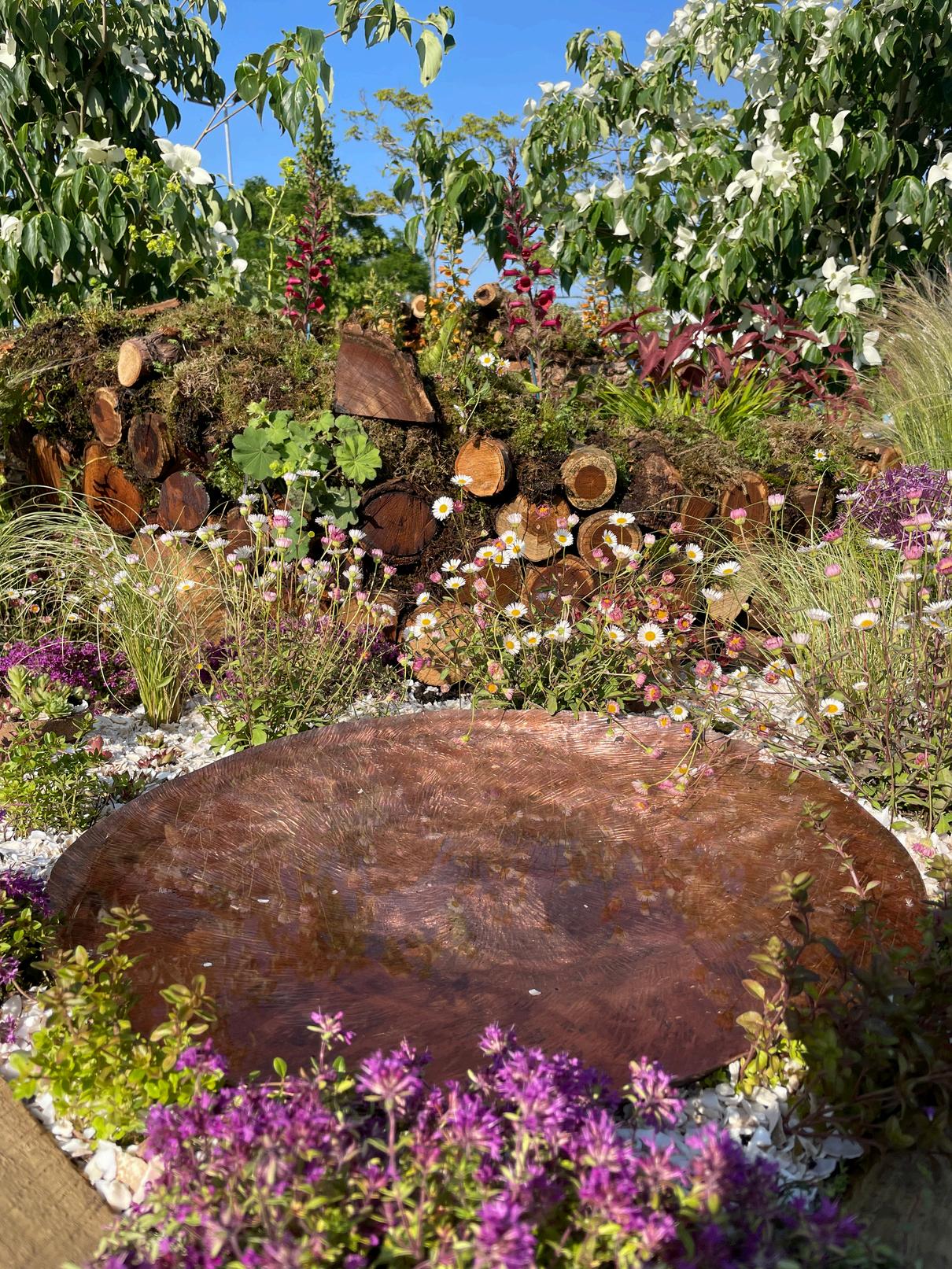
‘After the End’ ‘After the End’
Finally, the build arrived, and so, barrow by barrow, we loaded the logs into our cars, the build arrived, and so, barrow, loaded the into our cars, which was not made any easier by the fact the wheelbarrow had a flat tyre Or that I not made any easier the fact the had a flat tyre Or that I was driving a lease car after a van pulled out without looking the week before But no a car a van out before. no matter Already exhausted, it was time to get this garden going matter. it time to get going.
PhooCredt LauaWhiskens
For borders you get four days to get the garden built, including making any adjustments like getting Carl, the guy with the digger, to dump a load of soil into the sleepers; finding wherever the trees had been left, figuring out if there was a water point (mercifully it turned out there was). I was a woman possessed with getting that spiral built and was itching to get into it, regardless of the pelting rain. I was quick to shoo off my husband and best mate, who wisely hung around for a bit and went to fetch coffee. BBC Gardeners' World Events' Horticultural Director, Bob Sweet, walked past at this point and, seeing me looking ever so slightly manic, soaking wet, clutching an assortment of logs with streaks of mud on my cheeks, quite possibly regretted giving me such a high profile position
Despite the rain, and the adrenaline, the atmosphere on site was brilliant All around me, people grappled with their own creations as the rain poured We offered each other advice, swapped plants, and made each other laugh
The volunteers at Middleton Hall & Gardens, where I work, had very kindly saved me several buckets of moss which, after weeks of being topped up with water, stank like congested drains But I’ll tell you this - stinky moss is pretty handy for making a log spiral look old To my astonishment, the spiral not only stayed put, it actually started to look pretty good On the second day, I started to place the plants and really only then started to believe the design was going to work. Bob kept on walking past (I was on the route to the loos) and on each visit he looked a little bit less worried.
By AlexValk @wyldeandgreen
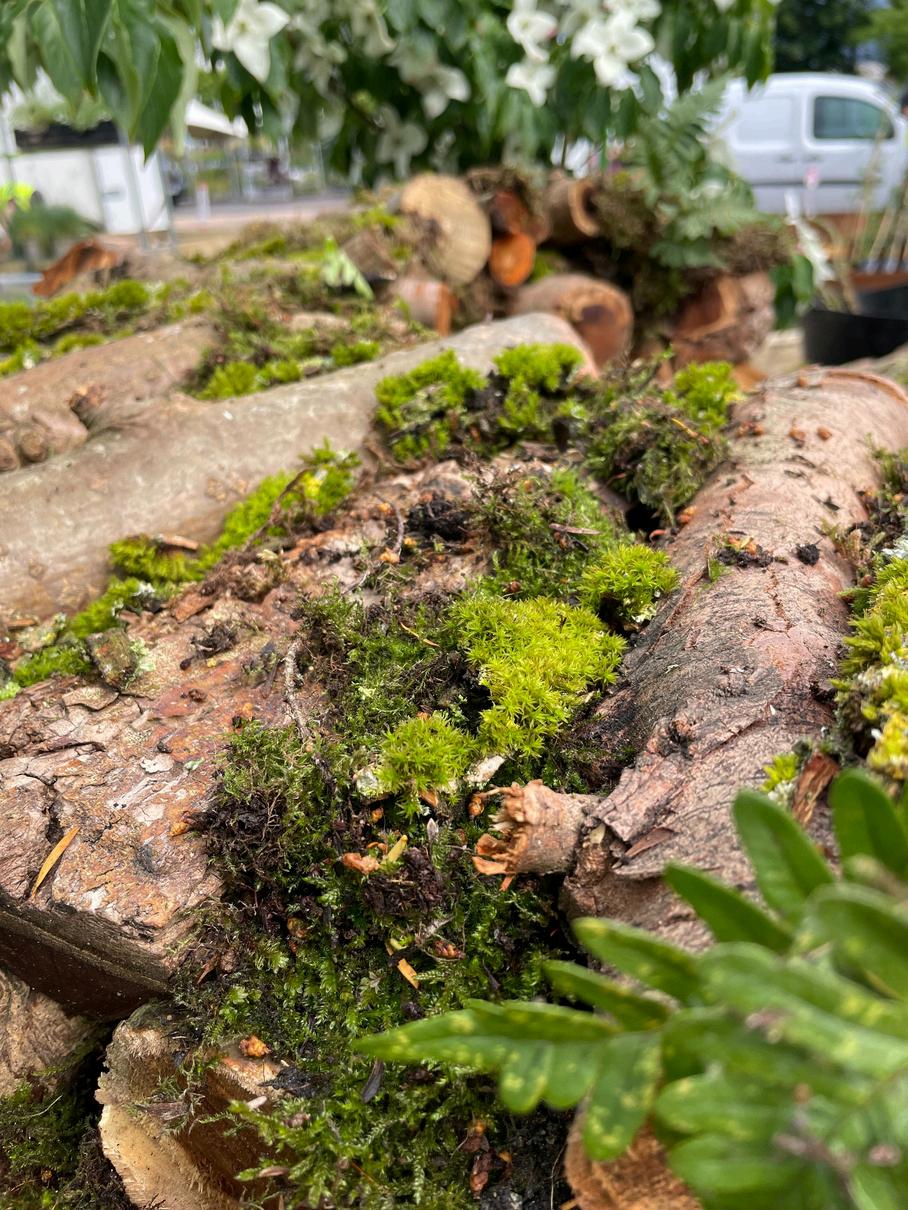
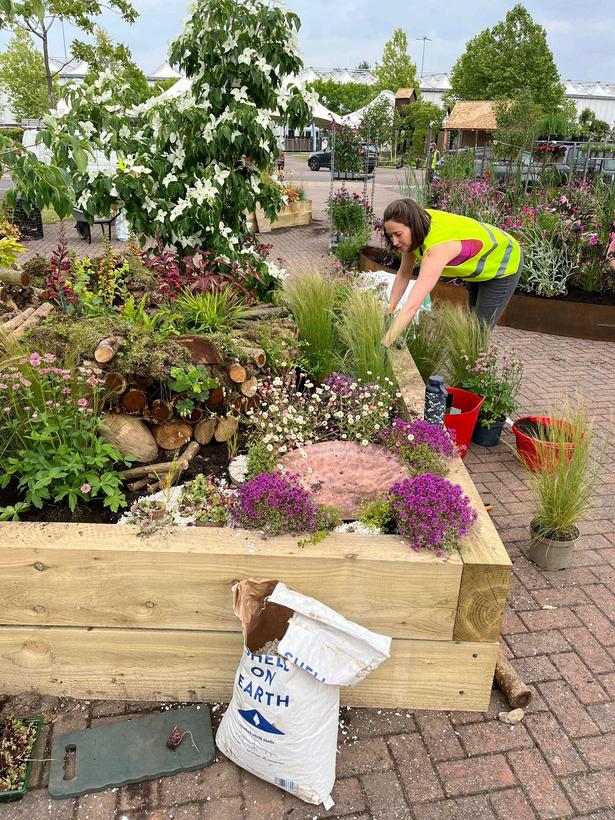
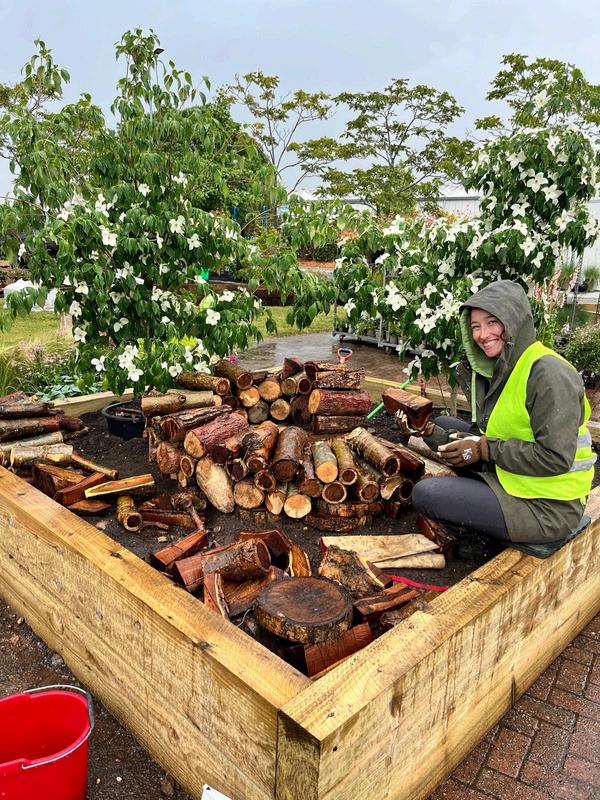
The little touches were a huge part of Alex’s garden.
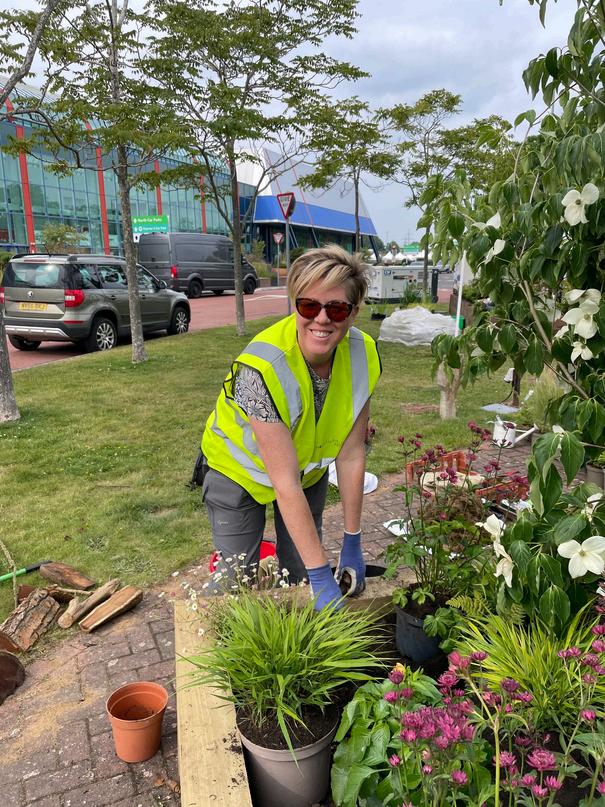
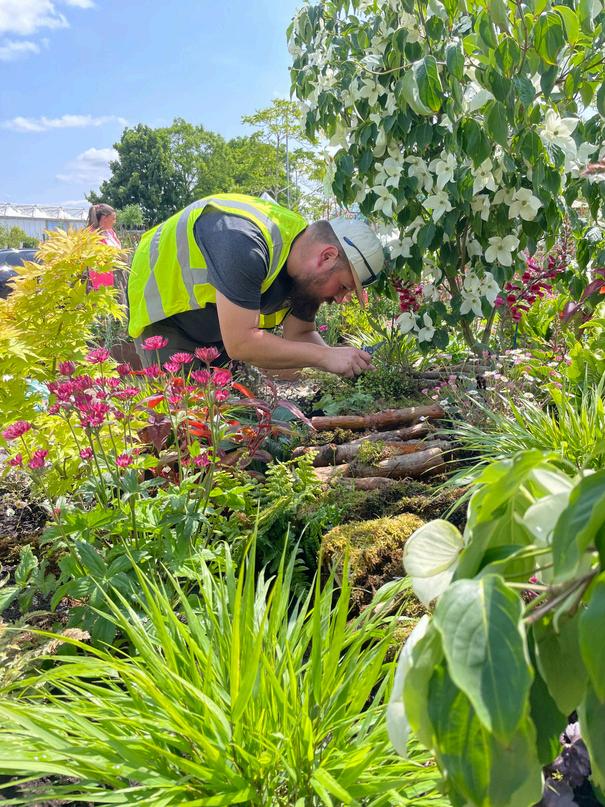
I set out to do this border as a bit of a one woman mission, partly because it was such a personal thing but mainly because I’m absolutely terrible at knowing when to ask for help But thankfully, there are some people in my life who know me well enough to help me anyway My long suffering husband Mike pulled out of a stag do to become chief log transporter and my general post-show build carer; My sister Becky took the kids for one day, my friend Kirsty on another. Adele came and helped me move trees and generally hold my hand. My fabulous boss Daniel spent an afternoon fluffing plants and brought a surprise delivery of ice cream on the last day of the build. Katy came and fluffed plants on another day (plant fluffing, by the way, means removing all the dead bits and making it sit higher in each pot. It’s tedious, and takes ages, but is essential for show garden perfection); my sister helped me manage the plant selloff. Kate, who designed the fabulous Nectary garden, donated a bag of Shell on Earth. And my bevvy of new border and garden designer friends who also dropped by on their way to the loos gave moral support, kindness, and a lot of belly laughs
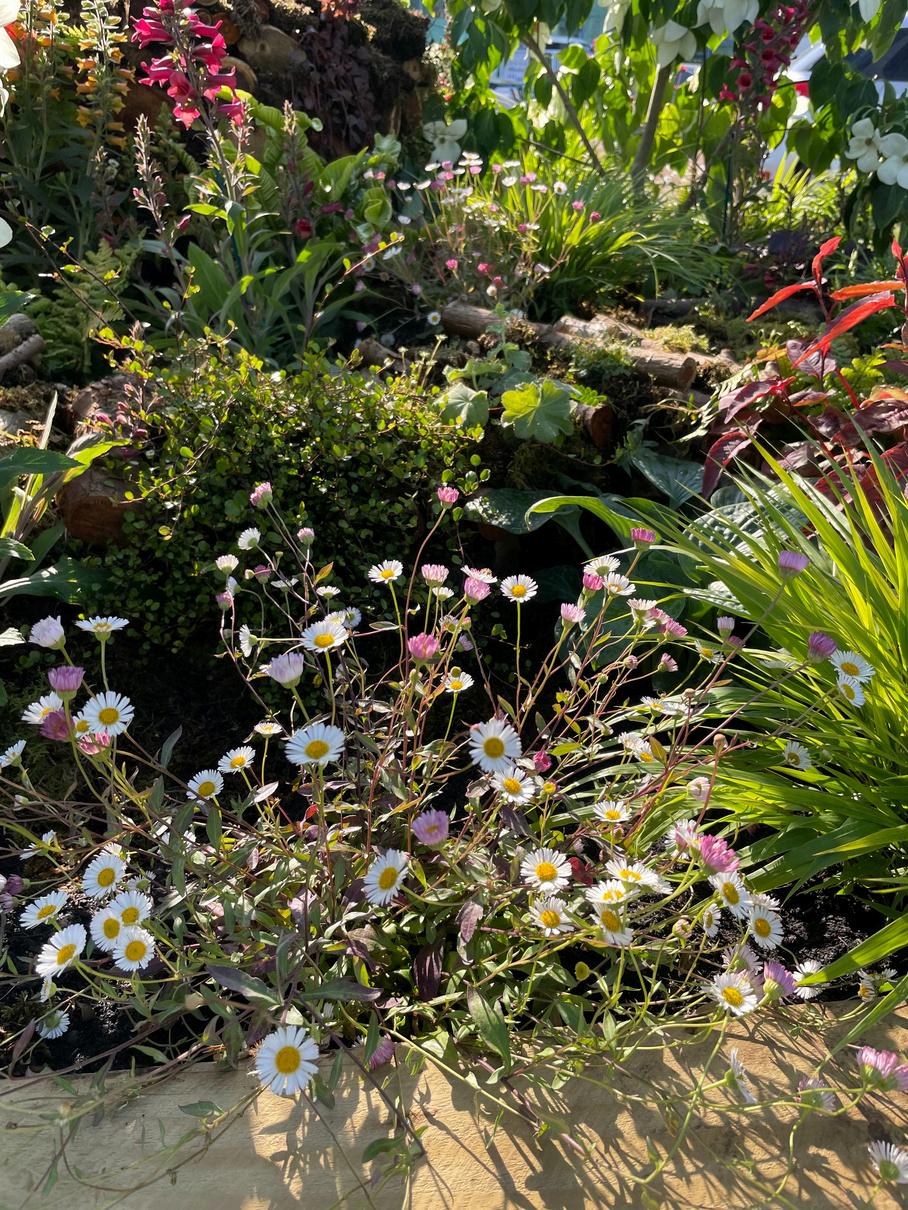
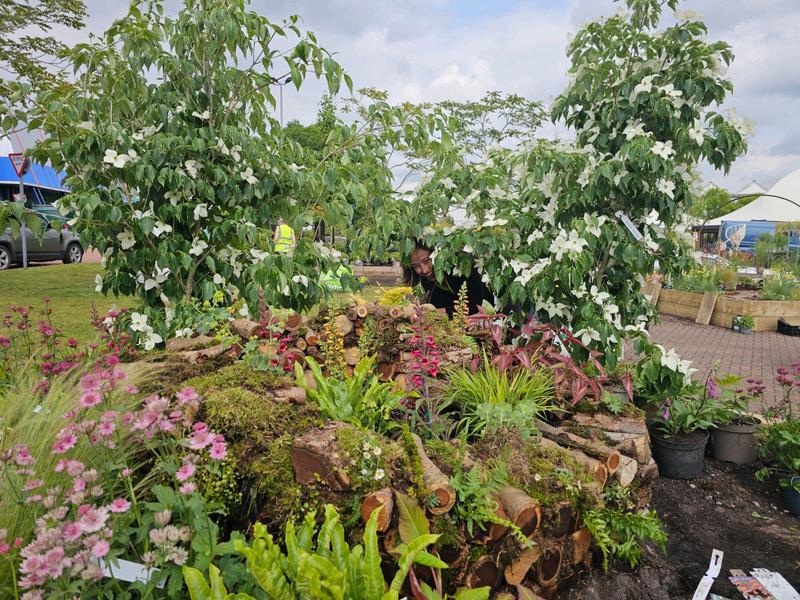
Erigeon amongst the foliage.
Helpers are a must have in show gardens.
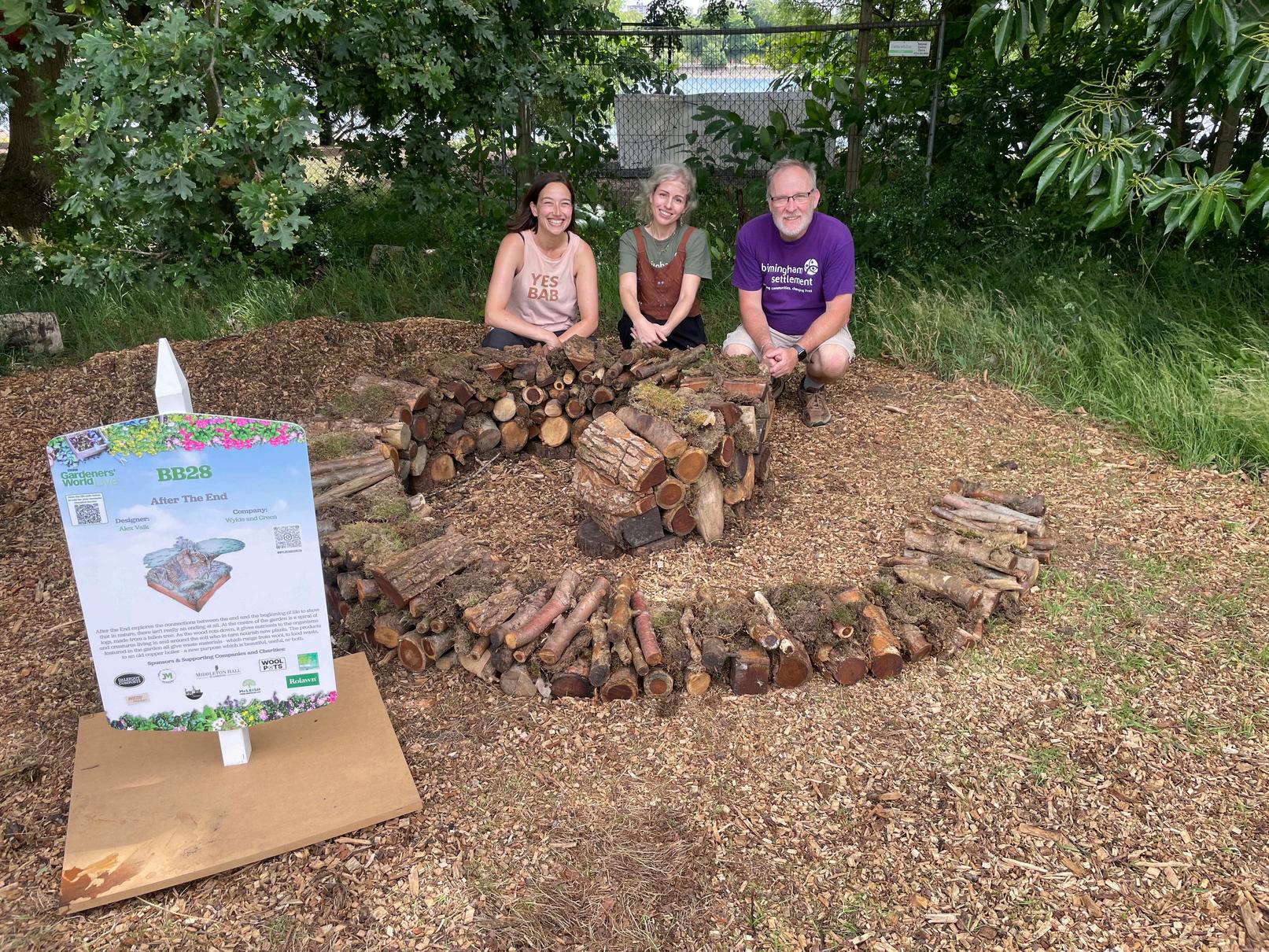
Alex has found a new home for her logs.

a magnificent acheivement for Alex!
On judging day, as I nervously circled the border spritzing the moss to stop it crisping up in the sun, Bob walked past again. ‘It’s very nice,’ he said. ‘It looks really artistic.’
As it turns out, the judges thought so too. They gave me a gold!
It’s been a few weeks since the show ended, and I am gradually starting to settle back into normal, non show land My sleep, which went from bad to pretty much non existent throughout the build and show days, has made a welcome and snoozy return The plants I didn’t sell have found places to settle in my own garden, and last week I rebuilt the logs at Birmingham Settlement’s Nature and Wellbeing Centre
I will do a show garden again - and probably next time, it will be bigger But I’ll be taking a year or two off first This project helped me to make peace with my grief, find a use for a load of dead wood and explore the new beginnings that come when life in all its forms comes to an end Next time, whatever the garden is about, I want it to be absolutely bursting with beauty, colour and joy. Because beauty, colour and joy are there in every garden, and every life, if you look hard enough for them. And now that my spiral is finally laid to rest, I am absolutely ready to find them.

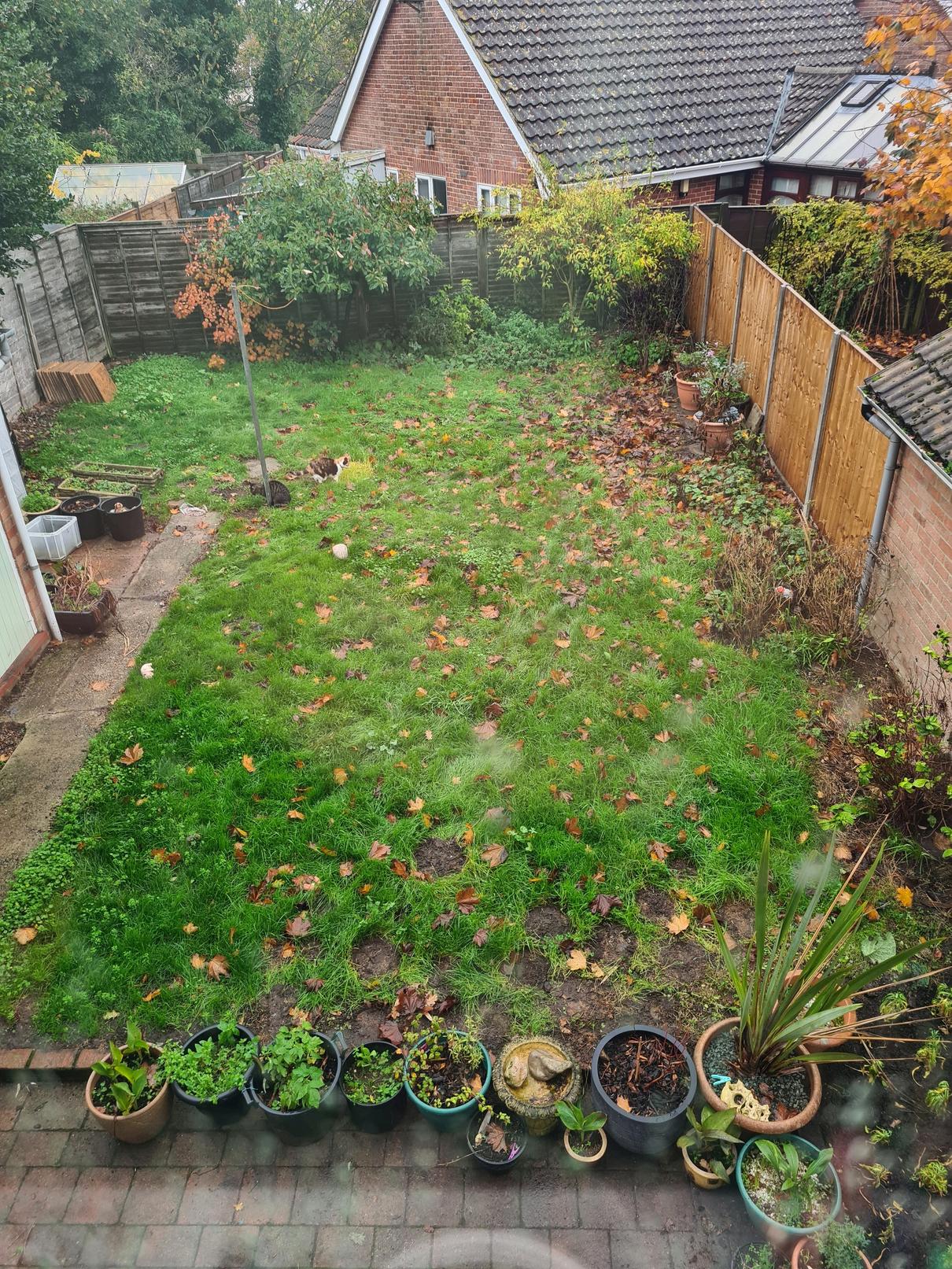
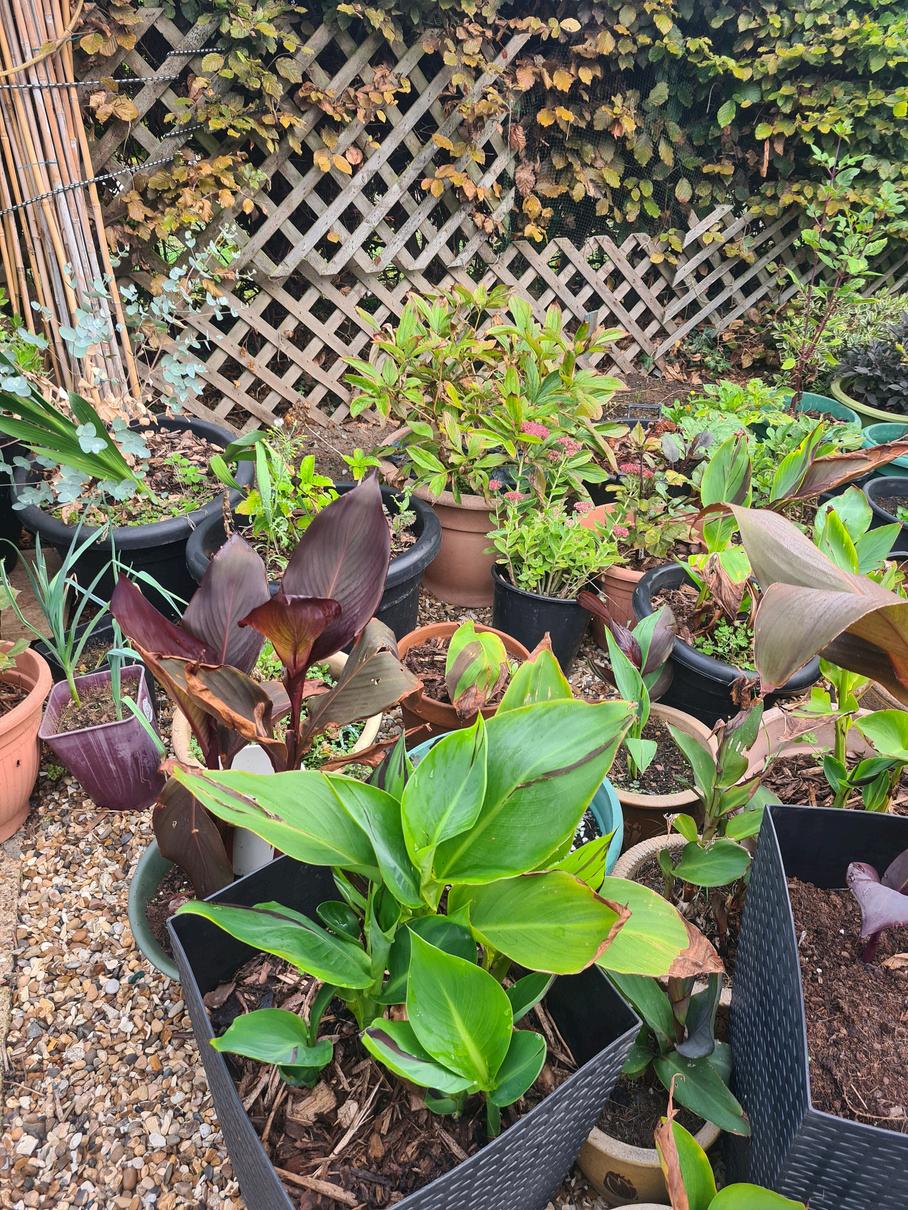
In England and Wales, around 37% of us rent our homes, but sometimes we are reluctant to put effort into the garden because it is not ‘ ours ’ However, it is possible to create a beautiful garden in your rented home and still take it with you if you need to move

I have rented homes all my adult life, so I am truly stuck in the renter's trap I long to own my own garden About seven years ago, I started exploring container gardening so that I could have a garden that makes me happy
When I moved into my current home, the garden looked like a stereotypical renters' garden: a patchy lawn, a few well-established shrub plants, and a patio in desperate need of weeding When we met the landlord, I asked if I could put a veg patch at the end of the garden. I had a plan of what I wanted to do, and I made sure they were fully aware of what I wanted and how I planned it to look. I am fortunate that my landlord agreed to this. Naturally, I got to it straight away. Unfortunately, at previous properties, I have not been so lucky, and this is where container gardening has changed how I garden in my rented homes.
Firstly, find an area you want to create a feature border in. This can be on the grass (Don’t worry, grass will always grow back if you ever leave, and a few patches of turf are not that expensive should you need to replace it) or on a patio similar to what I have now Next, you need to get yourself some pots Pots can be costly, and my best tip to save money on them is to search Facebook marketplace for people giving some away or join the local Freecycle groups Once you have your pots, you can start planting and planning
By AmyWest @amys allotment adventures
Hostas work magnificent in pots.
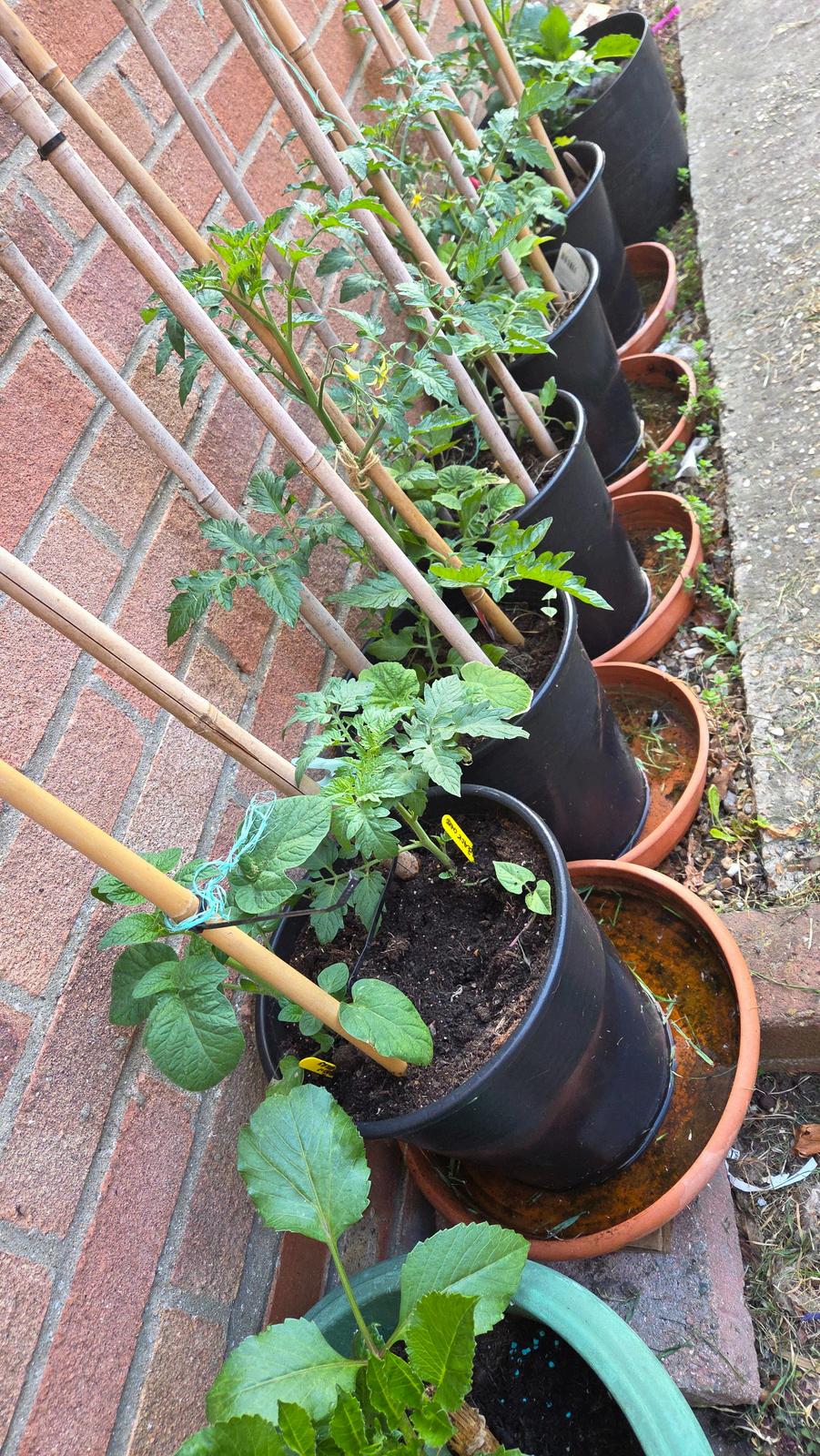
things like straightening the edge and keeping the lawn tidy will also help you feel more relaxed in your garden
I hope these ideas have inspired you to enjoy your rented garden Don’t be afraid to approach your landlord with a detailed idea of what you want to do and even show them a budget if it’s a big project They may not agree to the costs, but you might be able to create something small but meaningful
Remember, it might be their house, but it is your home, so enjoy it whilst you are there.
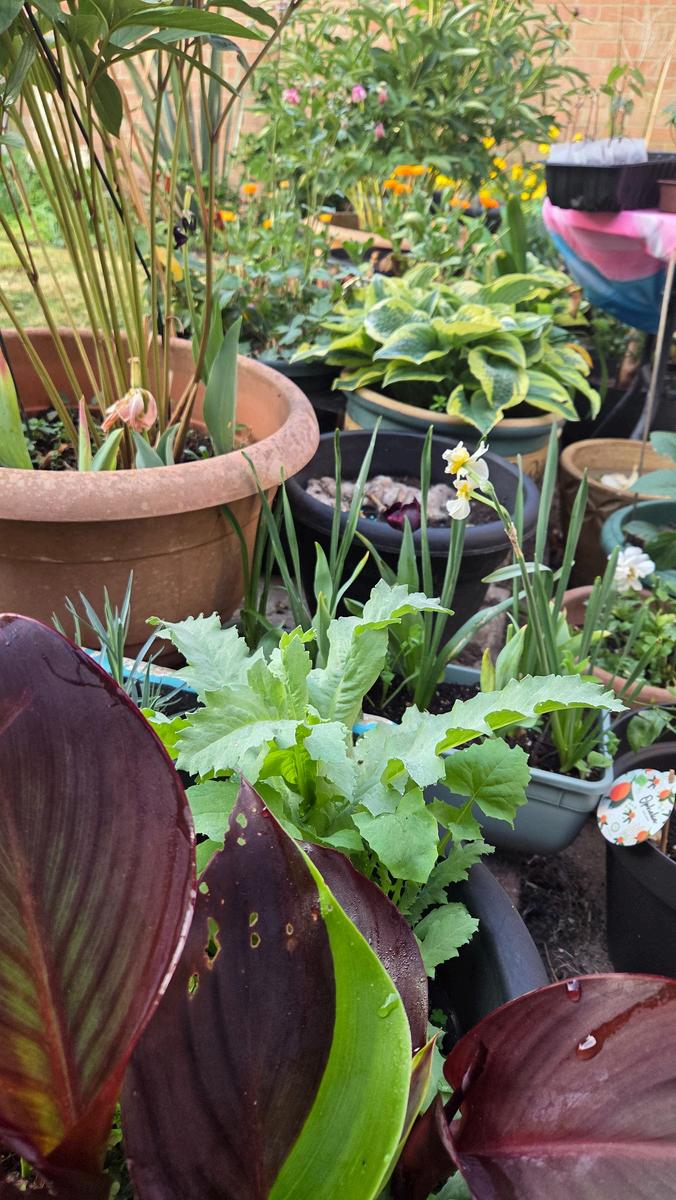
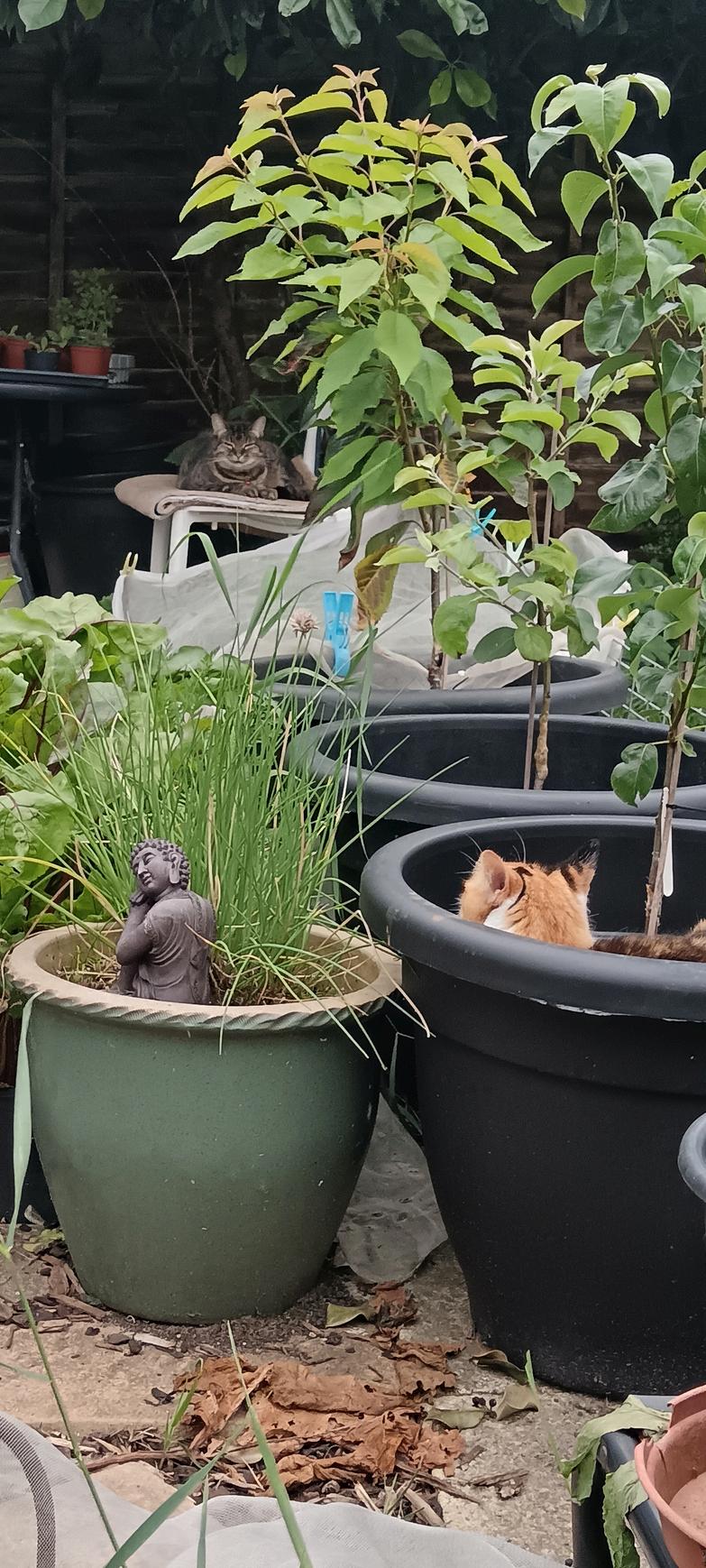
Foliage doesnt have to be just green.
The cats are definitely happy with this garden.


...and help us keep making the Garden Folk Mag
We appreciate all the support given to the magazine by all the Garden Folkour readers, writers, industry supporters and anyone else who cheers us on Running the magazine each month does incur financial costs though, so if you are able to contribute, either with a one off payment or by becoming a member, it would really help to keep the magazine going... and growing.

There are currently three membership tiers to choose from, all with great benefits








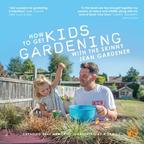







A growing space: A growing space: Update Update
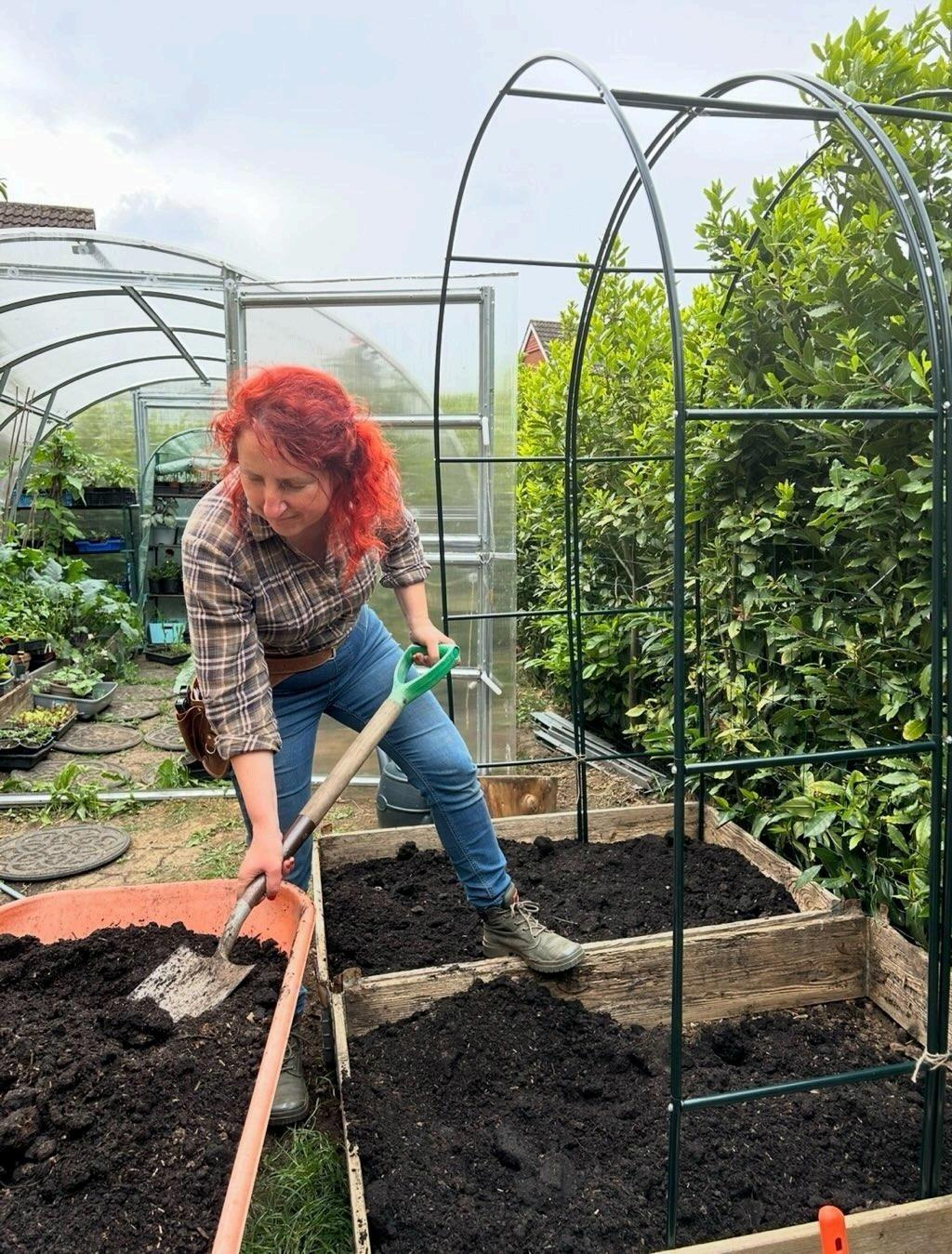
Wow! A few months ago, creating my own home allotment was a pipe dream. The piece of land at the side of my house was overgrown with bracken and bushes, and a dumping ground after building and dismantling two show gardens for BBC Gardeners World shows With a full time job as a Head gardener, a writer, a wife, a mum and running my own cut flower and floristry business, the vision of ‘The Good Life’ seemed set to stay just that, a vision. How would I ever find the time? But little by little, in small steps, the cumulative transformation has been incredible. All the hard work in the evenings and at weekends has paid off.
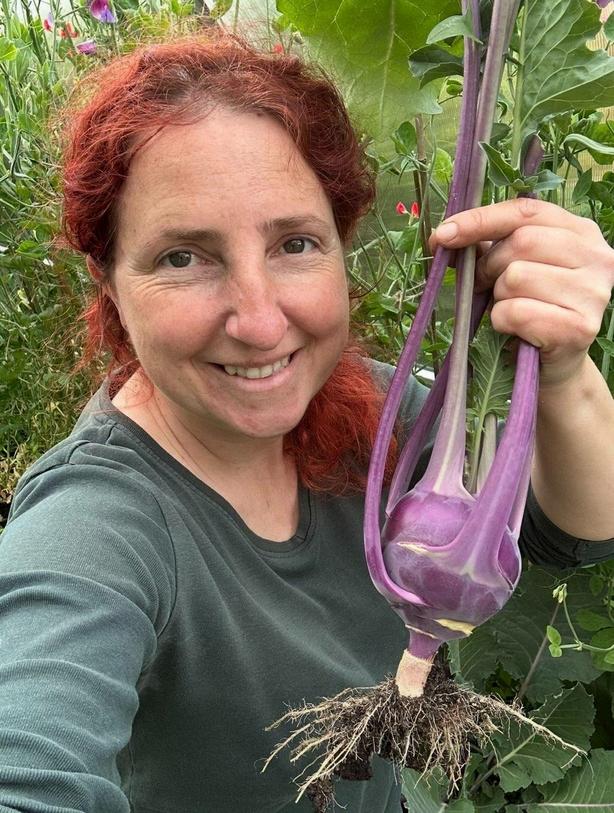
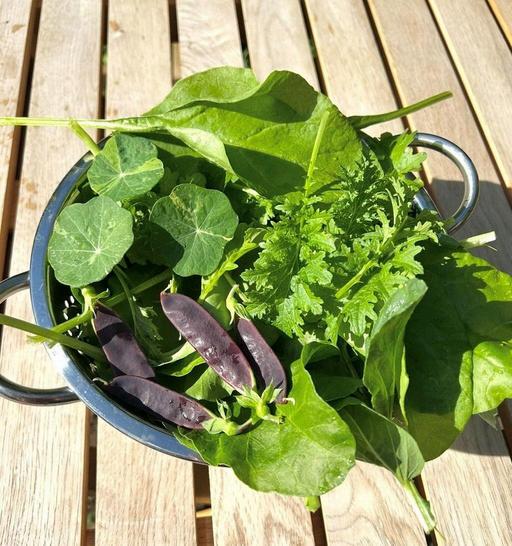
By Kim O’Brien

@garden.with.kim
Fast forward to early June and we hosted our first ‘plot-to-plate dinner party of 2025, the first of many I hope; where everything served for the starter and main course was fresh from the garden It was an absolute ‘pinch me ’ moment and the pride and satisfaction from serving a fantastic assortment of fresh homegrown food was immense This process has been transformative, not just of the land, but of me I’ve grown I’ve changed I’ve flourished as a person, as a gardener, as a cook and as a homesteader
I can appreciate that not everyone will have a spare, neglected piece of land kicking around beside their house. We are very fortunate in this respect that we have two separate gardens, one for flowers and entertaining; and one which is now our doorstep allotment; but I would urge anyone who is considering growing at an allotment to get one. It can seem daunting, but tackle it bit by bit and before you know it – you’ll have a productive space full of fresh, wholesome food that tastes like nothing else!
The kohl rabi has been amazing We have been eating that 3 or 4 times a week and it just keeps producing The leaves are fantastic in stir fries, and very dense, similar to spinach, so a small amount is very filling The peas and mangetout have been incredible – is there anything to match the freshness of peas as you shell them? I’ve been growing among other varieties, mangetout purple Shiraz from @thompsonandmorgan which has cropped prolifically, and its deep purple flesh is a great talking point at dinner parties too
I’ve been making salads which are a mixture of wild garlic leaves, roughly chopped (we have a wooded area in our garden with an abundance of wild garlic that we cannot get rid of – so we ’ ve decided to embrace it), beetroot leaves and stems chopped, radish leaves (some radish leaves can be quite spikey so you have to be selective here when harvesting) - I sowed a mixed variety so I avoid anything too bristly for salads, radish roots, mustard wasabi – this has a great flavour, you only need 4 or 5 leaves per portion for the perfect kick, nasturtium leaves for a peppery flavour, broad bean leaves – this is a controversial one in our household. I adore the flavour of broad beans, but I don’t adore the affect they have on certain members of my family (I will name no names here ) BUT, the broad bean leaves give all the flavour but none of the horrid after effects, so these are a huge hit in my salad My broad bean crop has been pretty poor this year, but I’m not worried because for me it’s all about the leaves anyway!
Kim is definitely happy with her Kohl Rabi.
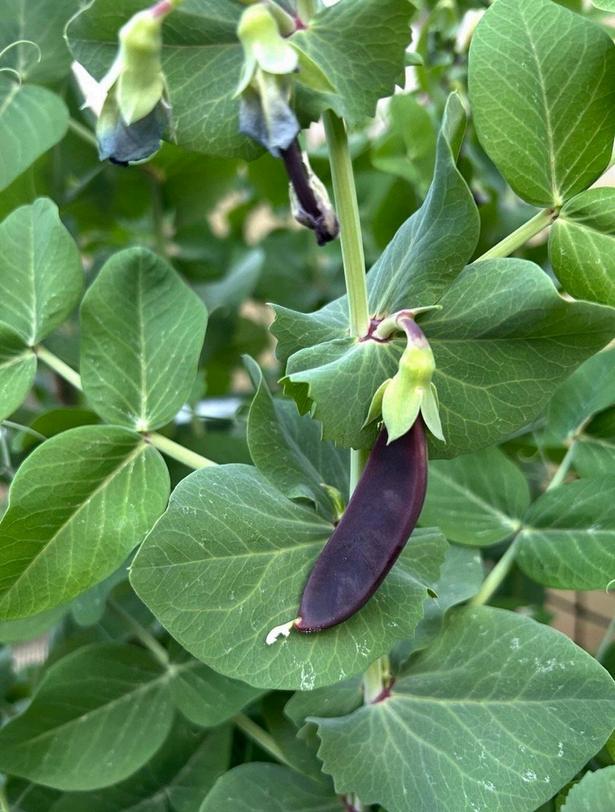
Peas don’t have to be just green!
I’ve also installed a squash arch which has Uchiki kuri from @collieflowers, Crown Prince, Turks Turban, a butternut variety called Hunter from @simplyseed, and a mystery squash that was part of a plant swap with @jamieslittleallotment but it’s lost it’s label so we will see what grows! The squash arch has been underplanted with yellow courgettes, green courgettes and my all-time favourite squash, Patty Pan gifted to me by my lovely friend Michele.
There’s a host of other veg too including sweetcorn, potatoes, carrots, onions, leeks, red cabbage, brussels sprouts, parsnips, runner beans, French climbing beans, French dwarf beans, snake beans (of course the seeds came from @kathryngrowsstuff), lettuces galore, mustards, tomatoes (15 different varieties including heritage), peppers, aubergines, herbs and a multitude of other goodies for plot-to-plate wholesomeness that are too good not to share I’ll serve up a collection of my favourite dinner party recipes next time!
Follow my growing journey on Instagram @garden.with.kim
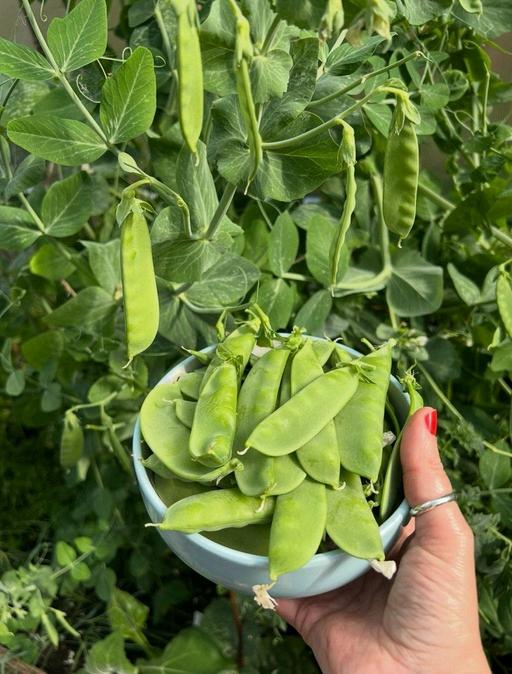
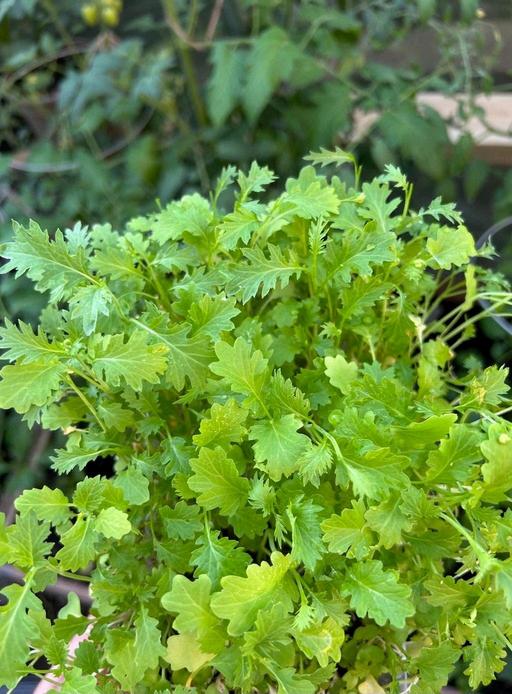
Have you tried growing wasabi before?
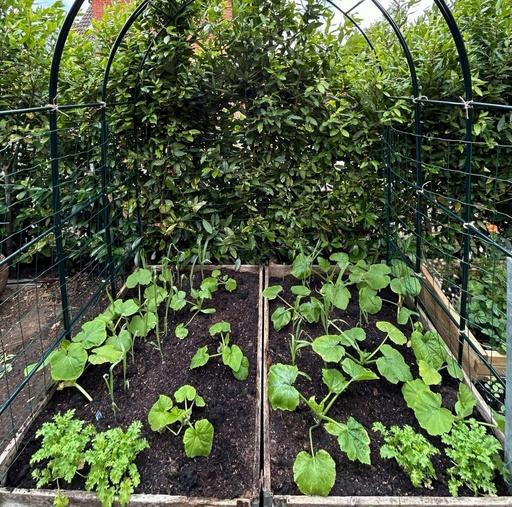
Are


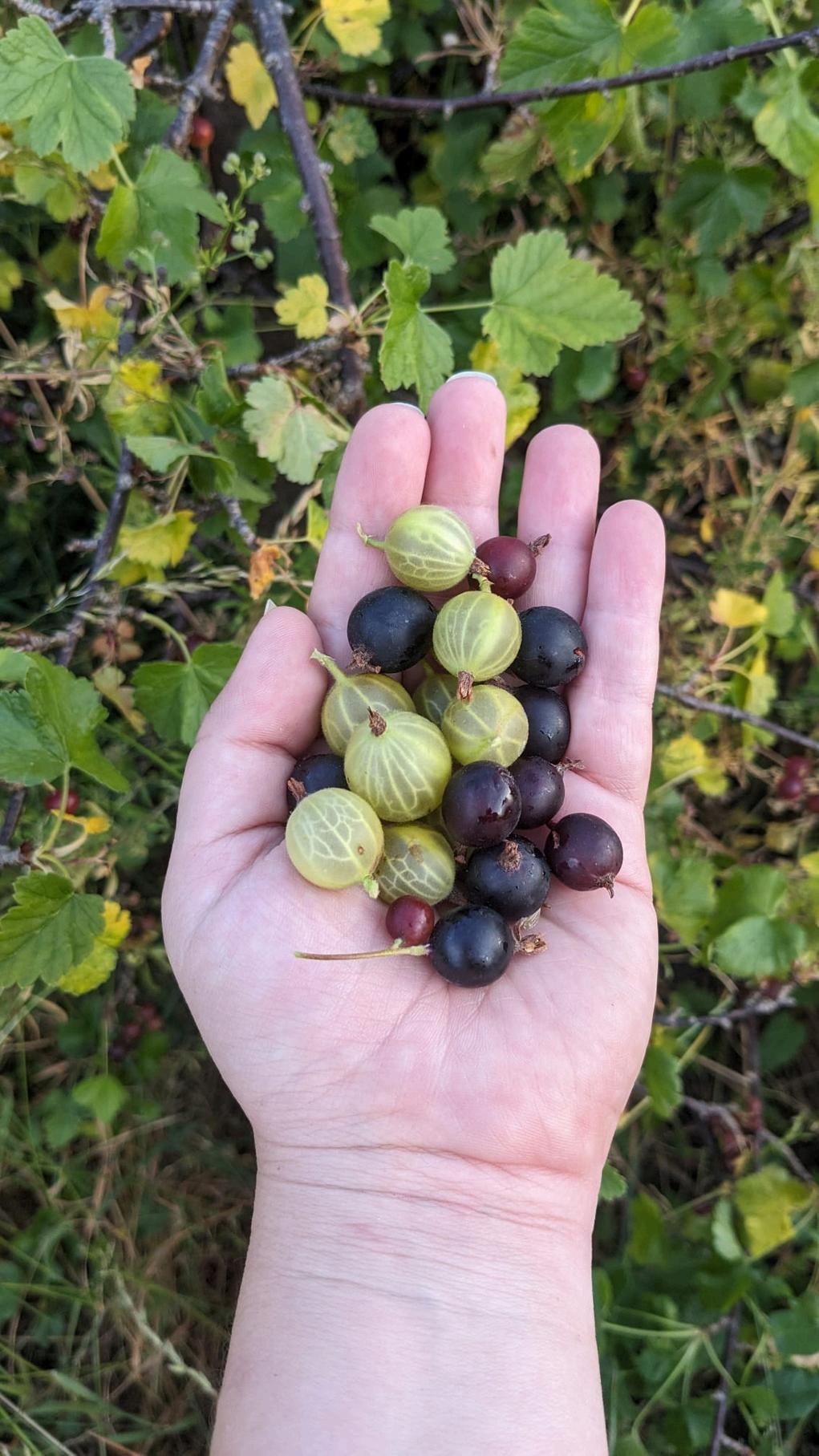

Photo Credit: Natacha Ramsay
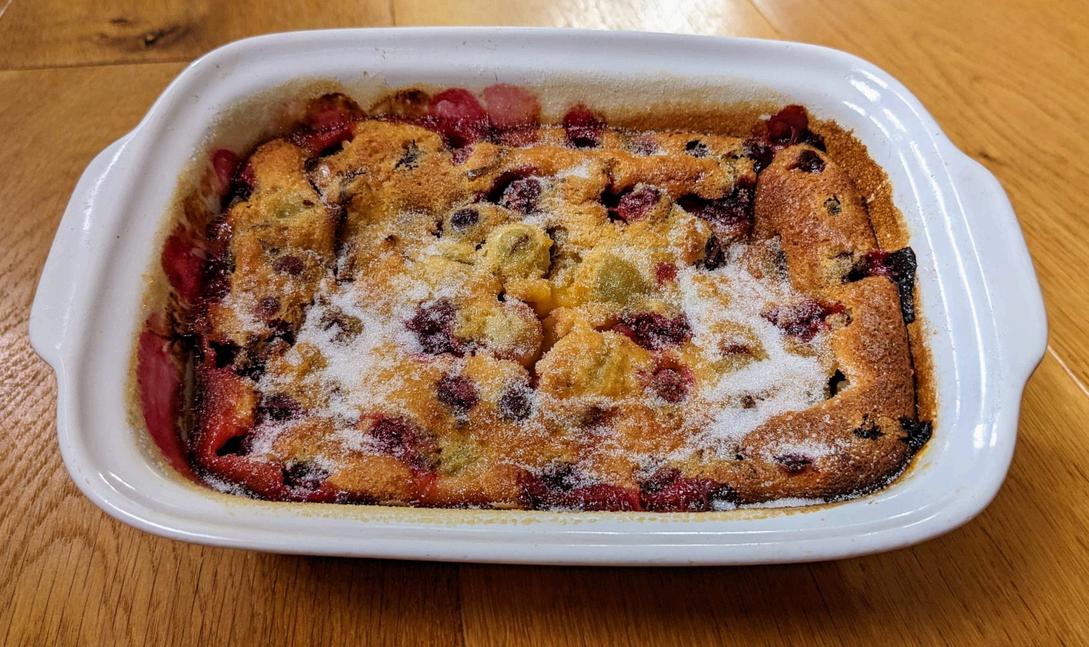
You could just dive right in!

1 In a bowl add your washed gooseberries (stems removed), 25g of caster sugar and 2 tbsp of elderflower cordial Then set aside in the fridge for a couple of hours
2 Preheat your oven to 180c
3 In a pan melt 10g of butter Using a pastry brush, brush the melted butter over the inside of your dish covering all sides and the base.
4 Then sprinkle 2 tbsp of caster sugar turning and tapping the dish until the inside of your dish is evenly coated (This step is crucial in order to get that crisp clafoutis edges) Pop in the fridge
5 In a large mixing bowl add the flour, sugar, salt, lemon zest, vanilla extract, eggs and egg yolk and whisk until smooth. Gently add the milk and cream a little at a time until you form a smooth batter.
6 To create a ‘beurre noisette’ (which is going to give this cake a real depth of flavour) place 75g of butter in a pan and heat on the lowest setting for roughly 10 minutes, or until it foams and turns a nutty brown colour. Take off the heat and pour into the batter whilst still hot, continually whisking until fully incorporated
7 Add your gooseberries and any of the juices they have produced into the batter and mix
8 Take your dish from the fridge and pour the mixture in (you don’t want to disturb the sugar coating at the bottom so don’t be tempted to redistribute the fruit once poured in)
9 Place in the oven for 35 minutes or until the knife comes out relatively clean
10 Whist hot, drizzle on 2 tbsp of elderflower cordial and leave to cool. Serve warm (not hot) with a sprinkle of sugar on top and some whipped cream.

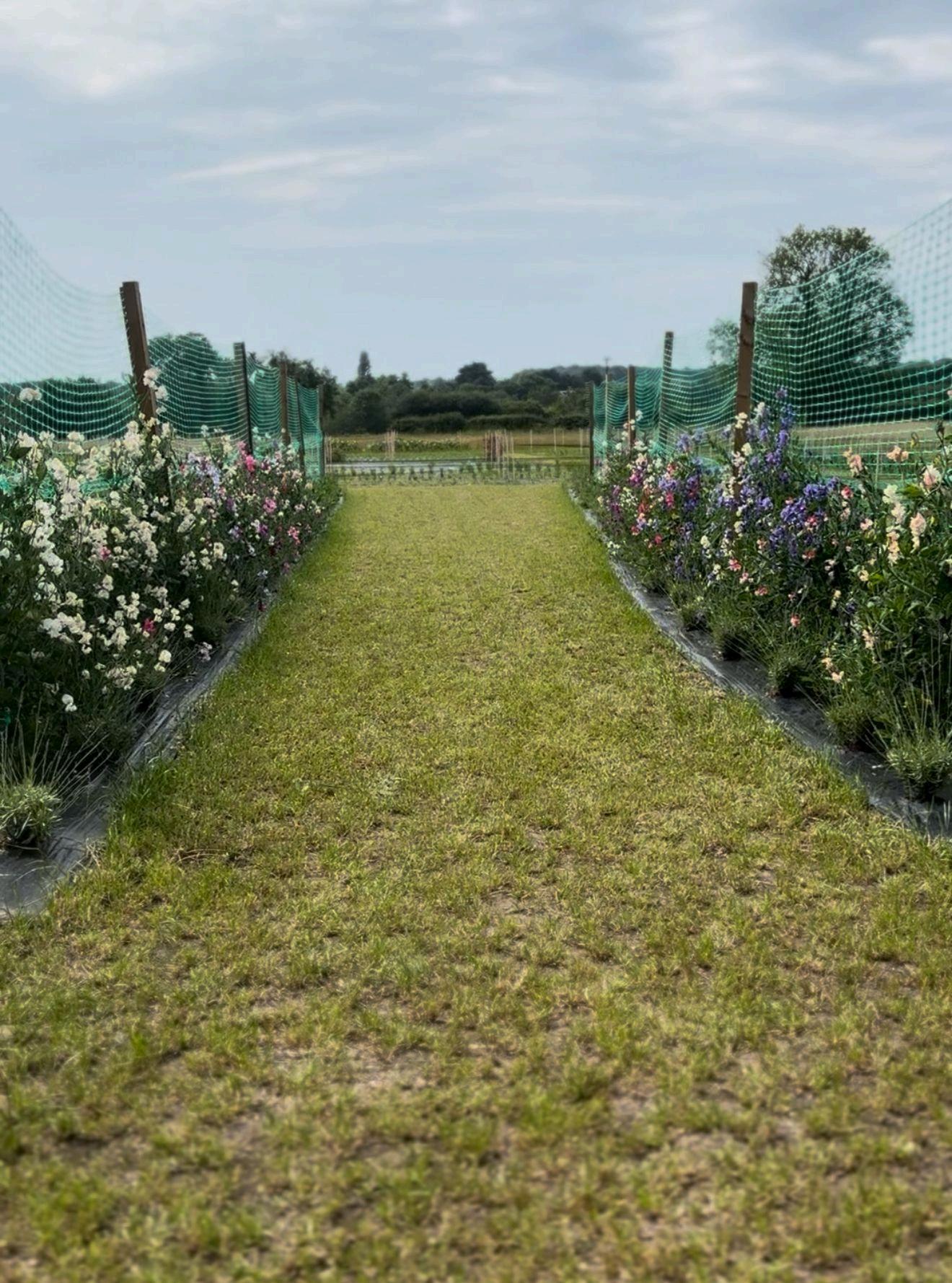
July 19th - Summer Hand Tie
Aug 2nd - Summer Hand Tie
P.S. I’ve just ordered a new shed! Jen’s Sweet pea selection is a thing of beauty.
Aug 16th - Flower Crown
You can visit the Wirral Flower Farm for pick your own, weddings and workshops (see dates below) : Check out Jen’s website for all the courses available
Aug 30th - Summer Table Setting Workshop Sept 20th - Autumn Table Setting Workshop
June has been a bit of a whirlwind! Welcoming customers to the farm for PYO for the very first time was nerve wracking The perfectionist in me was furious that not everything was perfect – after all we are a working farm! This is what I keep telling myself anyway, when trying not to compare myself with a national trust property with their armies of gardeners.
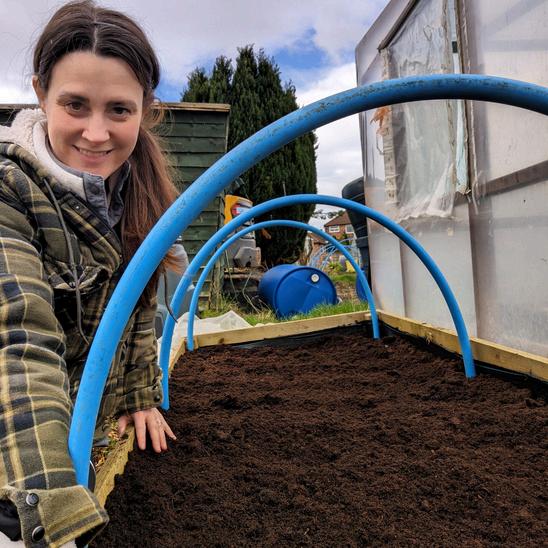
By Jen Howarth @life on
Our focus is on cultivation and our product is beautiful enough on its own.
Then there was the matter of letting people run riot with the snips, which at first was enough to make my blood run cold. But everyone has done a pretty good job overall – a few wrong snips here and there but nothing life threatening! A bit more education here and there needed, absolutely Some tweaks there for me too!
And the benefits have totally outweighed my fears Seeing families, children, even a reluctant chap who wanted a bunch for his mum ’ s birthday (I’d sold out of the grab and go, ready made bunches earlier) so I handed him the snips and said, “ go get her one!” He then spent the best part of 45 mins carefully curating his bunch for his mum, I wish I could have told her the journey of her flowers – I’m sure she would have enjoyed them even more knowing the time and effort he made to get them just right!
As we head into July, the next few weeks are looking forward to September/October as I now start to get to grips with successional sowing. Yes, that’s right it even takes place in the flowery world. Turning over beds to get the next few plants in place and grown before the first frost touches them. I have a feeling this is going to be habit forming –recognising when to let go of the beds that are no longer pulling their weight etc It’s all a learning curve and another process that I’ve sort of started to figure out on the job Being able to maximise the growing potential of the season is going to be key to success
As you can probably tell – it’s been one of the hardest years of my life, but I’ve absolutely loved it I’m starting to panic less, have less anxiety about things growing, and leaning into the rhythm of my new space The field is teaching me that I must sing to her song, rather than the other way around I’m beginning to allow myself to fall in line with her tune
the lot

July with the holiday vibes and if we ’ re lucky a large dollop of sunshine too. In the flower garden this can be a mid point between the blooms of early summer and the start of those that will take us through to the autumn. This is also a point when we can start a new batch of seedlings- sowing biennials, late summer and autumn salads and vegetables to see us through to 2026!
Things to sow/plant
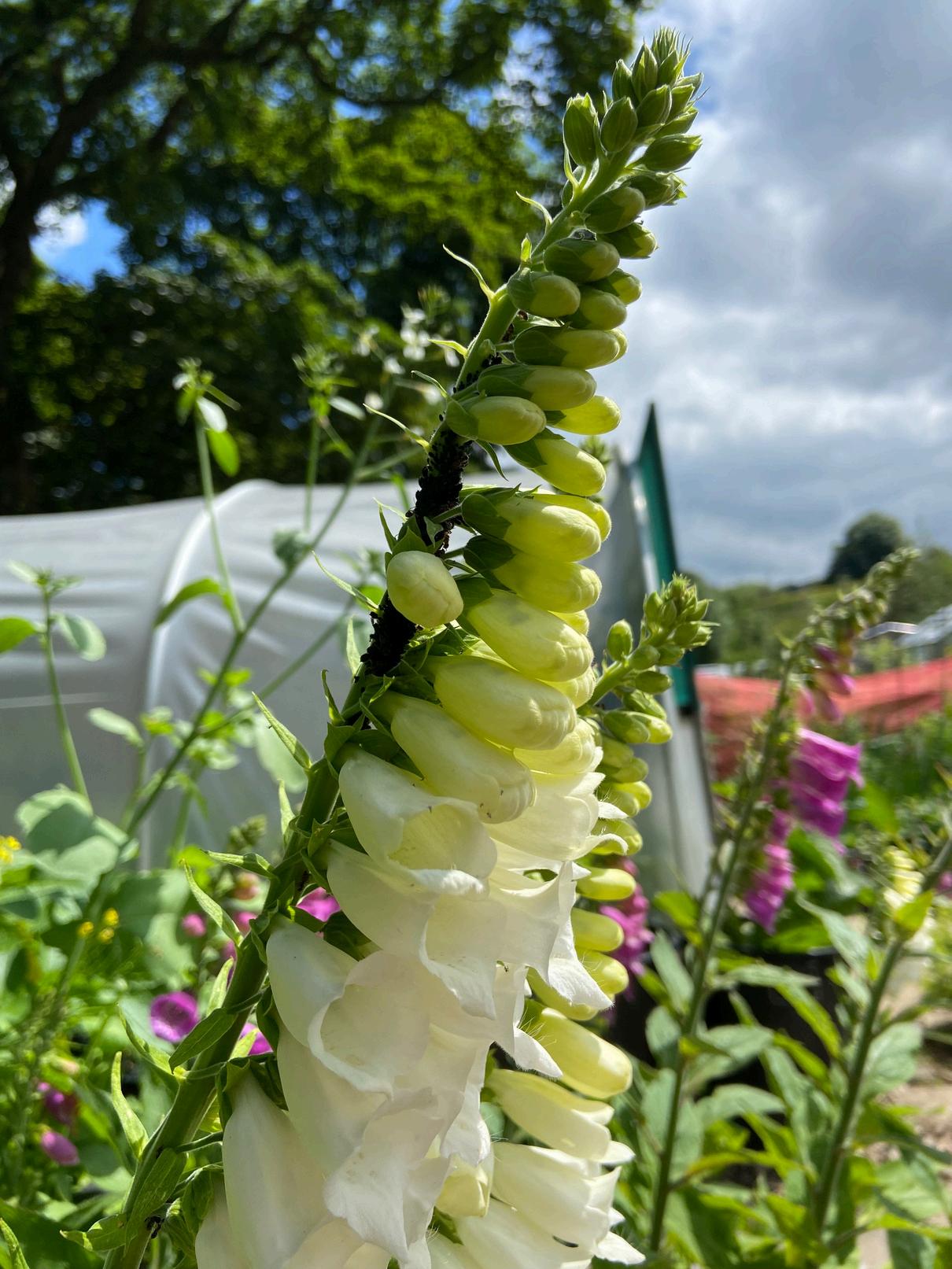

Foxgloves
Sweet Williams
Foxgloves
Aquilegia
Forget-me-nots
Echinacea
Hardy geraniums
Scabious
Zinnias
Wallflowers
Pansies/violas
Delphinium
Campanula Flowers
Onions
Come and join the @gardenfolkmag team for live garden updates throughout the month over on Instagram.


Garden Organic's popular podcast - The Organic Gardening Podcast - gives you monthly tips, inspiration and advice on how to grow, the organic way
Hosted by former Blue Peter gardener
Chris Collins and Garden Organic's Chief Executive Fiona Taylor, this popular monthly podcast has been a huge hit for gardeners and growers
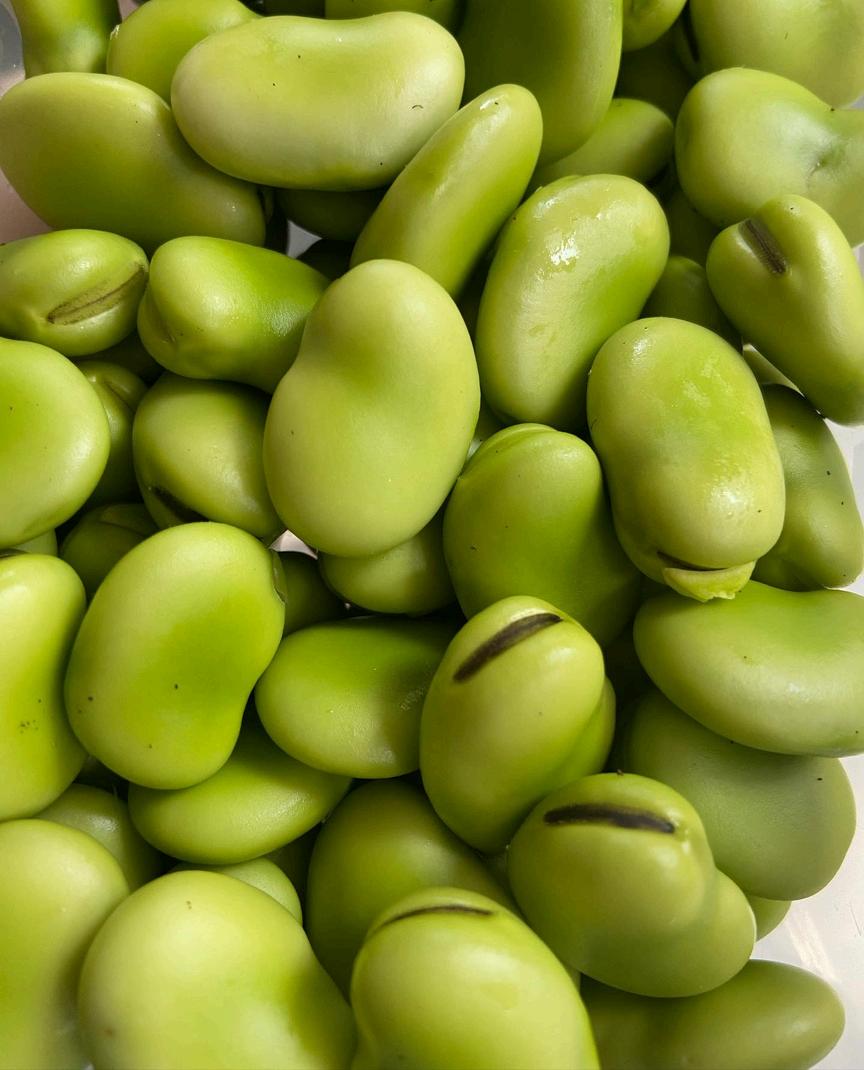
Get outside and enjoy the light evenings as much as possible this month weeding will likely be high on your agenda but spend time enjoying the garden too
Give plants growing in containers a liquid feed once a week
Have a plan in place for keeping your plans alive if you are going on holiday this month.
Stop cordon tomatoes when that reach the top of thier support or the roof of the greenhouse by pinching off the top of the main stem
Keep on top of weeds
Prune gooseberries and currant bushes when they have finished fruiting
Sow some late flowering annual flower seeds in any gaps you still have in the garden
Plant out winter crops such as leeks and brassicas and protect them from pests where possible.
Be on the look out for blight on potatoes and tomatoes
Check climbing vegetables are securely tied to supports. Pinch out plants when they reach the tops of their supports.
Offer to help out with watering your neighbours gardens and plots if they are away on holiday
Continue deadheading flowers for longer flowering.
Use the harvest in as many ways as you can and try to preserve some if possible.

This month we asked you:
“What is your favourite long lasting bloom?”
h l h f l
Snapdragons for me, bright colours, they self seed like crazy, masses of blooms and the bees love them too �� @happy place gardener
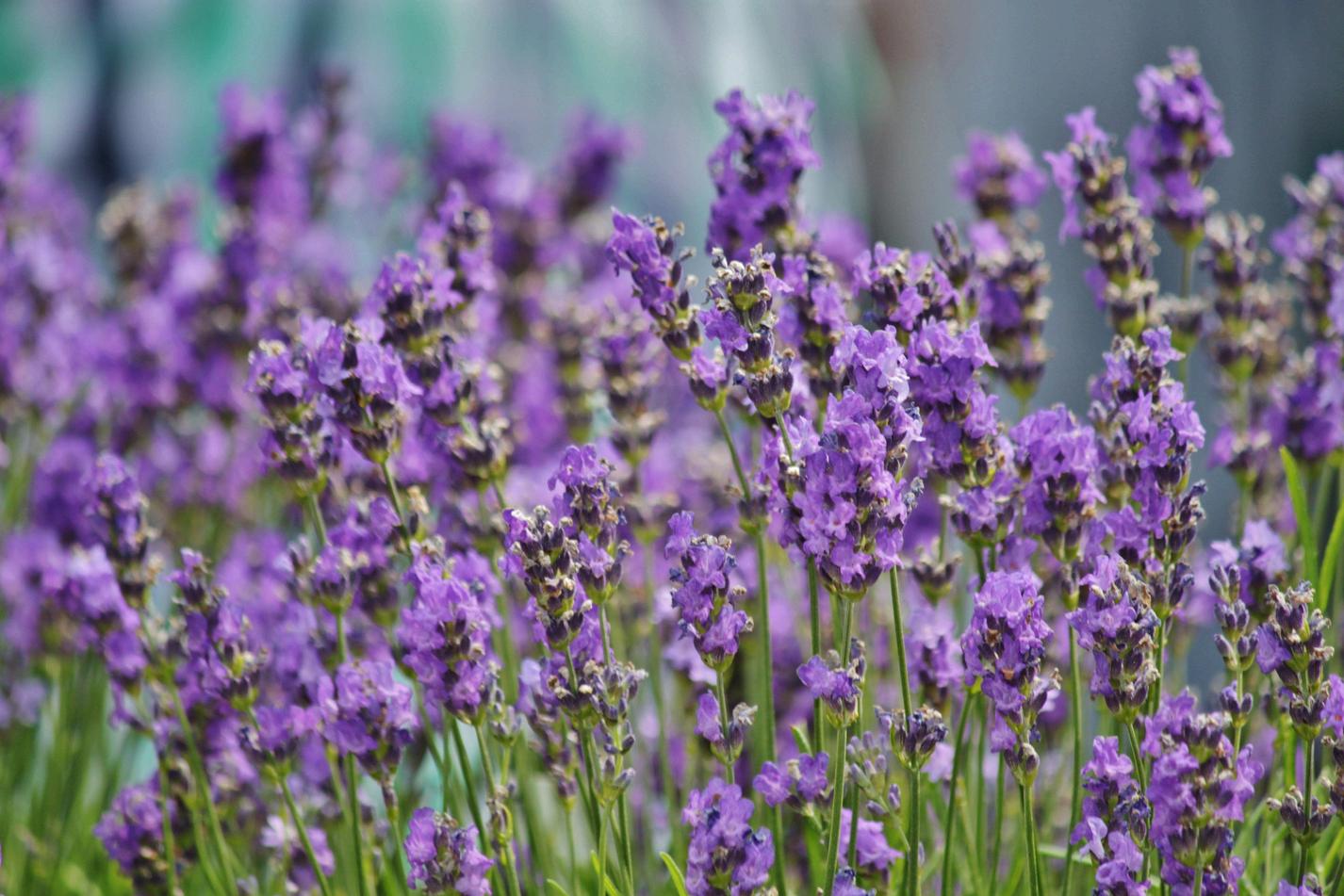
Cosmos at the moment for me �� @amys allotment adventure
At the moment verbena! Constant colour, holds colour really well when cut and doesn’t need any watering!! �� @theallotmentmum
Dahlias! Look beautiful in the garden or as cut flowers �� @sophs.mae.garden
For me it has to be lavender. This flower will always have a place in my garden. I have amazing memories of my Nana's lavender hedge, sitting watching the bees making it dance even when there was no breeze We would gather the heads as the flowers went over and make lavender bags to put in our knicker drawers Roses! They keep coming all year when you dead hear ��
@starof 72
Cosmos and salvia! Salvia smells like Ribena mixed with rosemary to me �� and cosmos is textured babe �� @lottieonthehill
Billy buttons, those happy golden globes amongst the flower bed always make me smile �� (also called craspedia globosa) @fiveminutegardener
Salvia!! They keep going and going @alexsgardenlife
Roses! They keep coming all year when you dead hear �� @theplantparlourgram
Chives! They just go and go especially if you use them @ thequietplace
Next month we want to know: ‘What would you pick from your garden for a picnic?’ Send us a message on Instagram or email

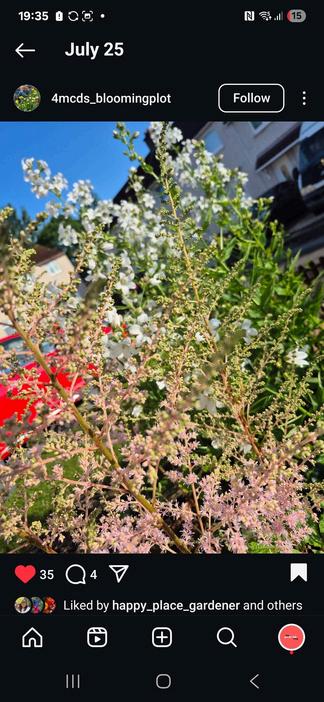
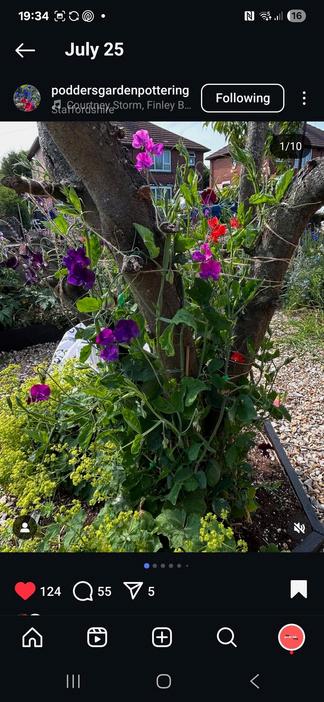
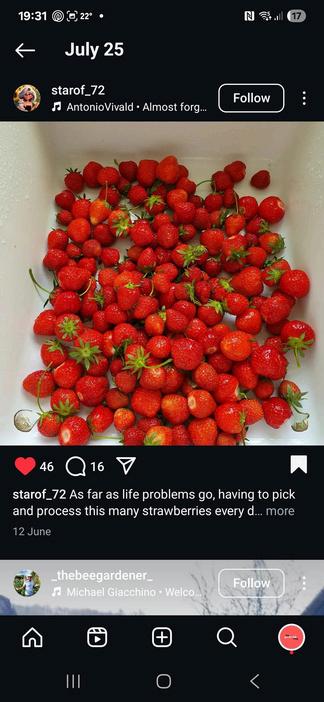
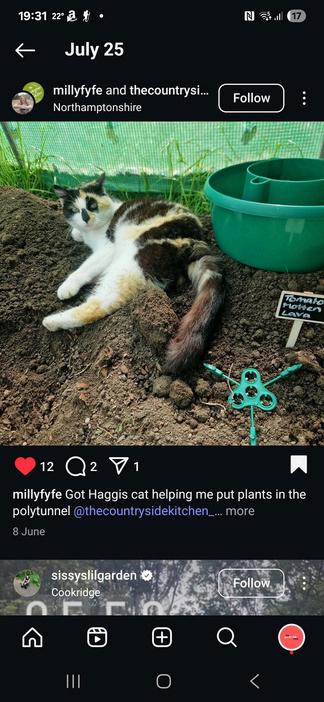
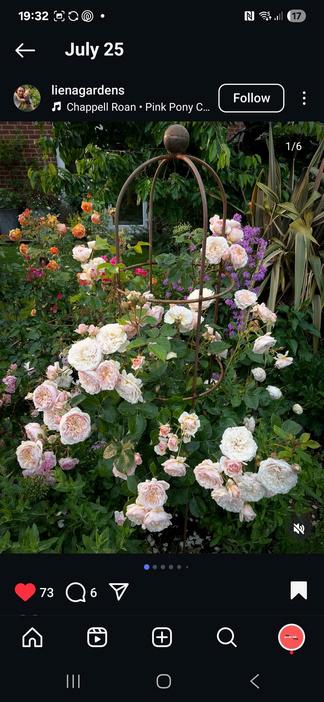
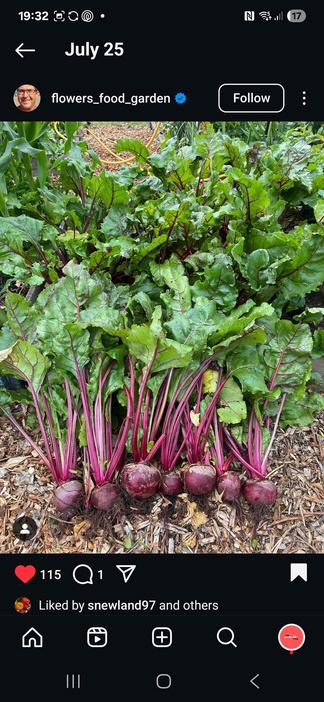

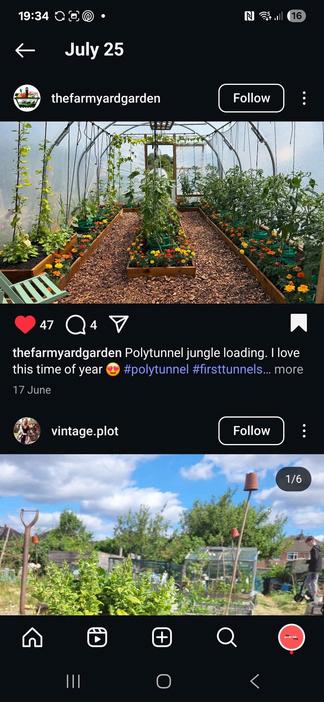
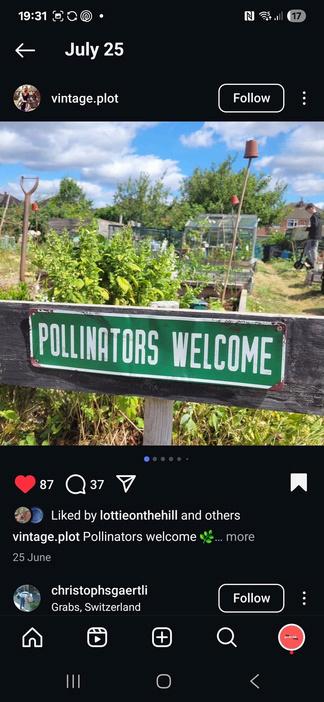
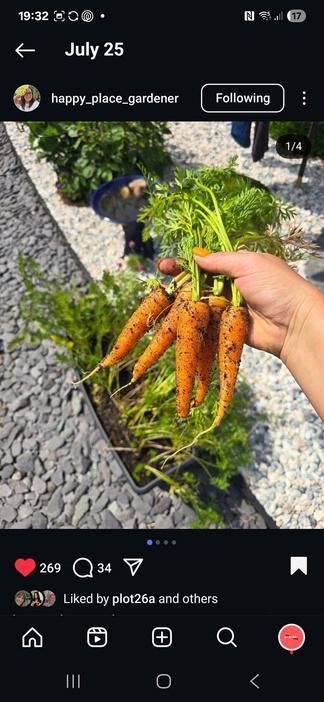
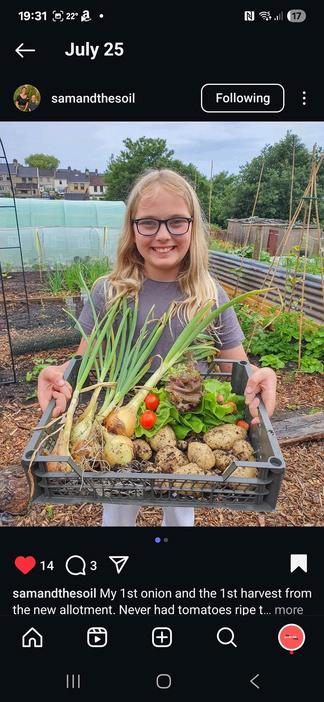
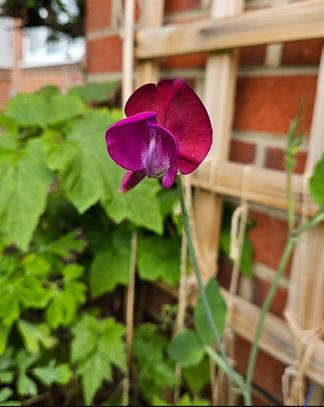



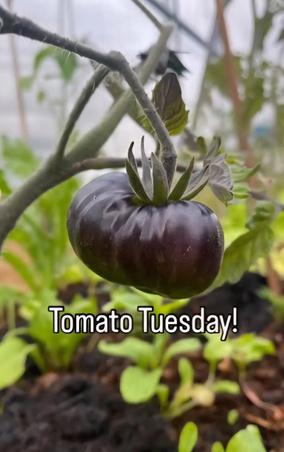
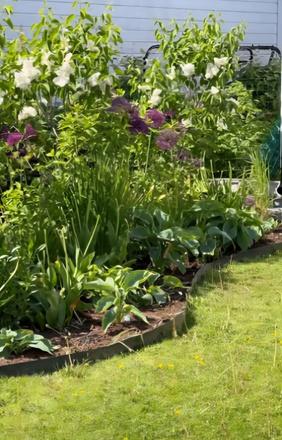

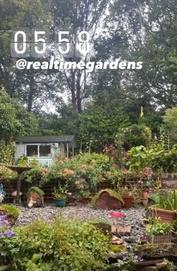

@4mcds bloomingplot @lienagardens
@poddersgardenpottering
food garden
plot
@starof 72 @christophsgaertli @samandthesoil
@millyfyfe @happy place gardener
@sophs mae garden










Set the date for August 1st for the next issue
